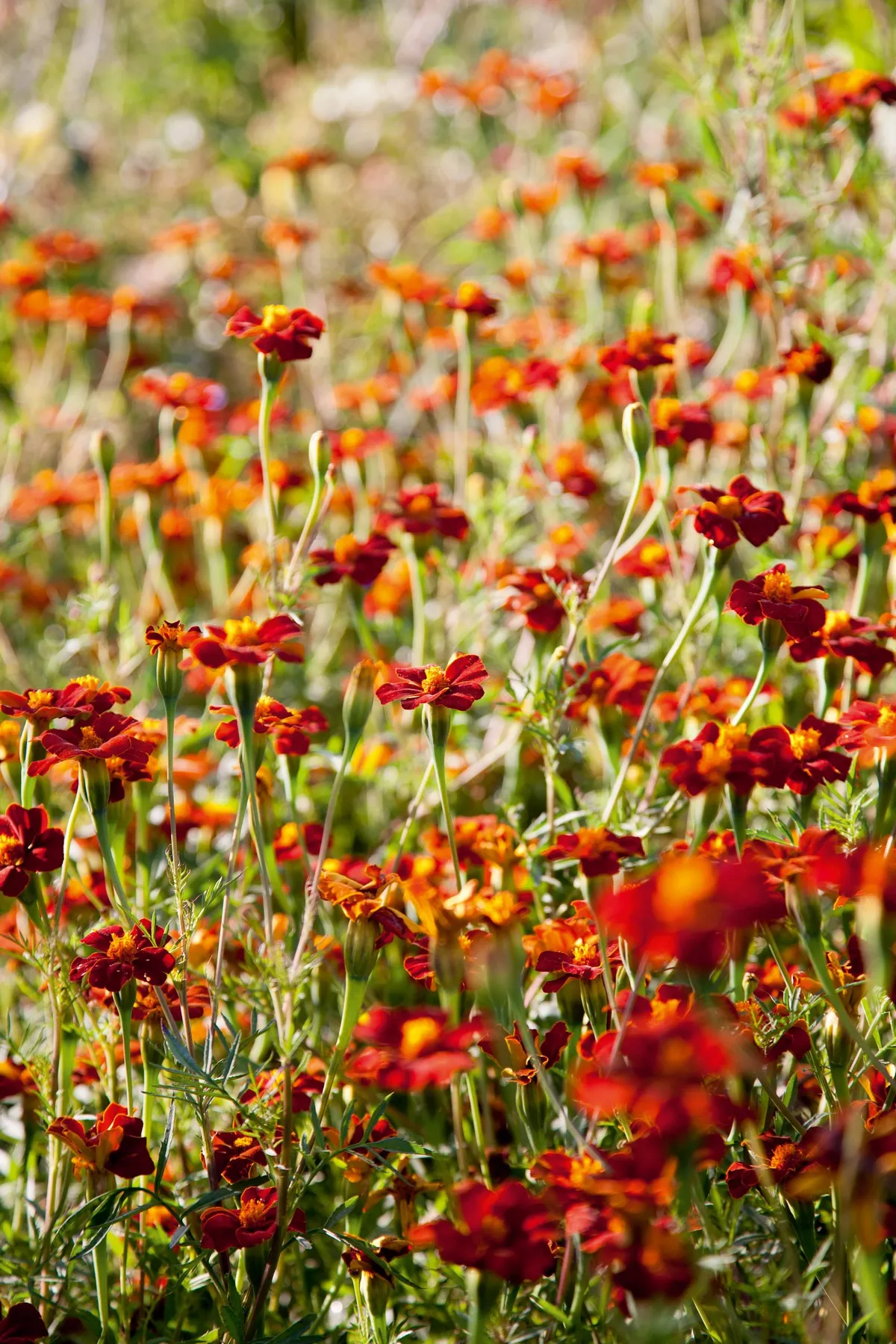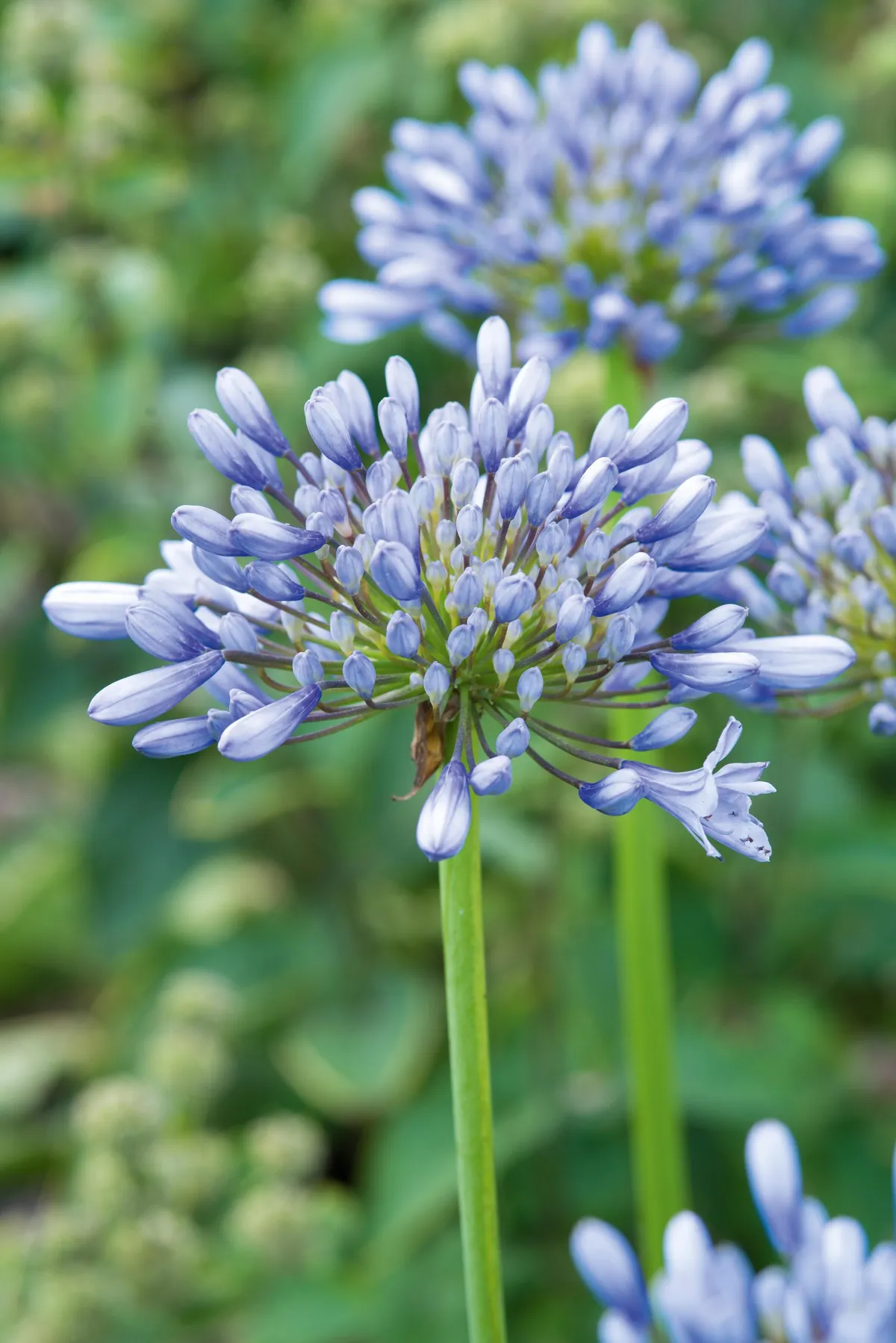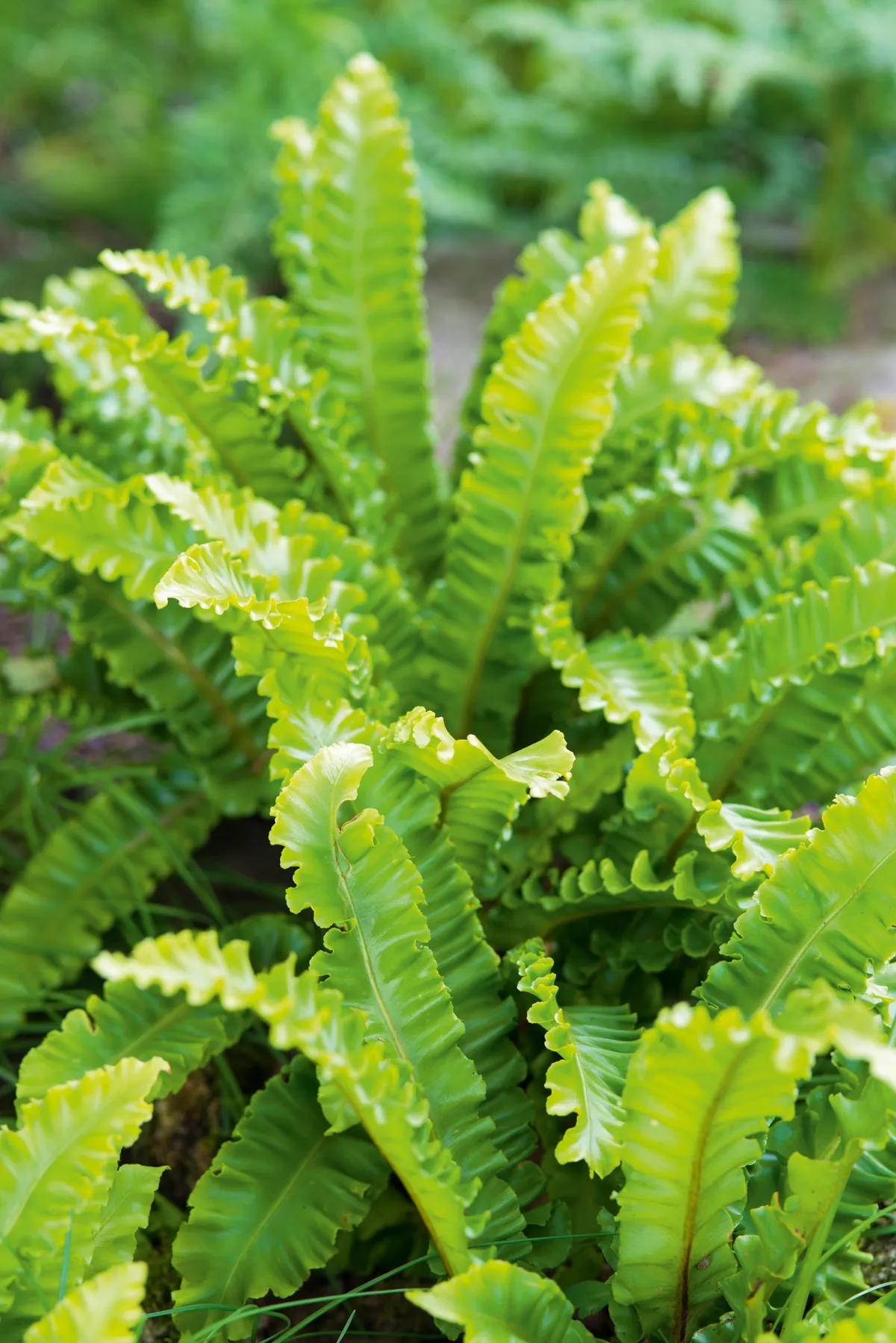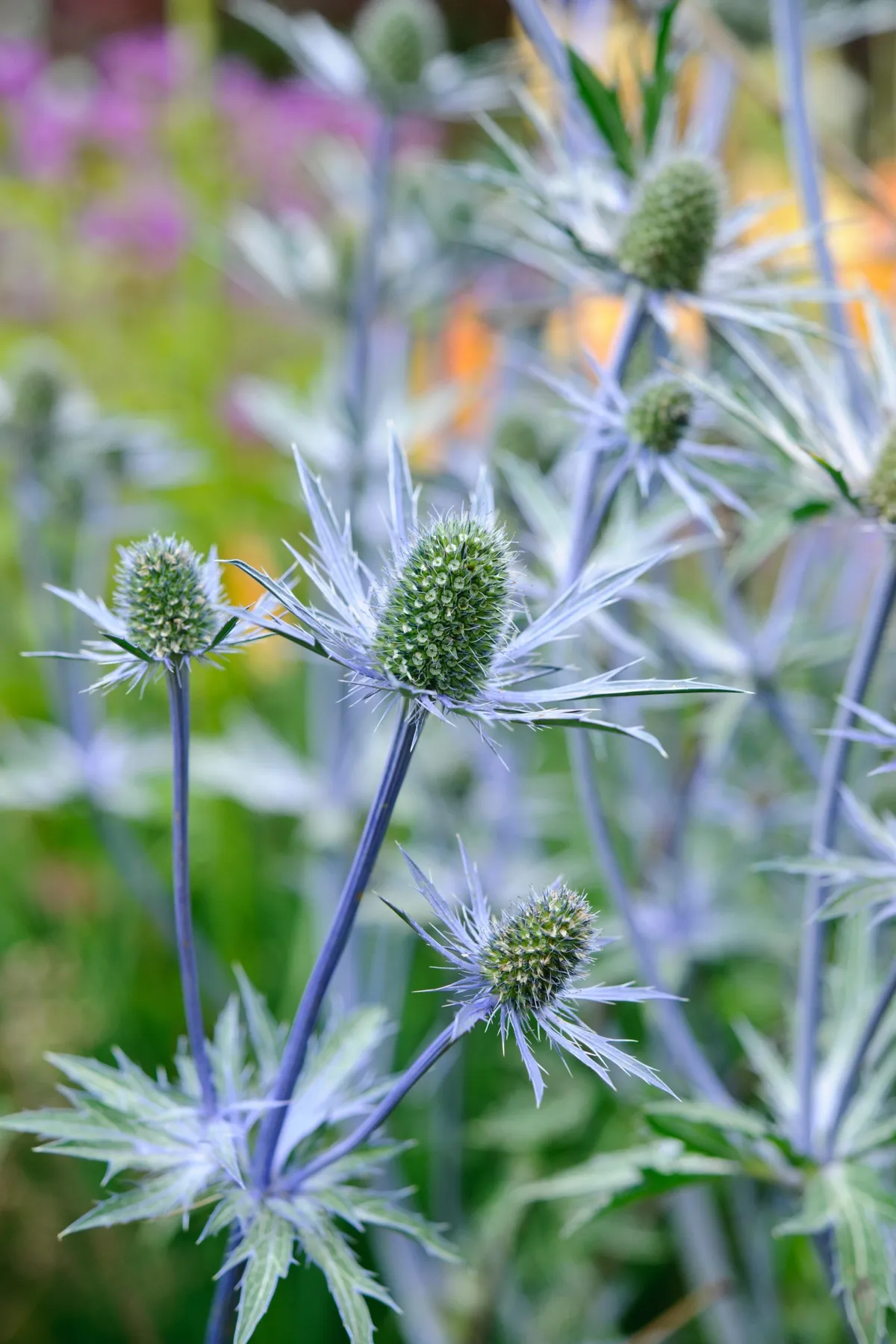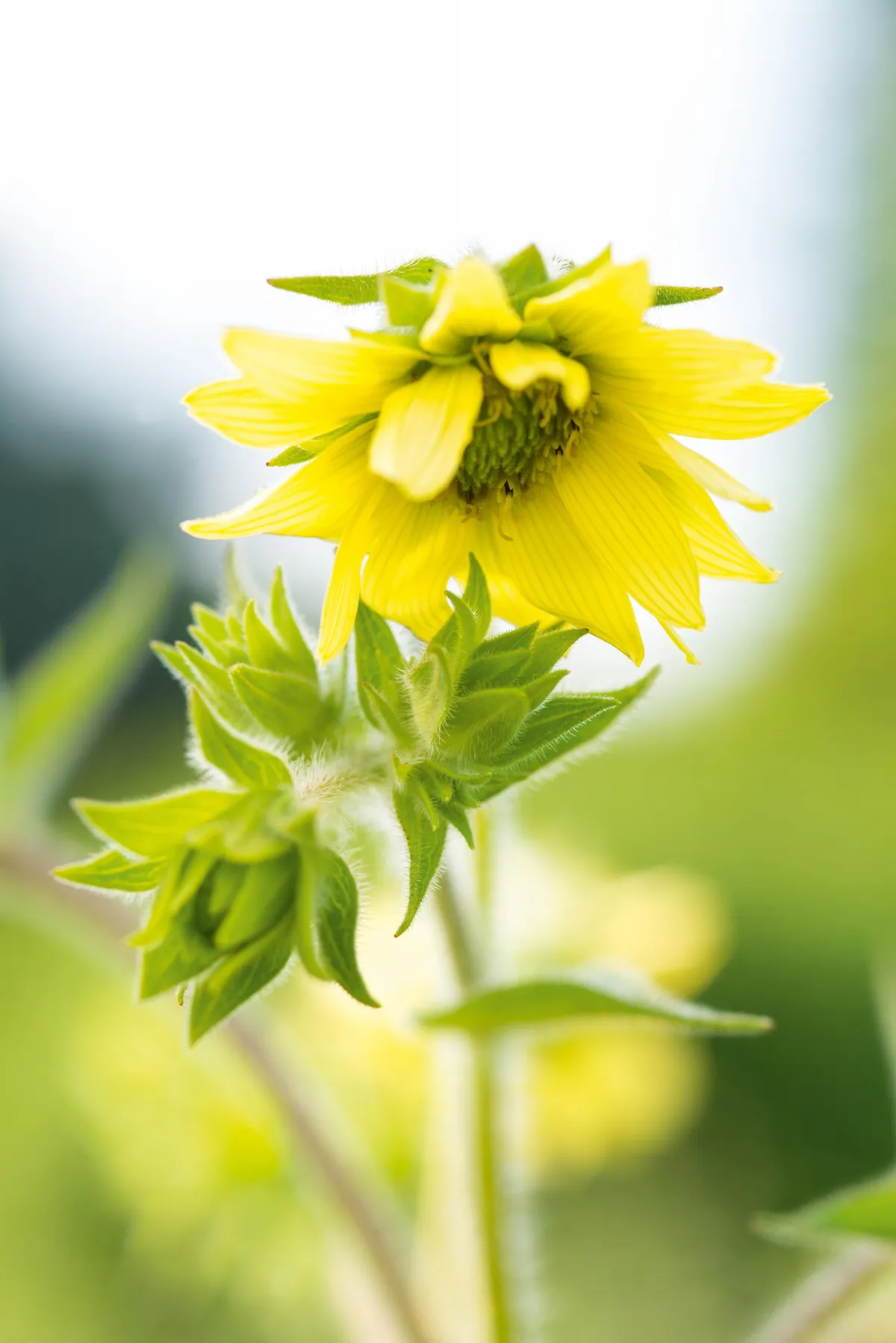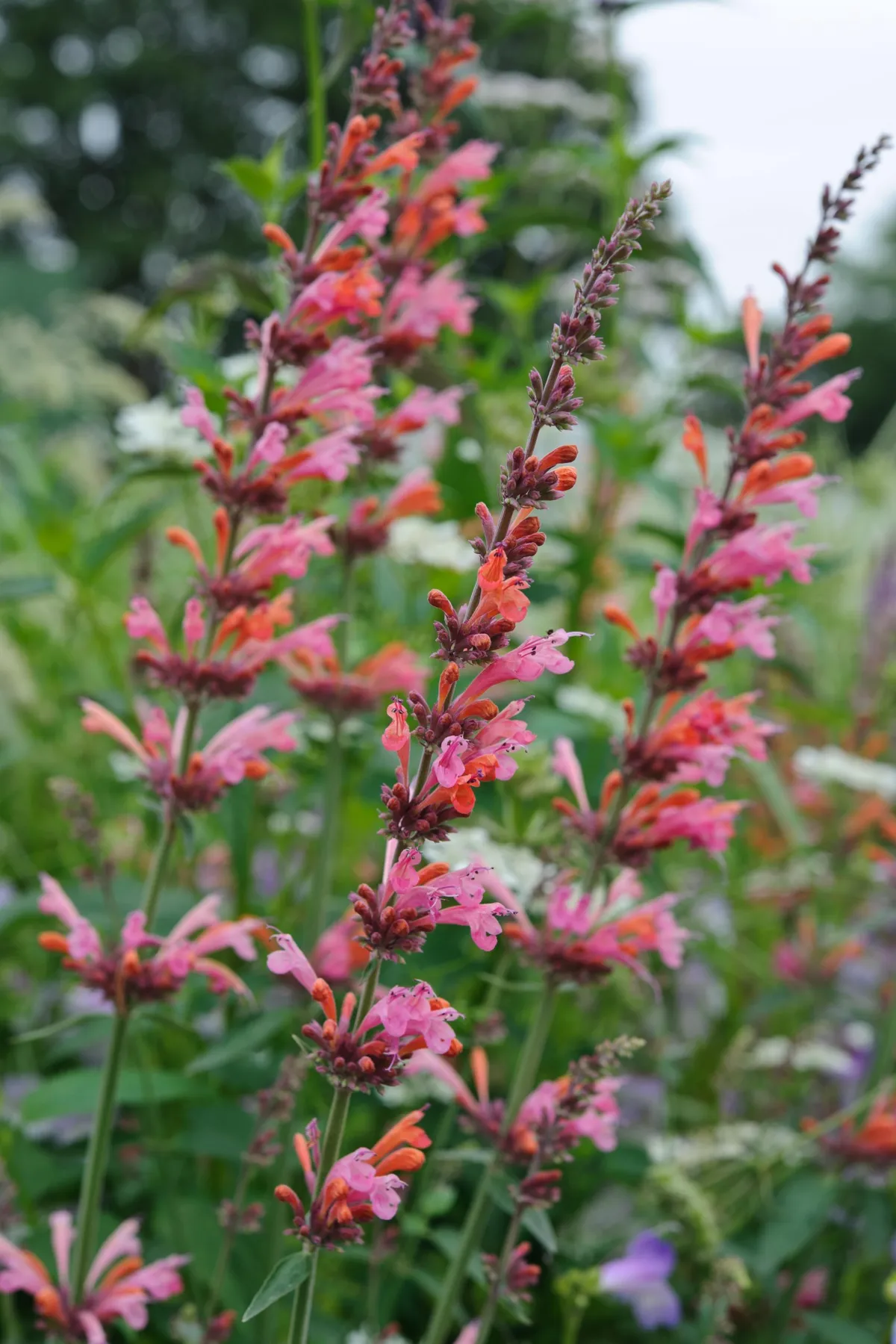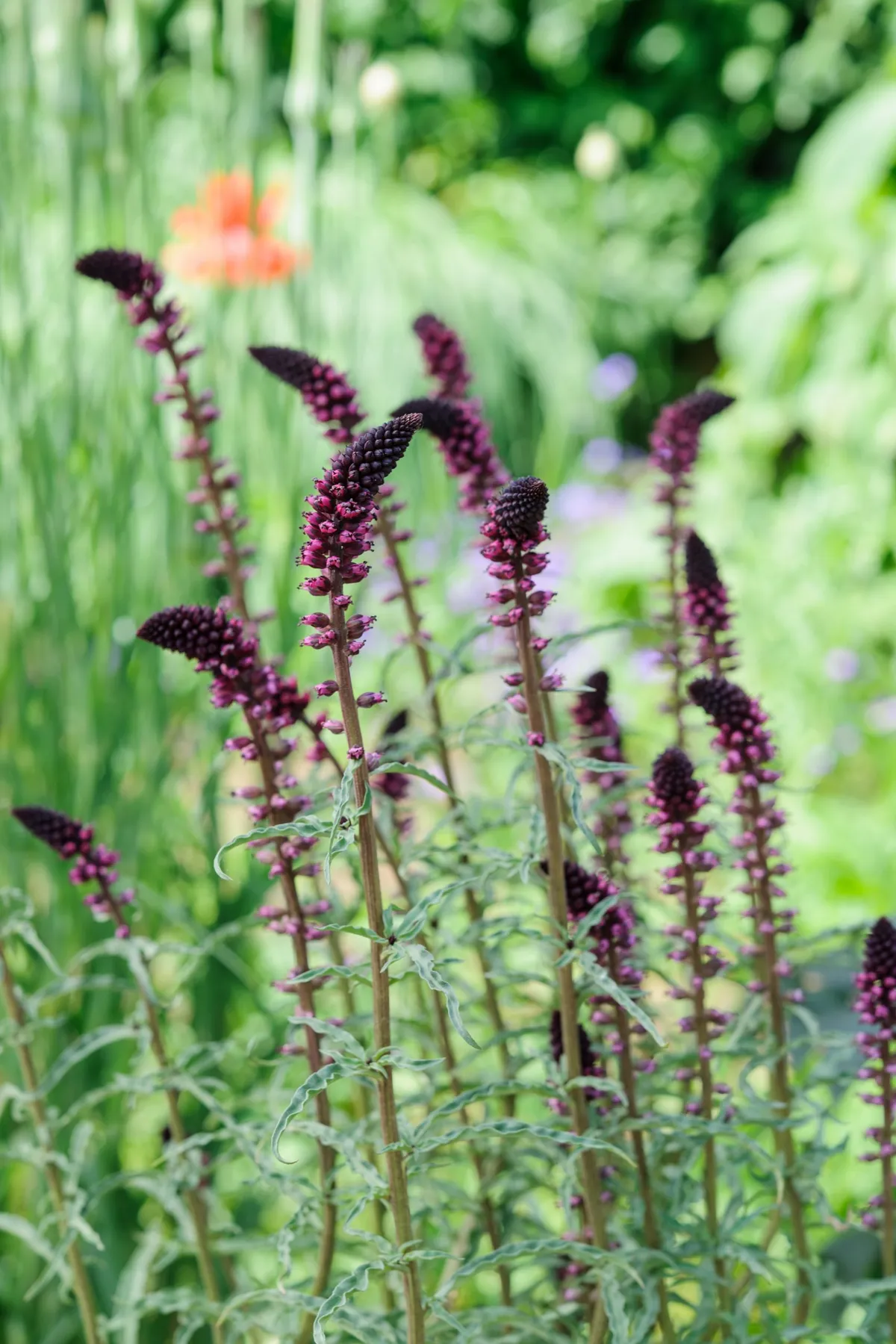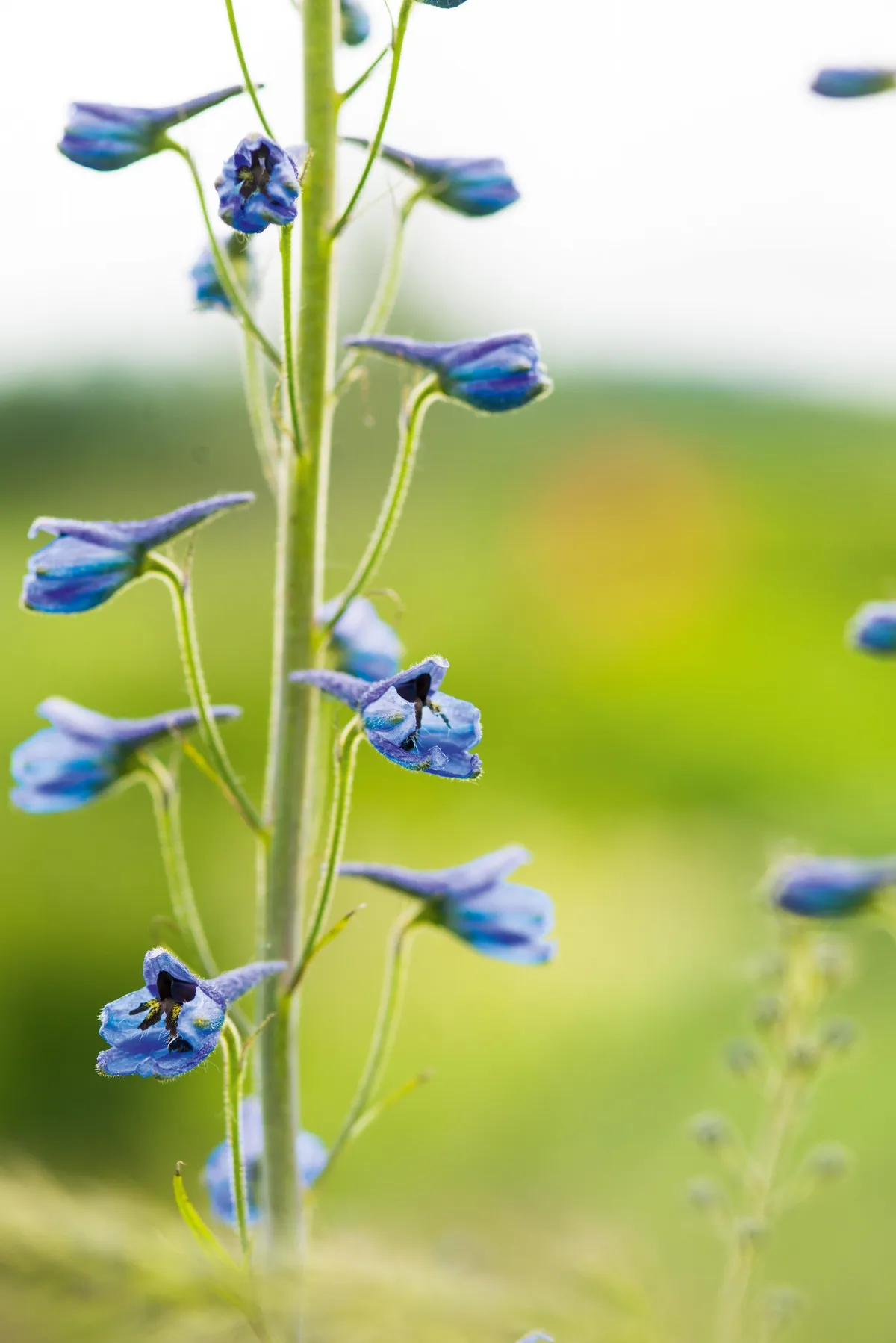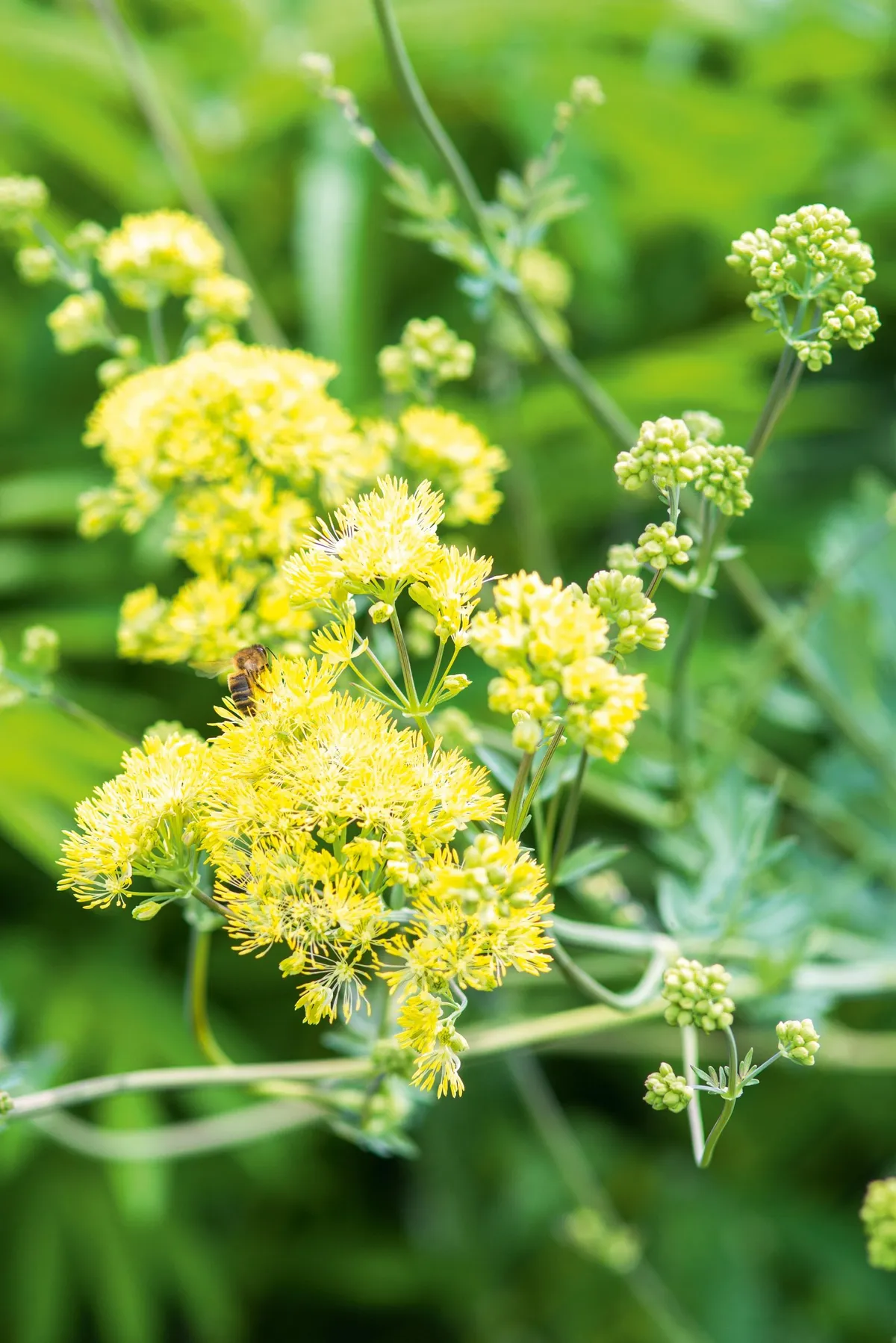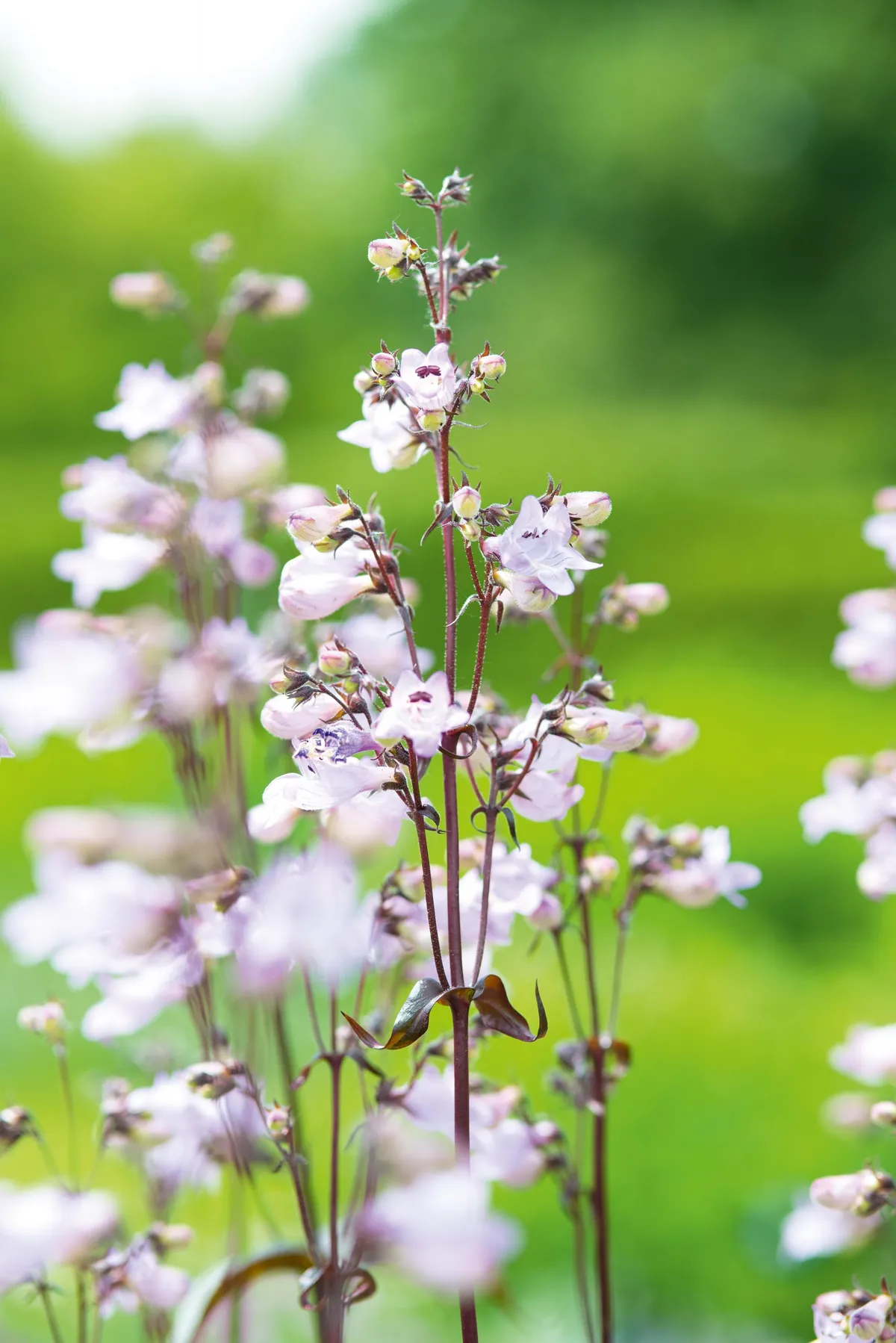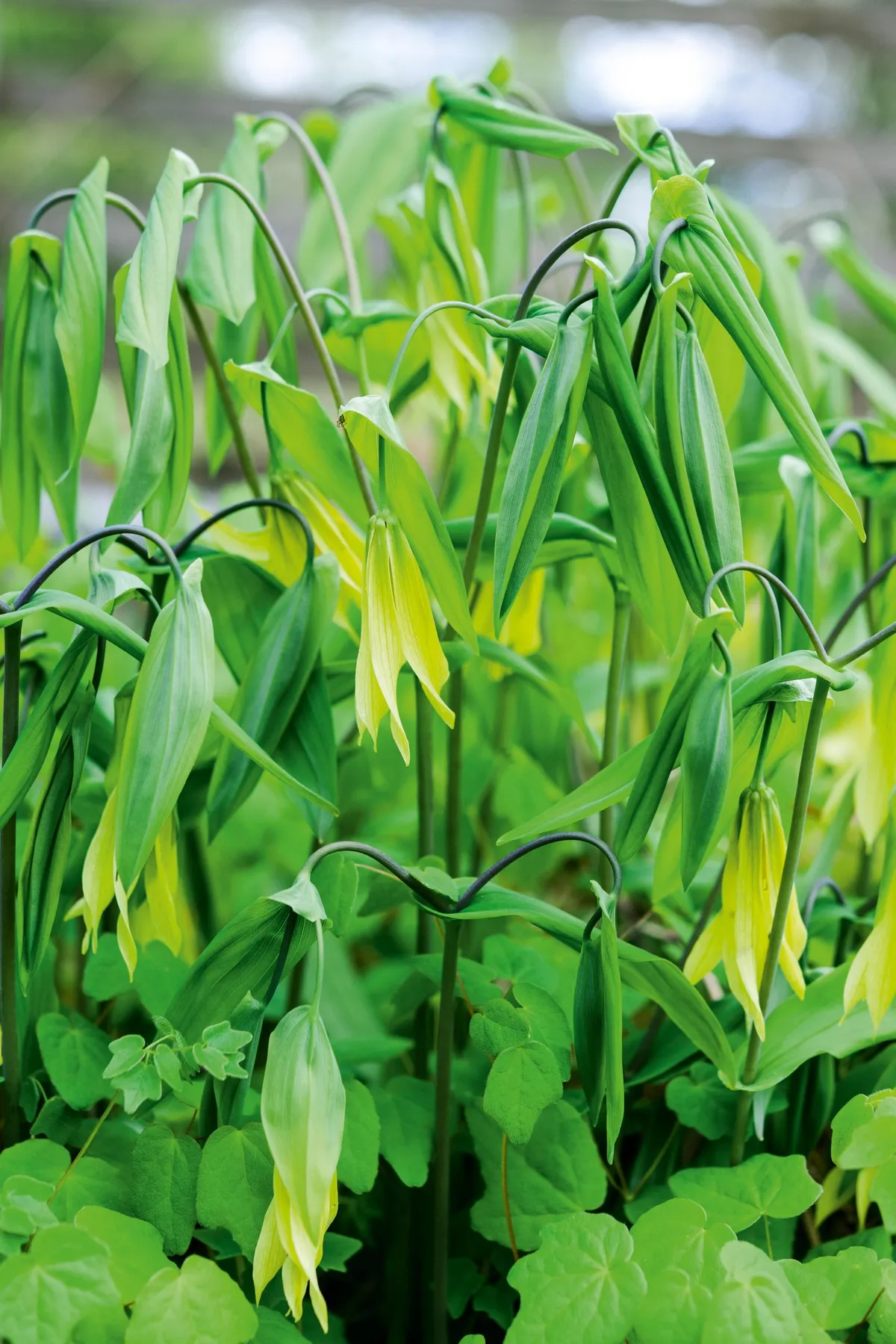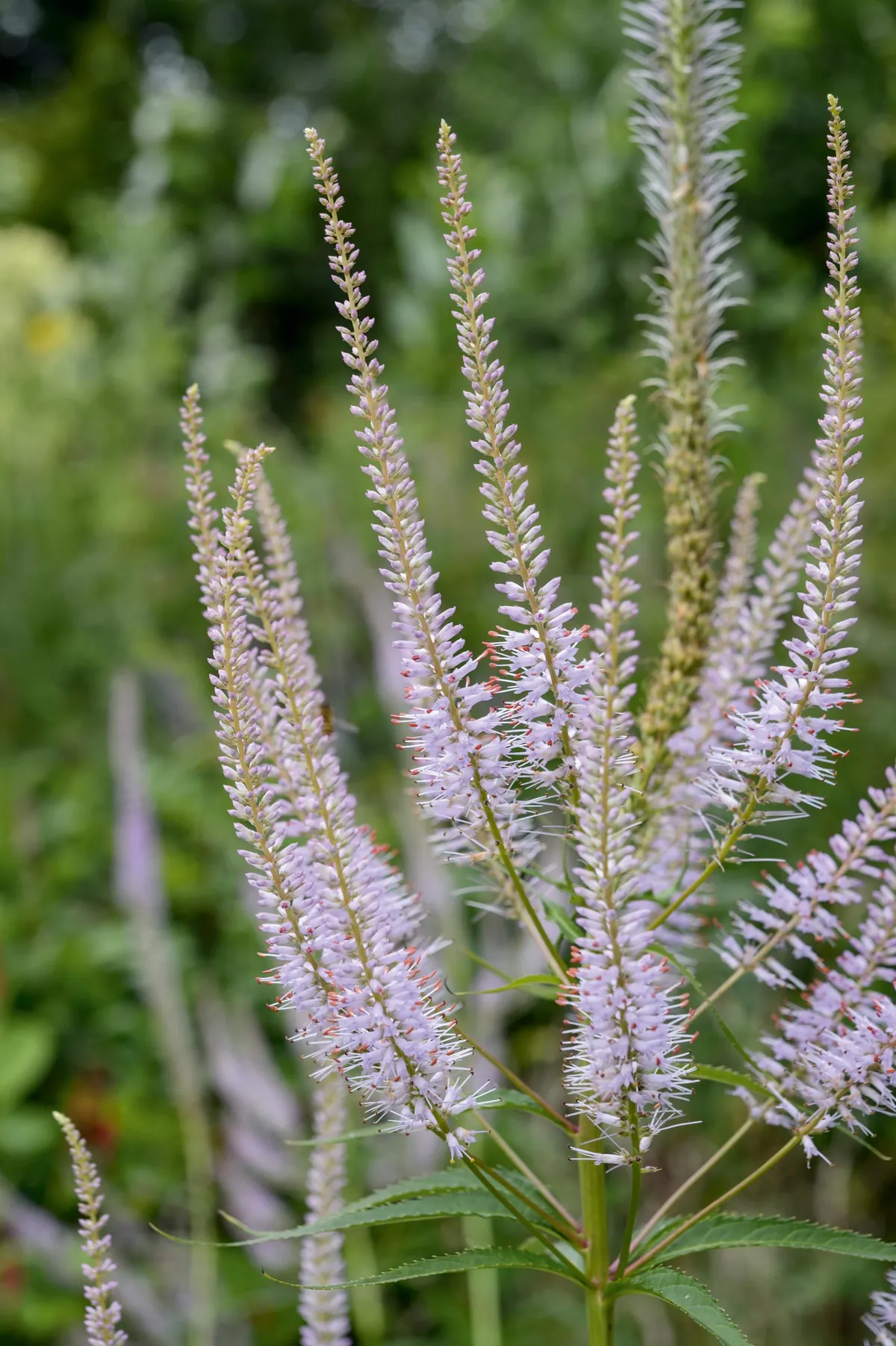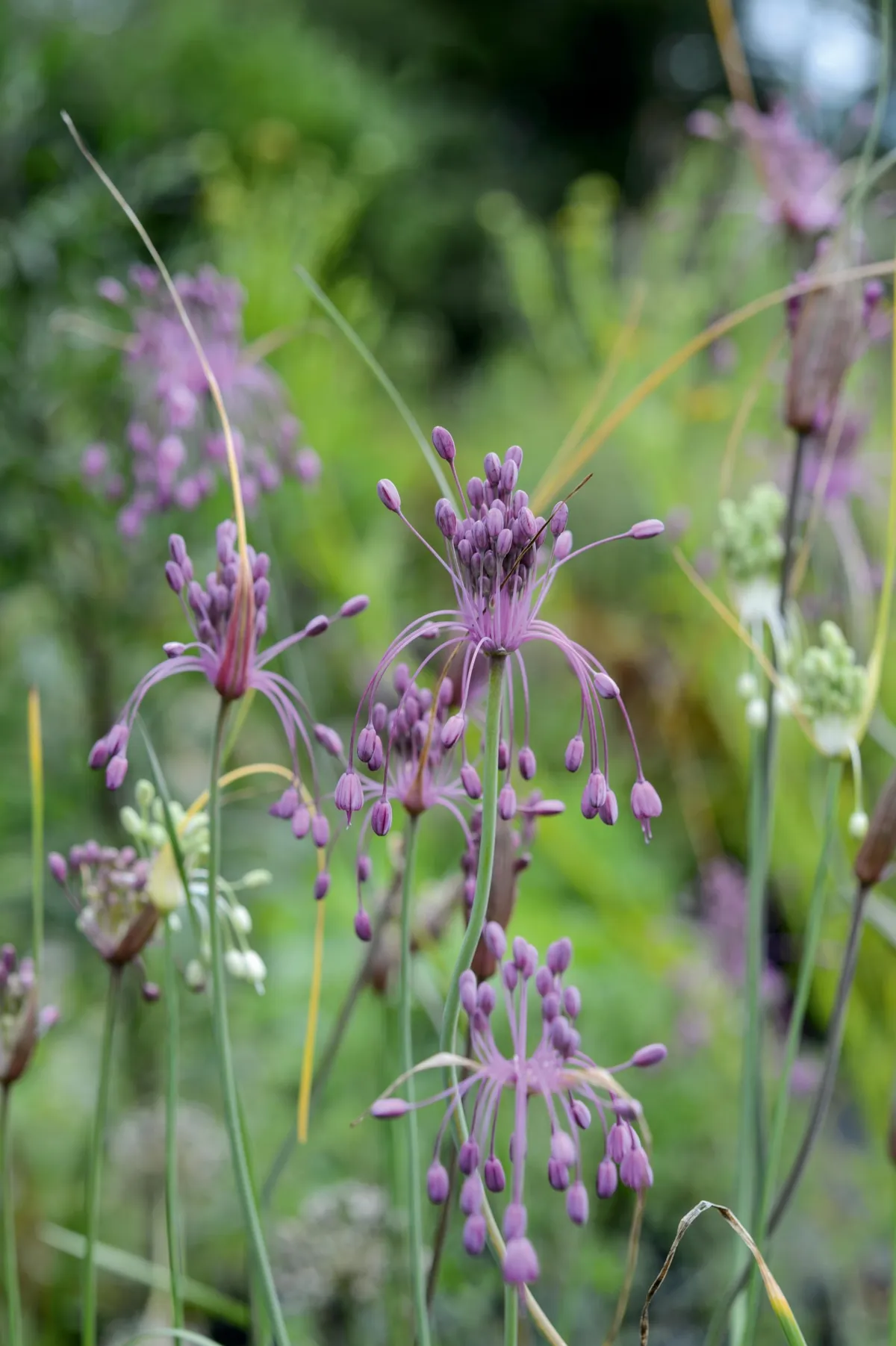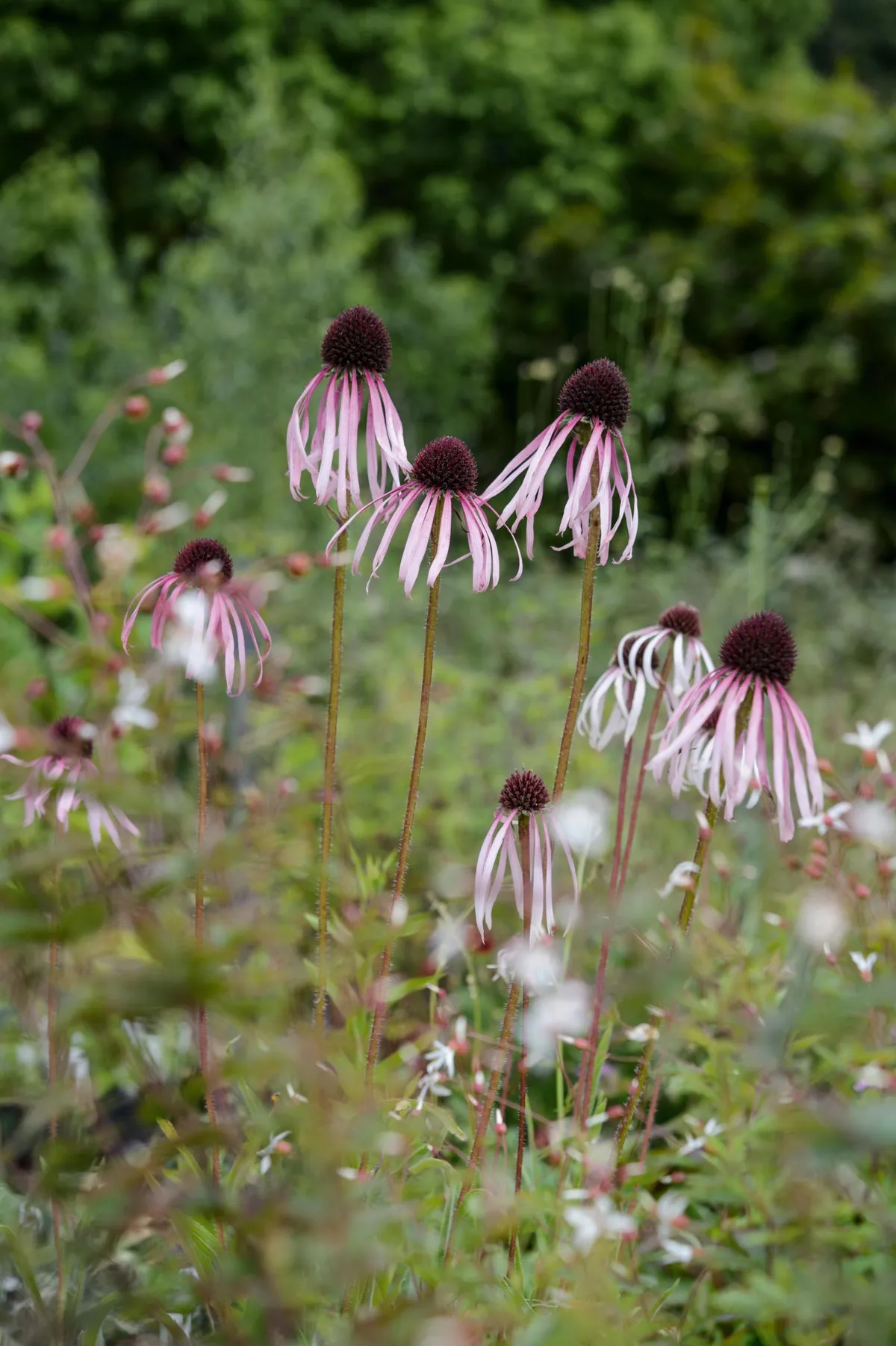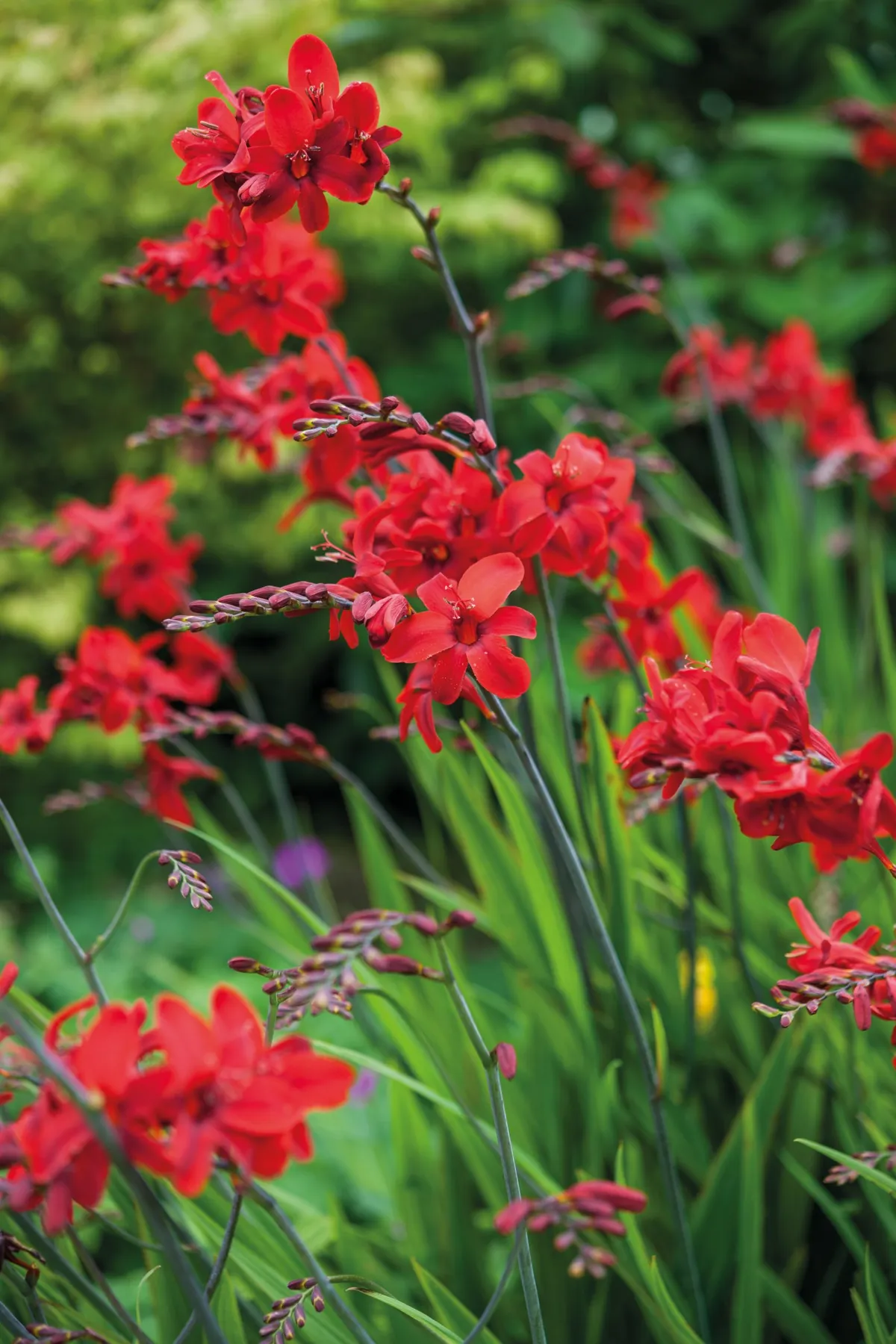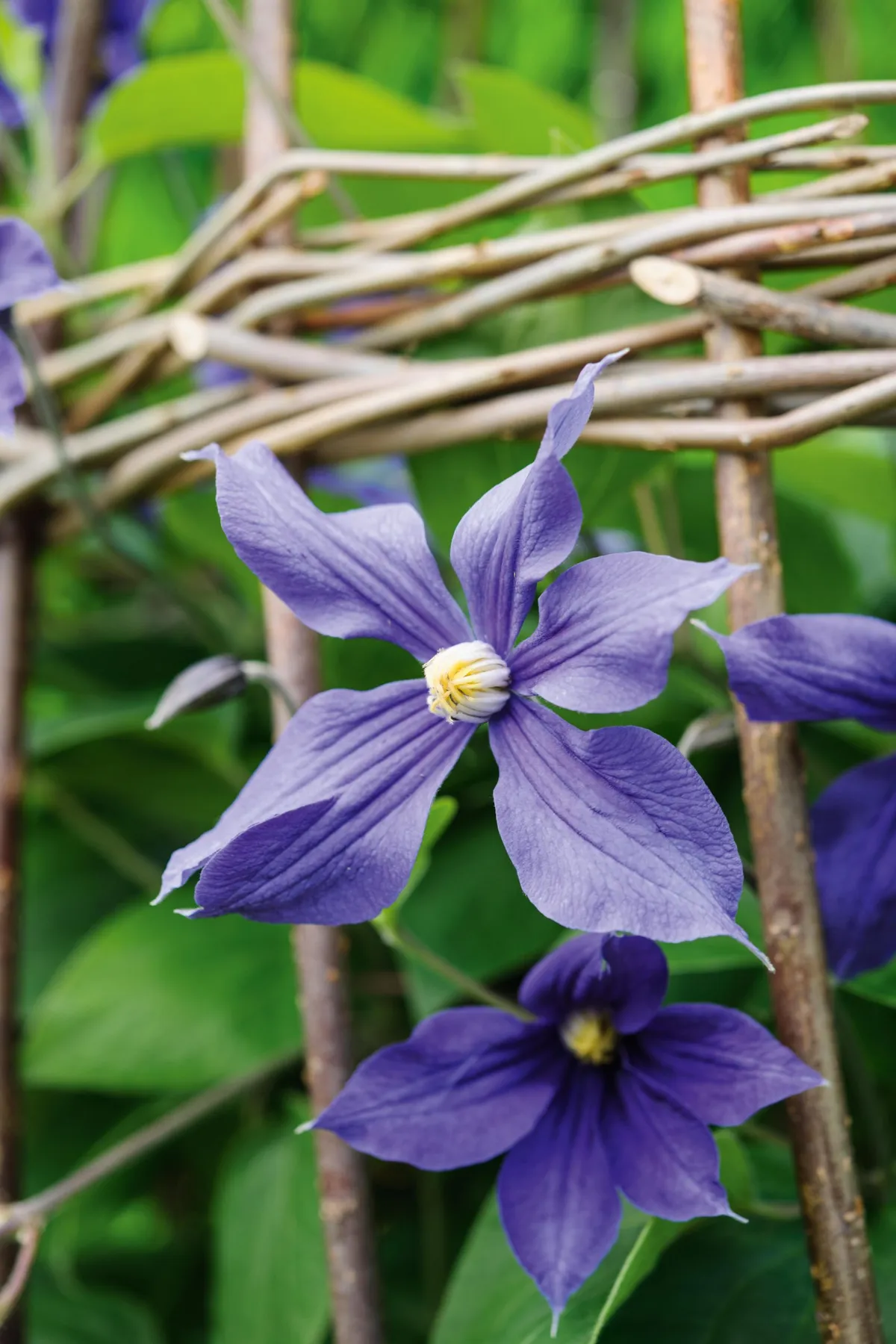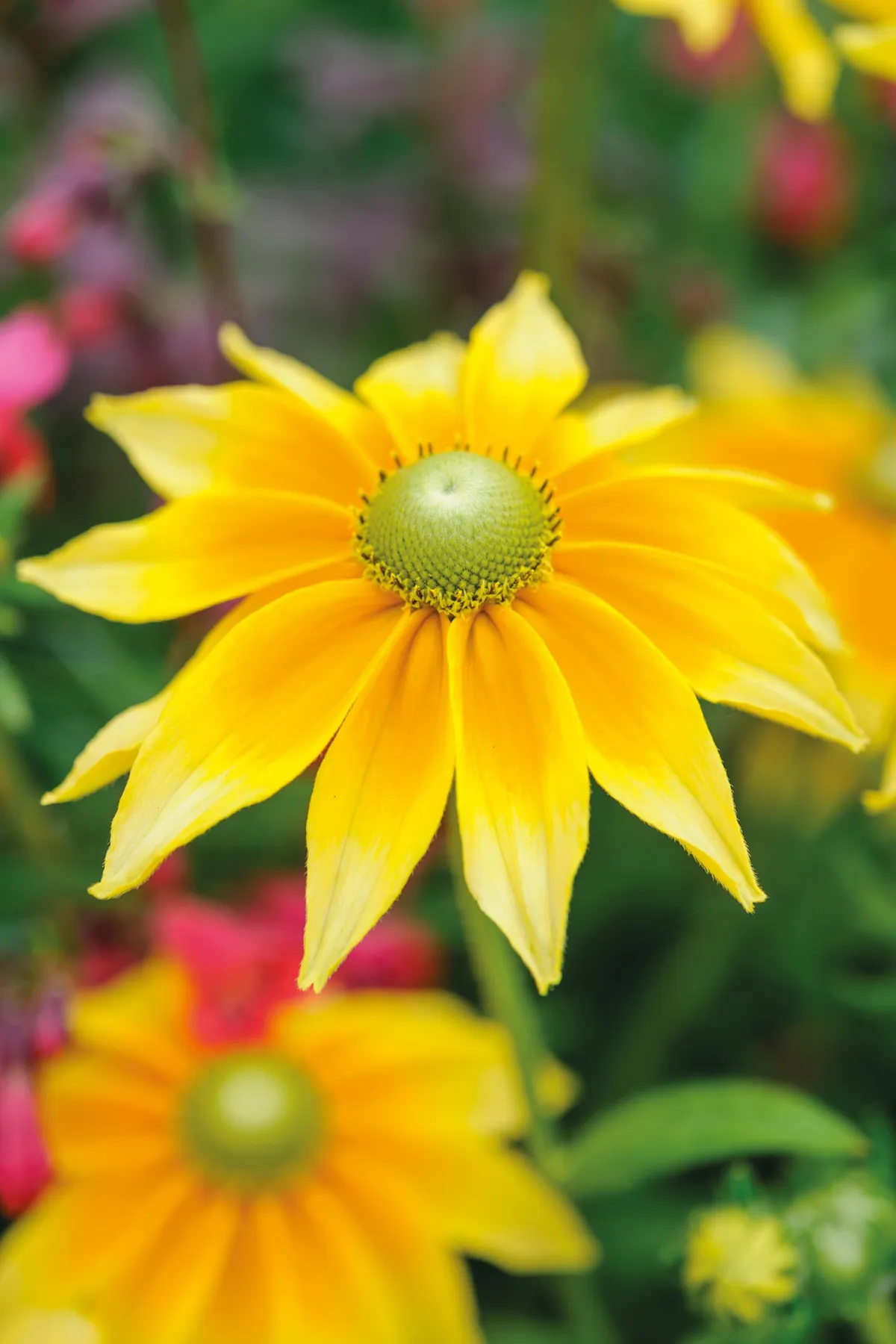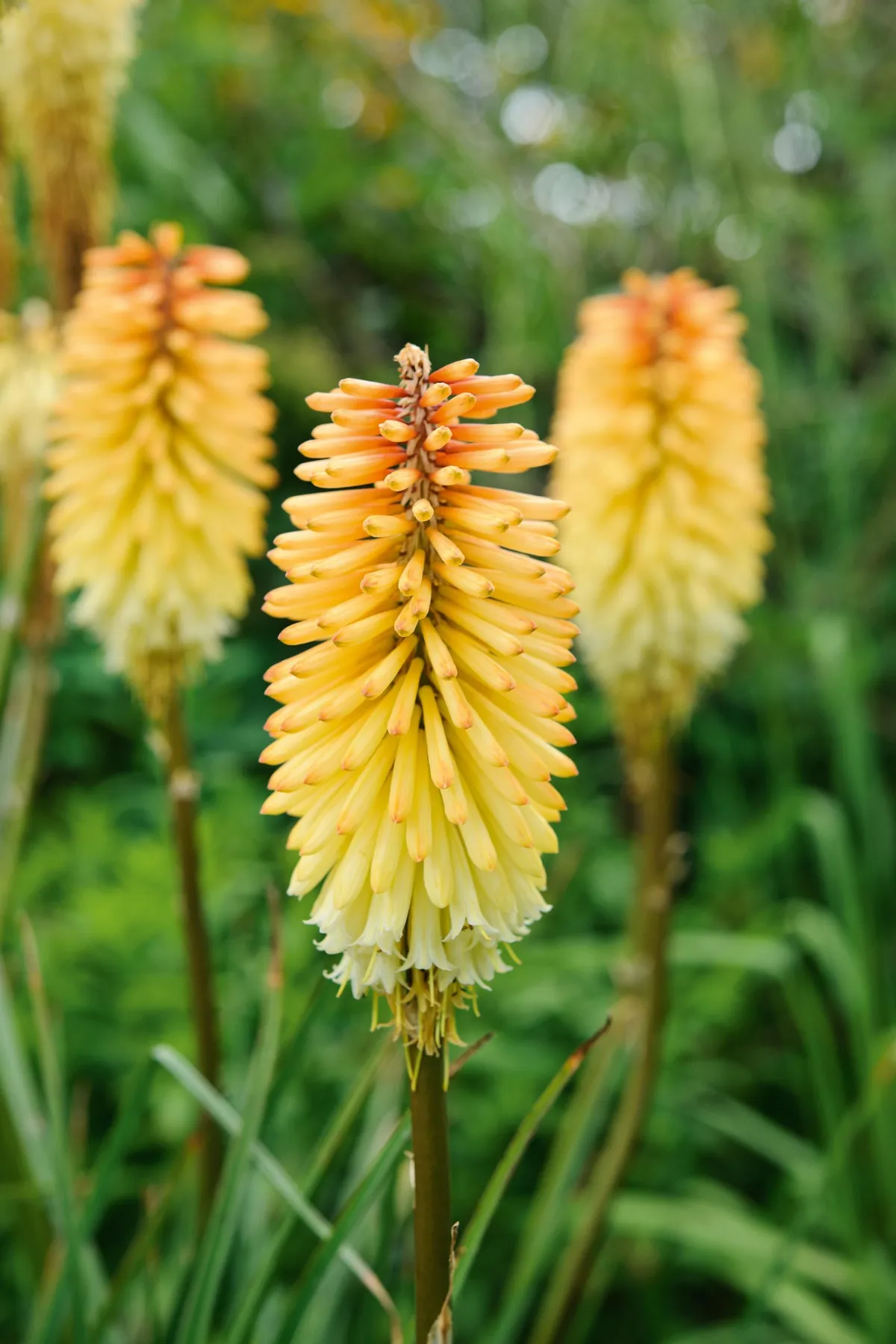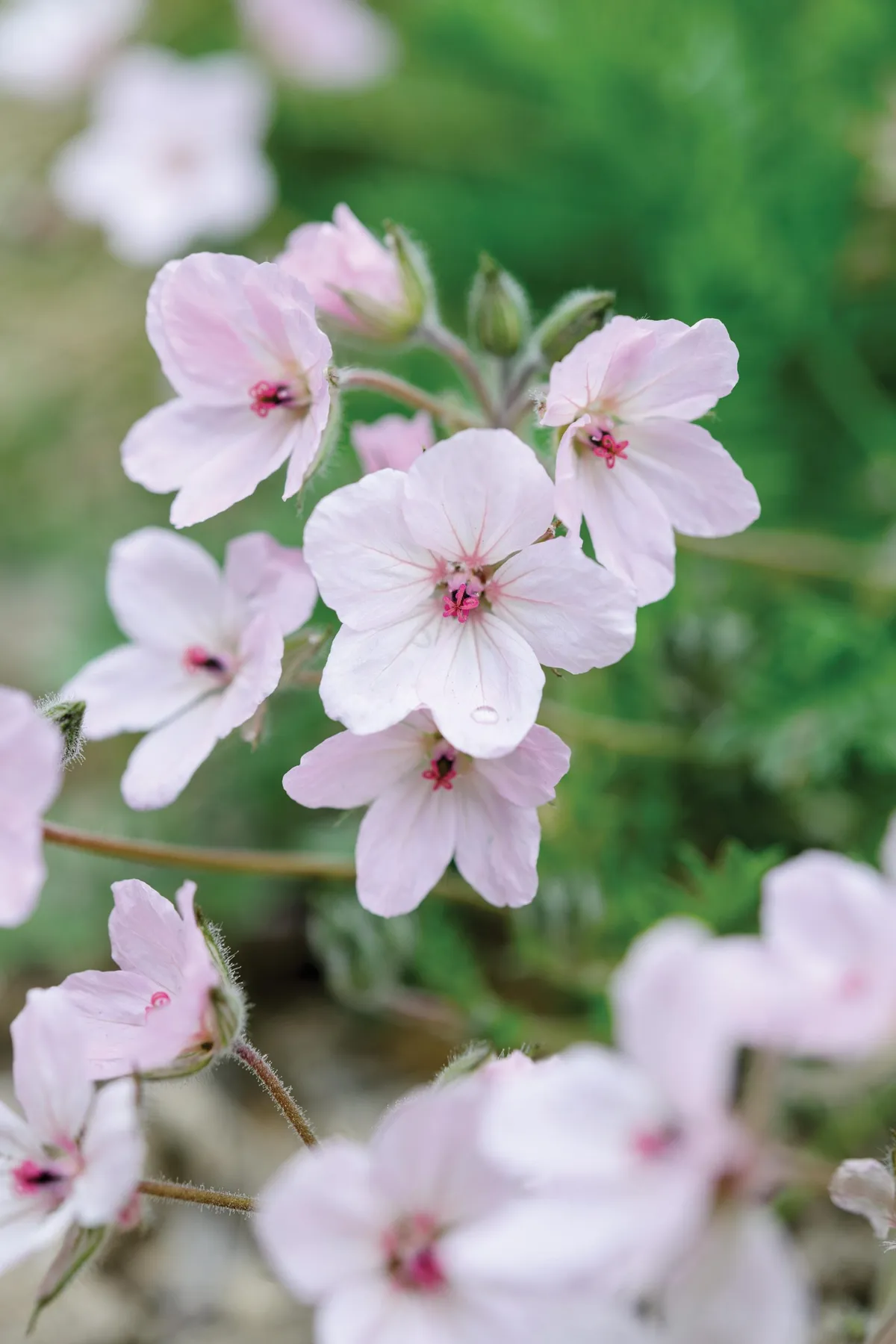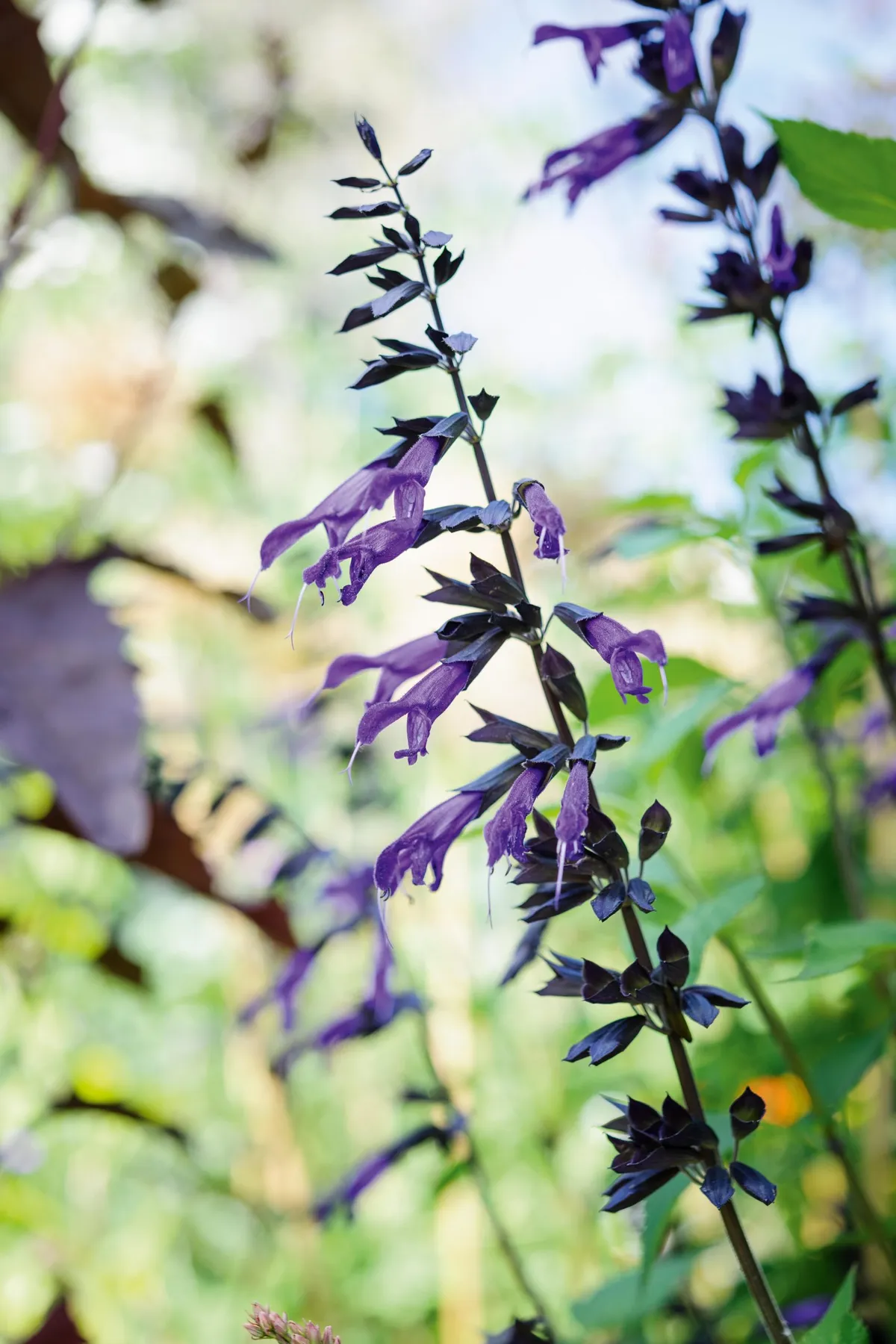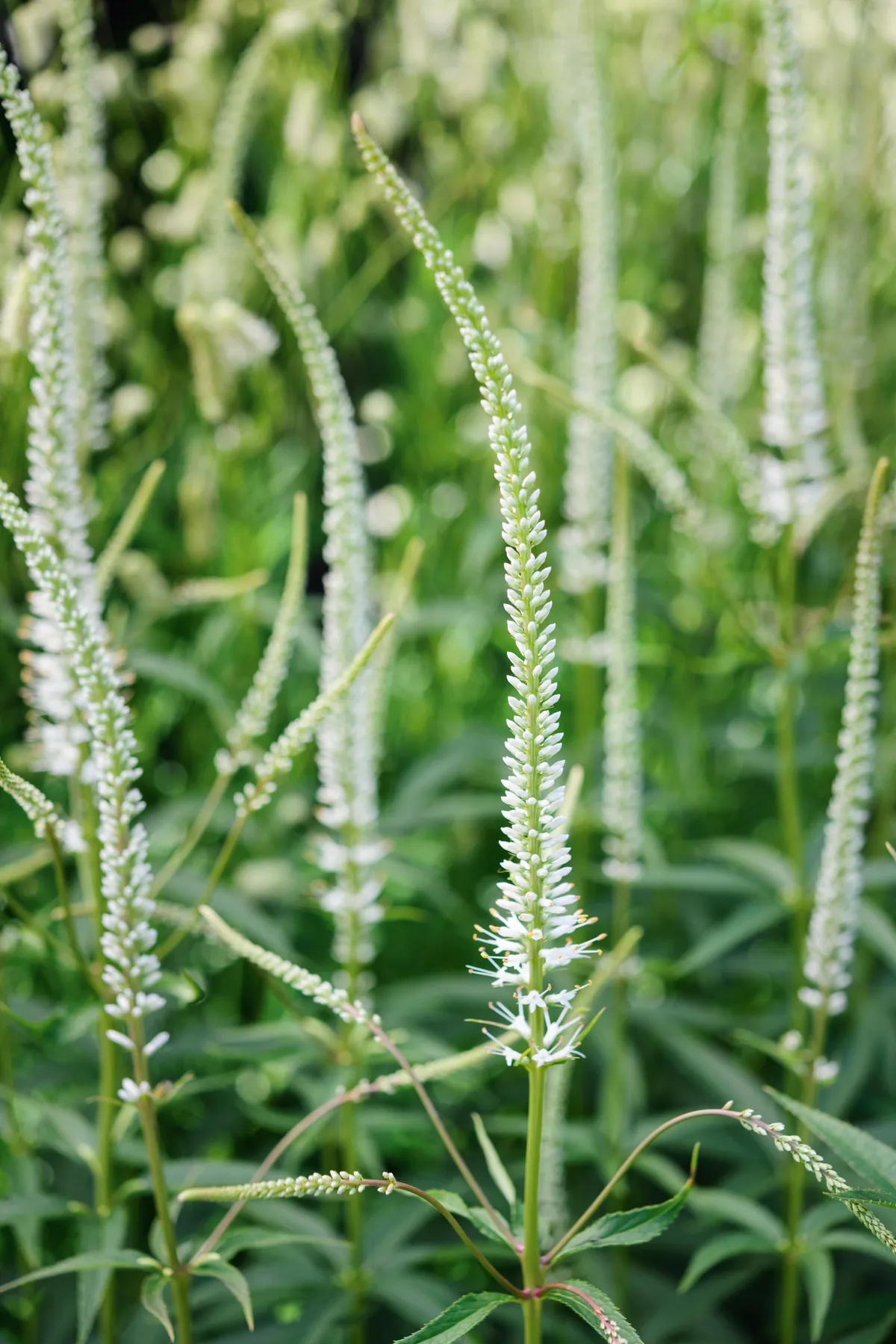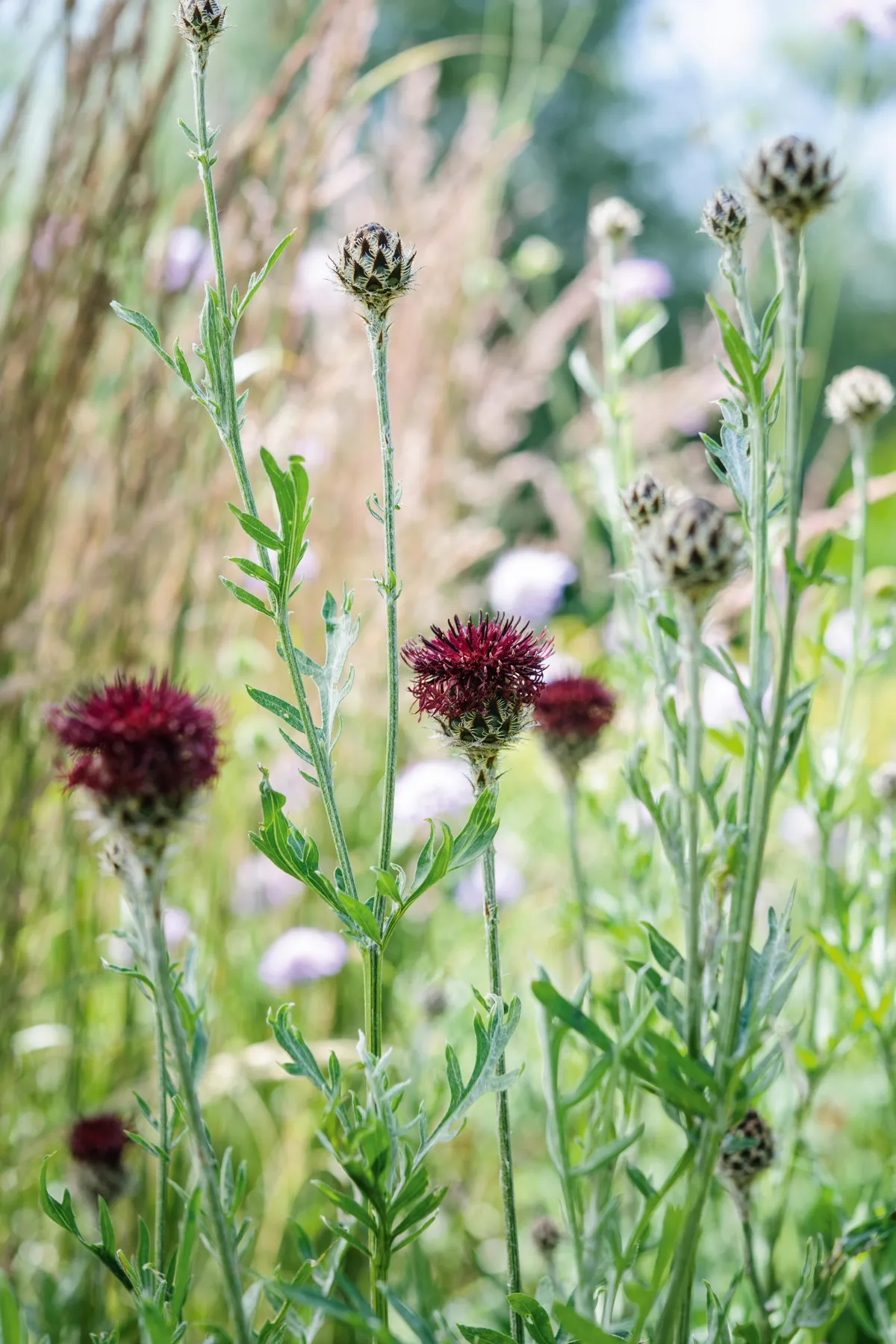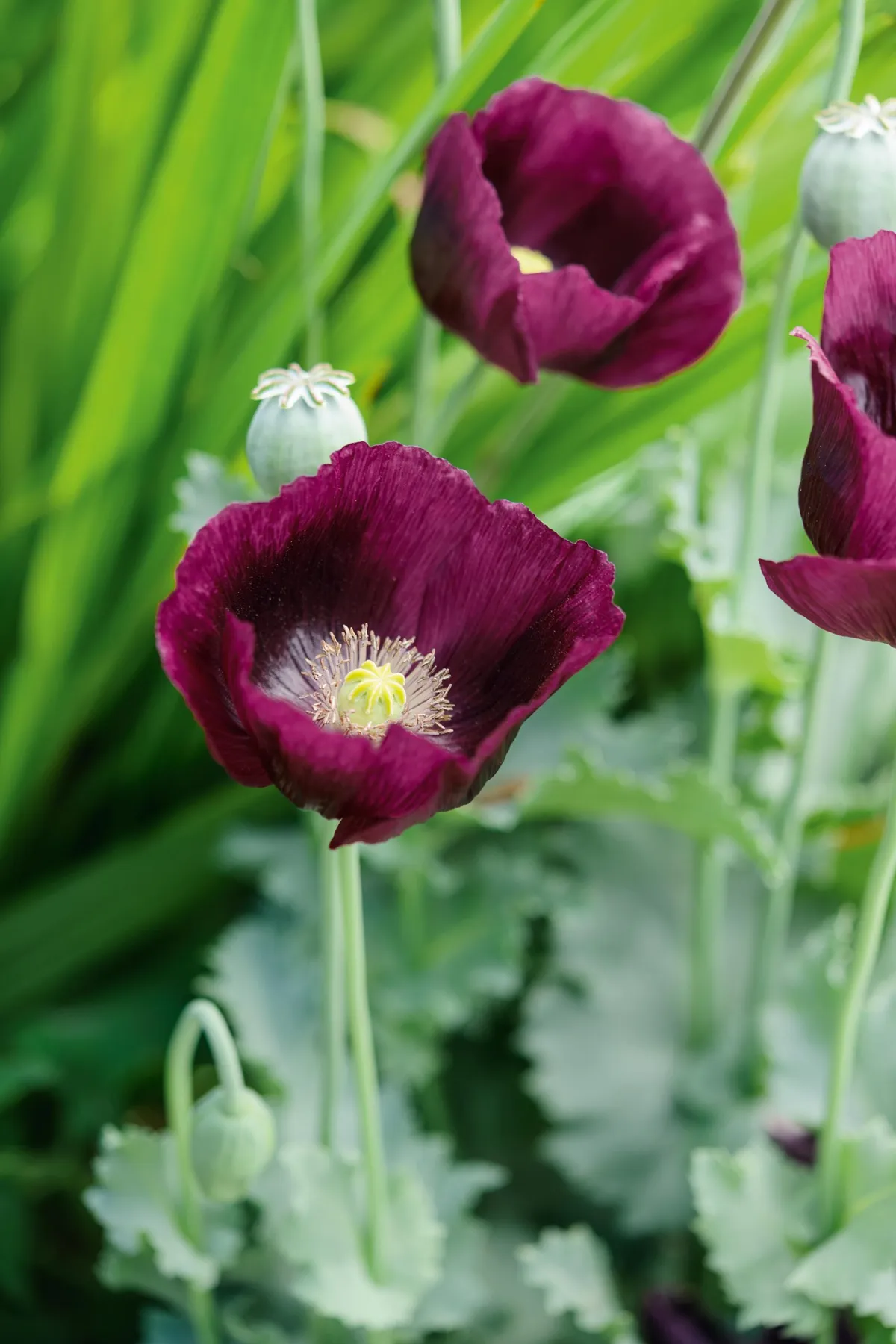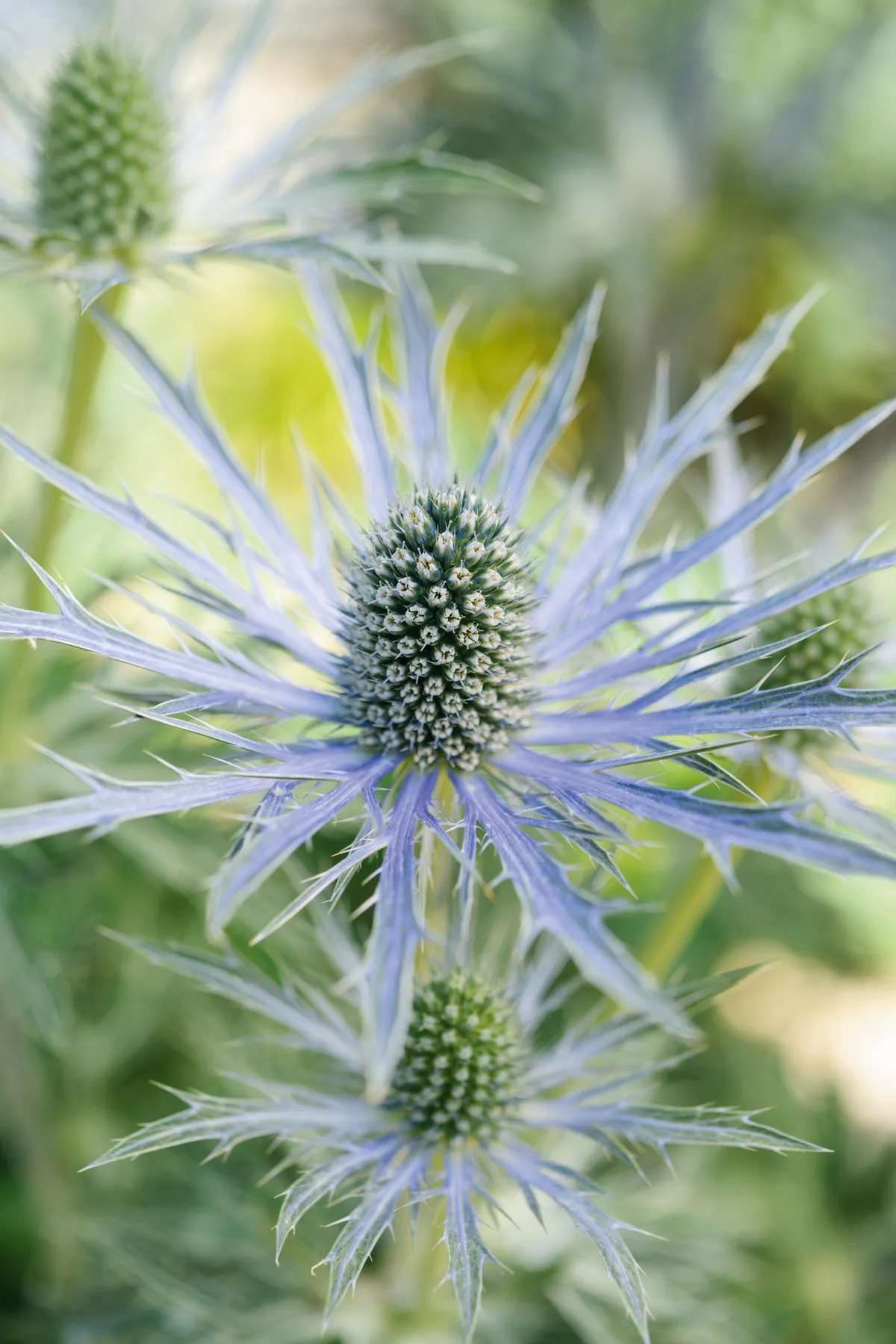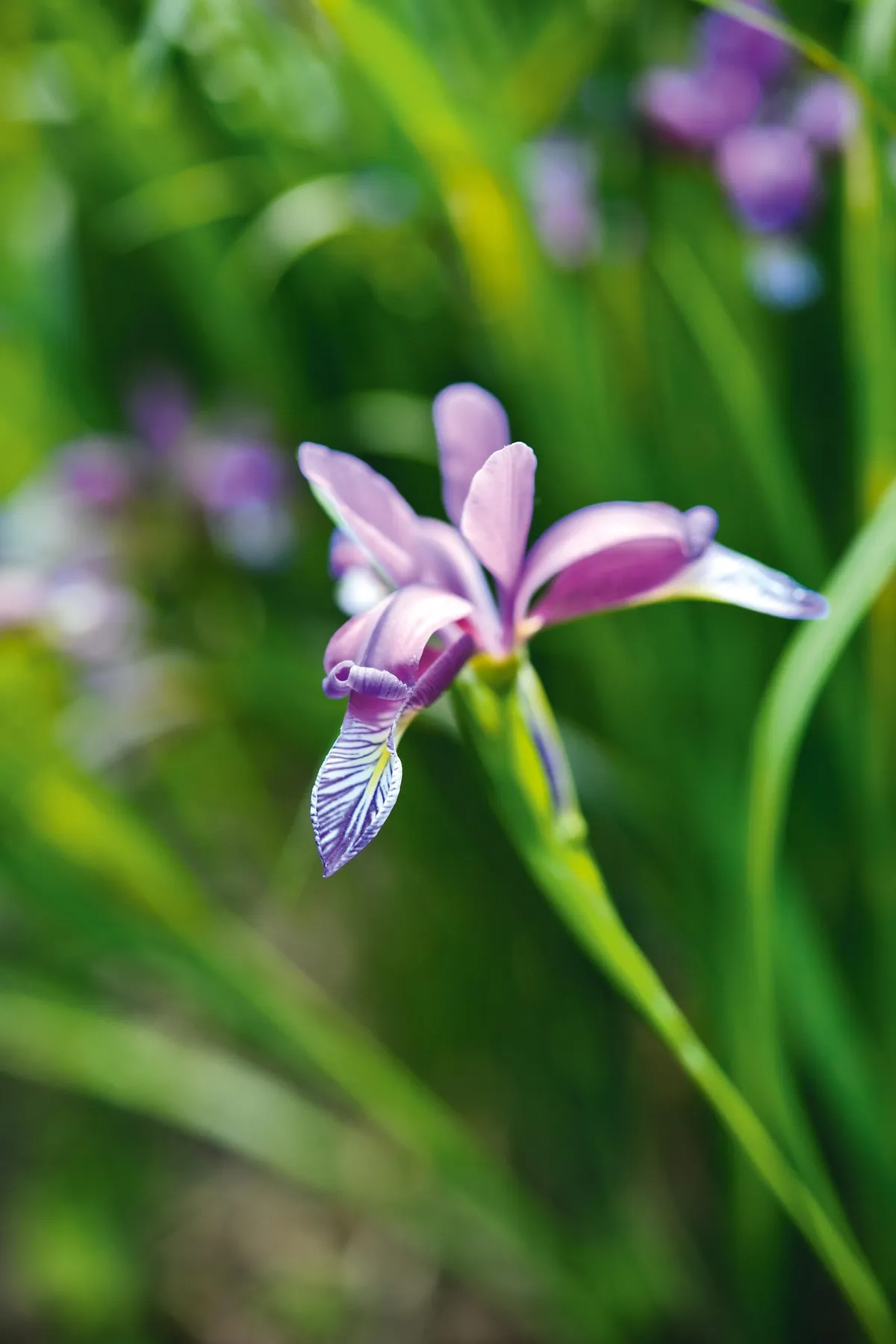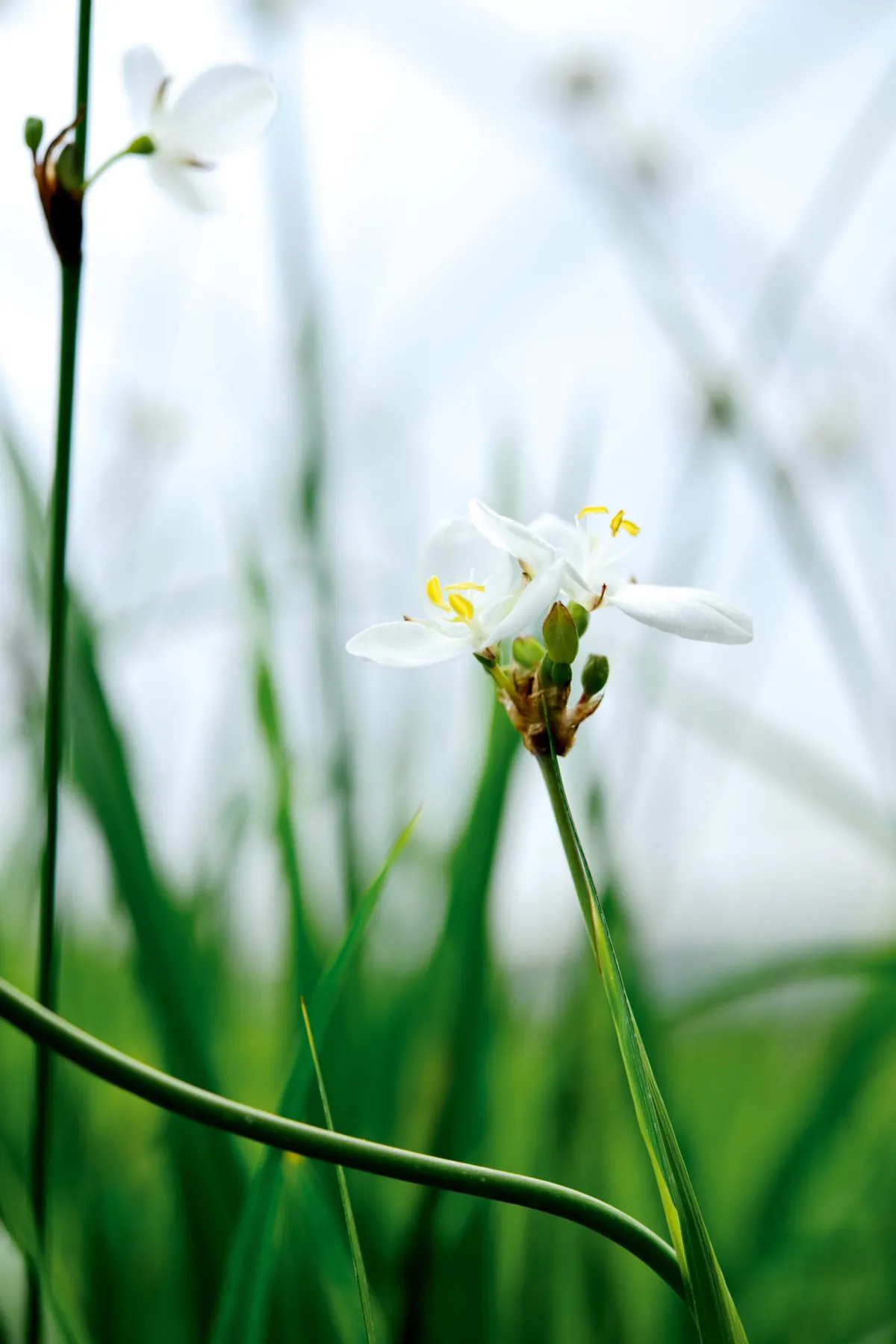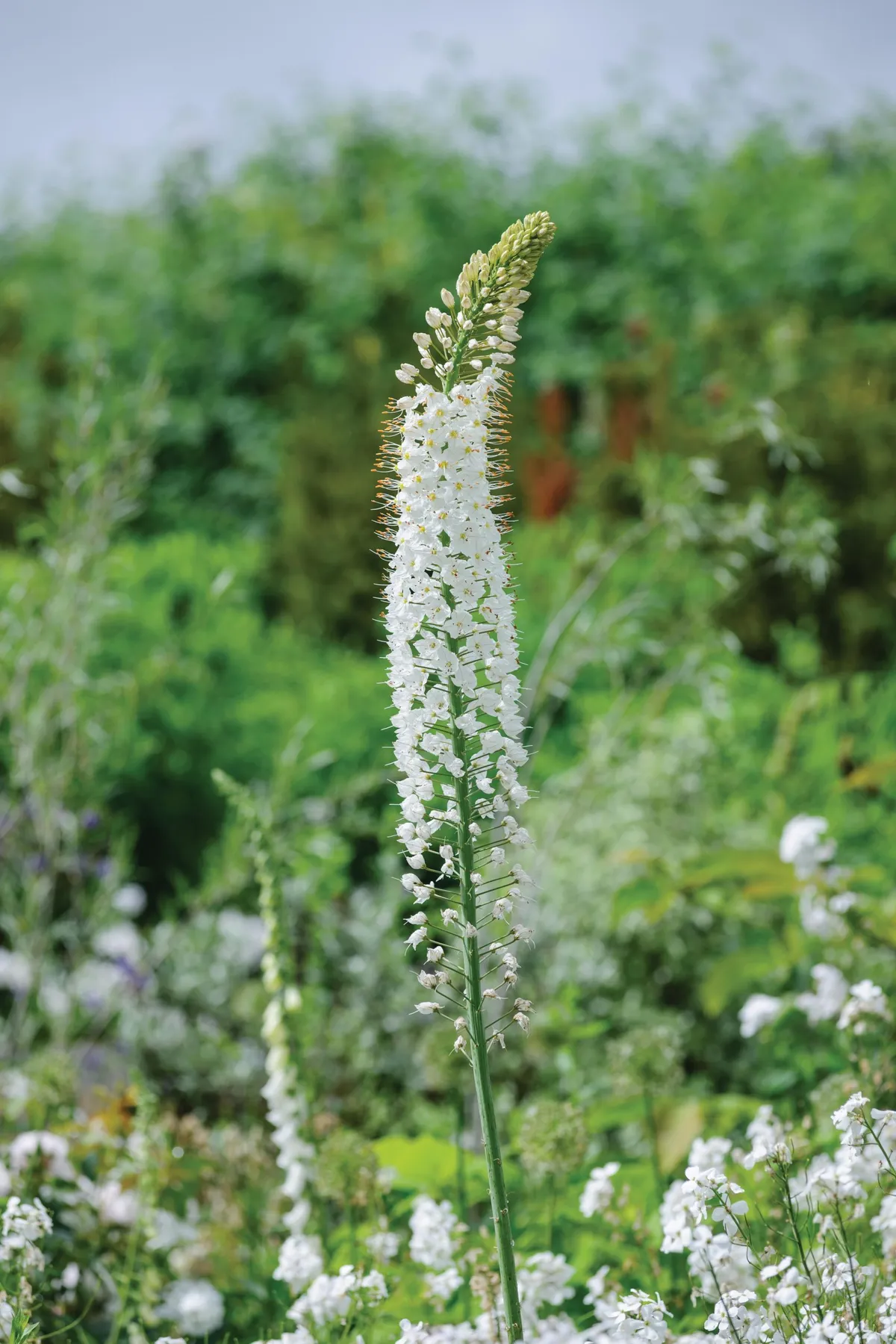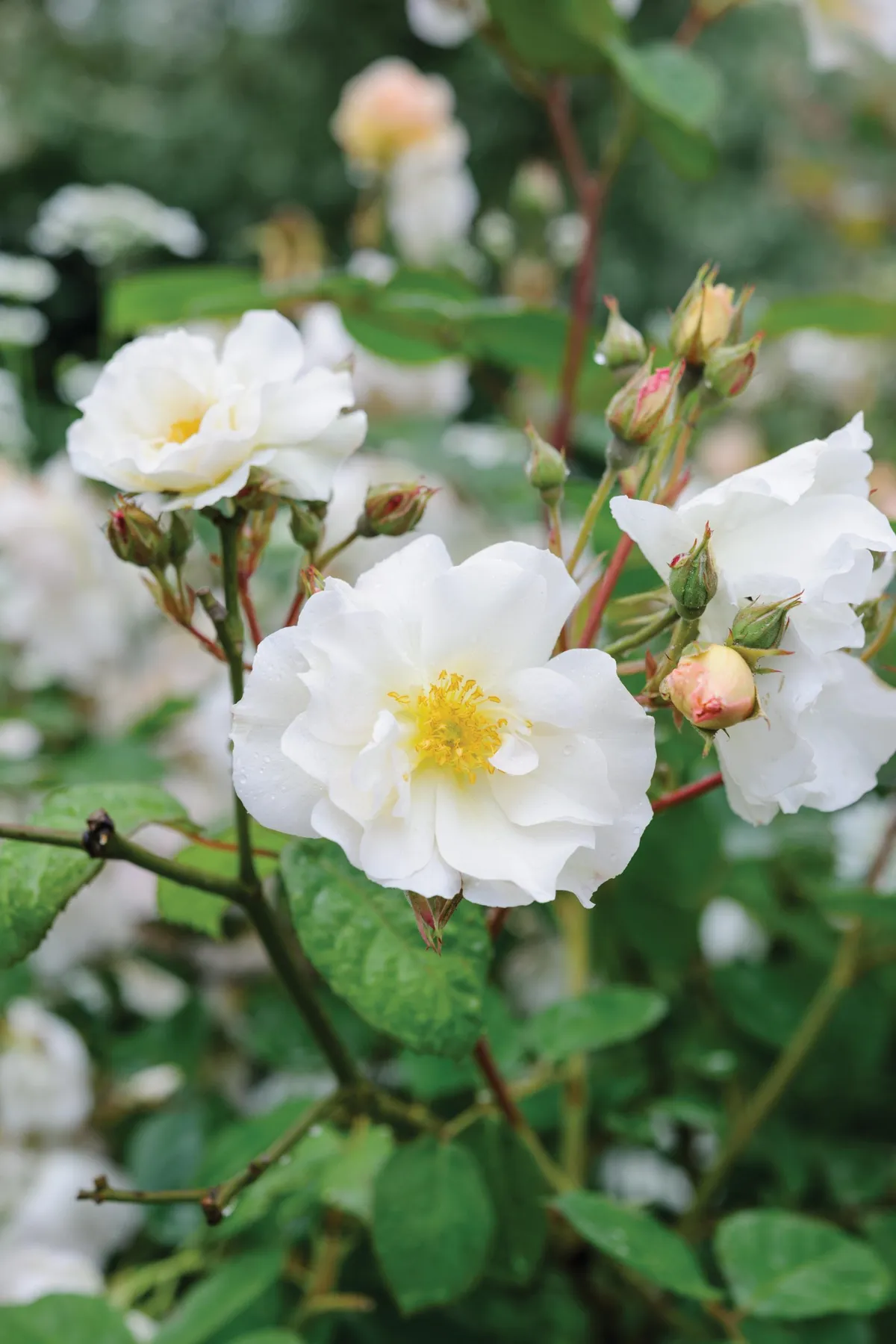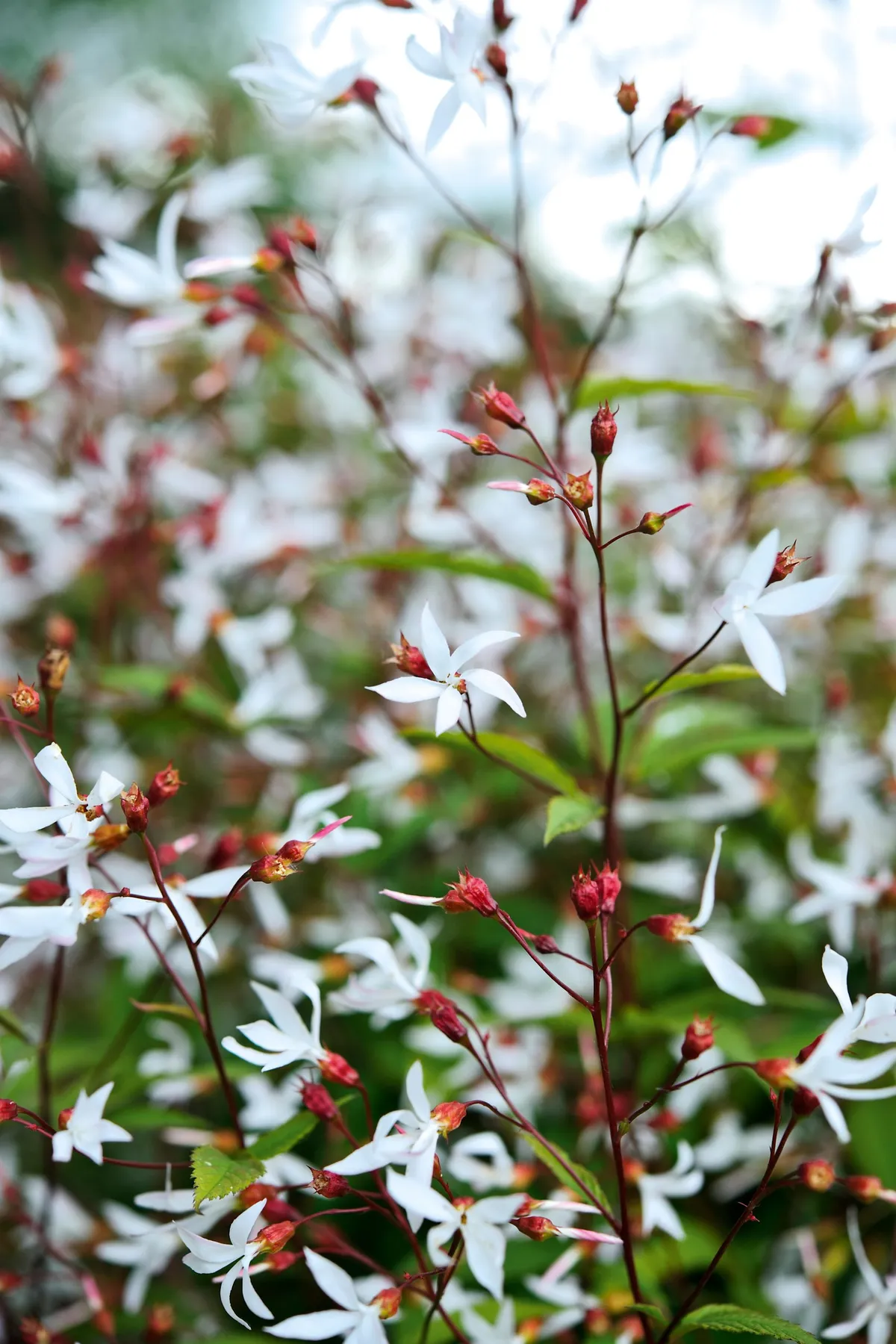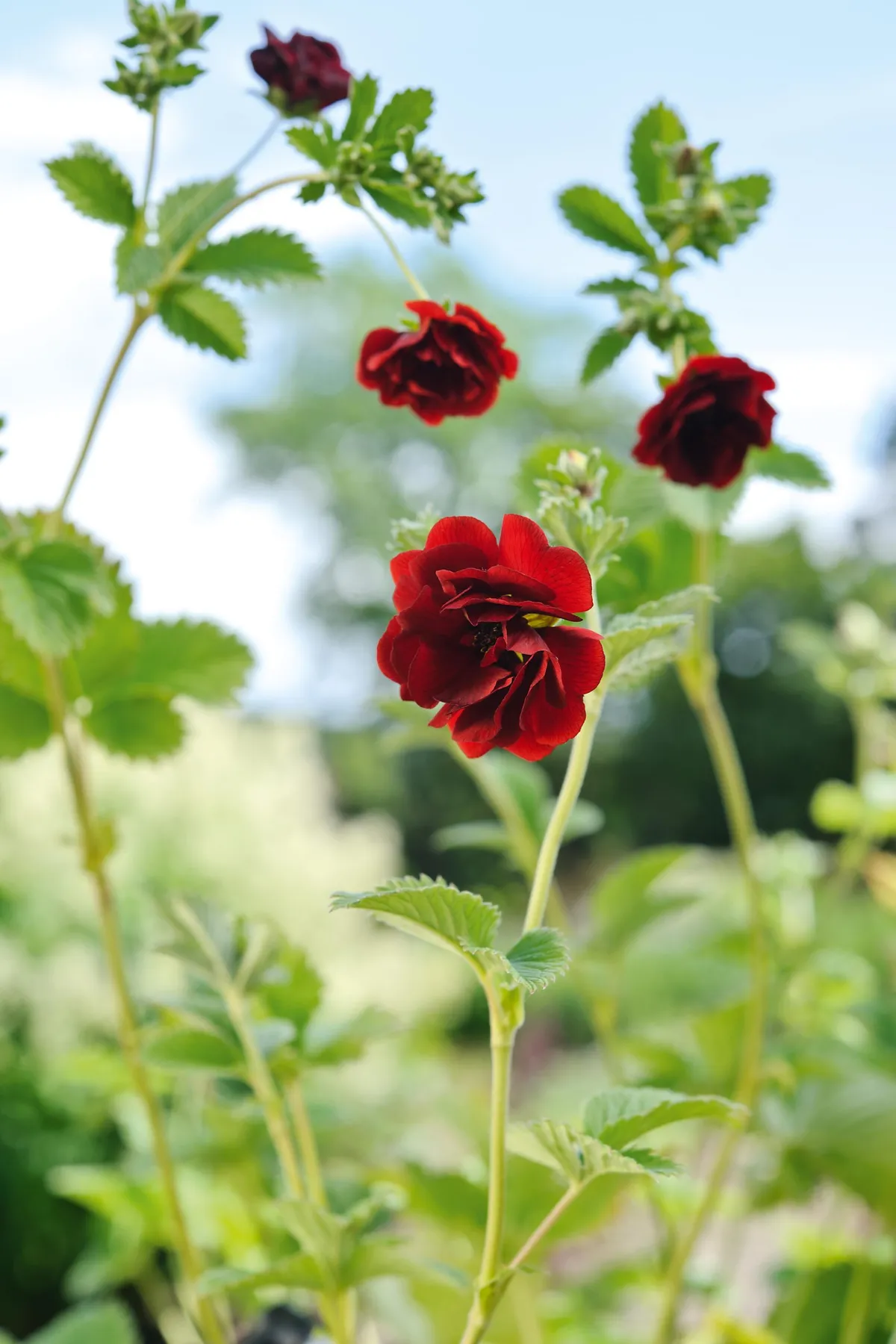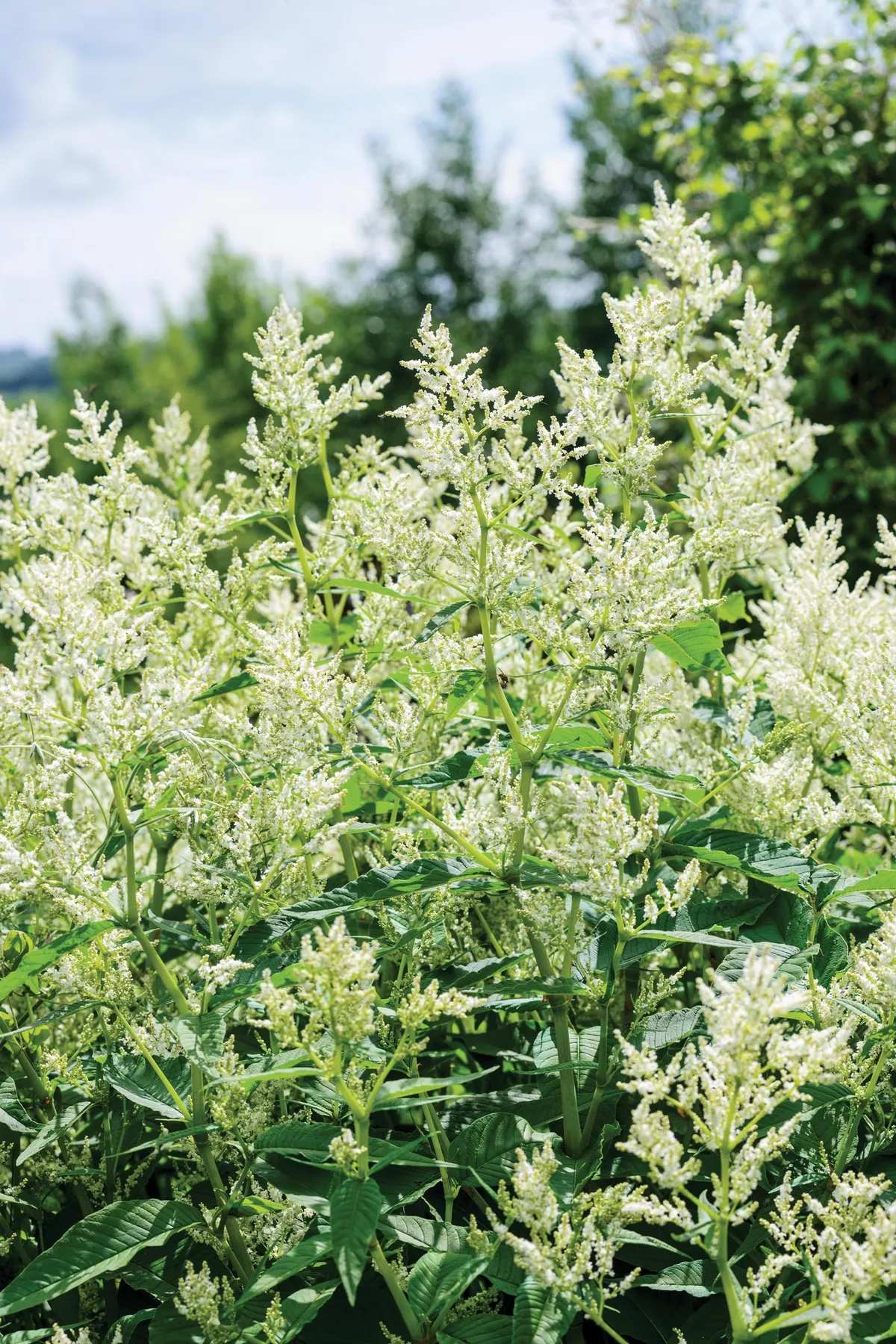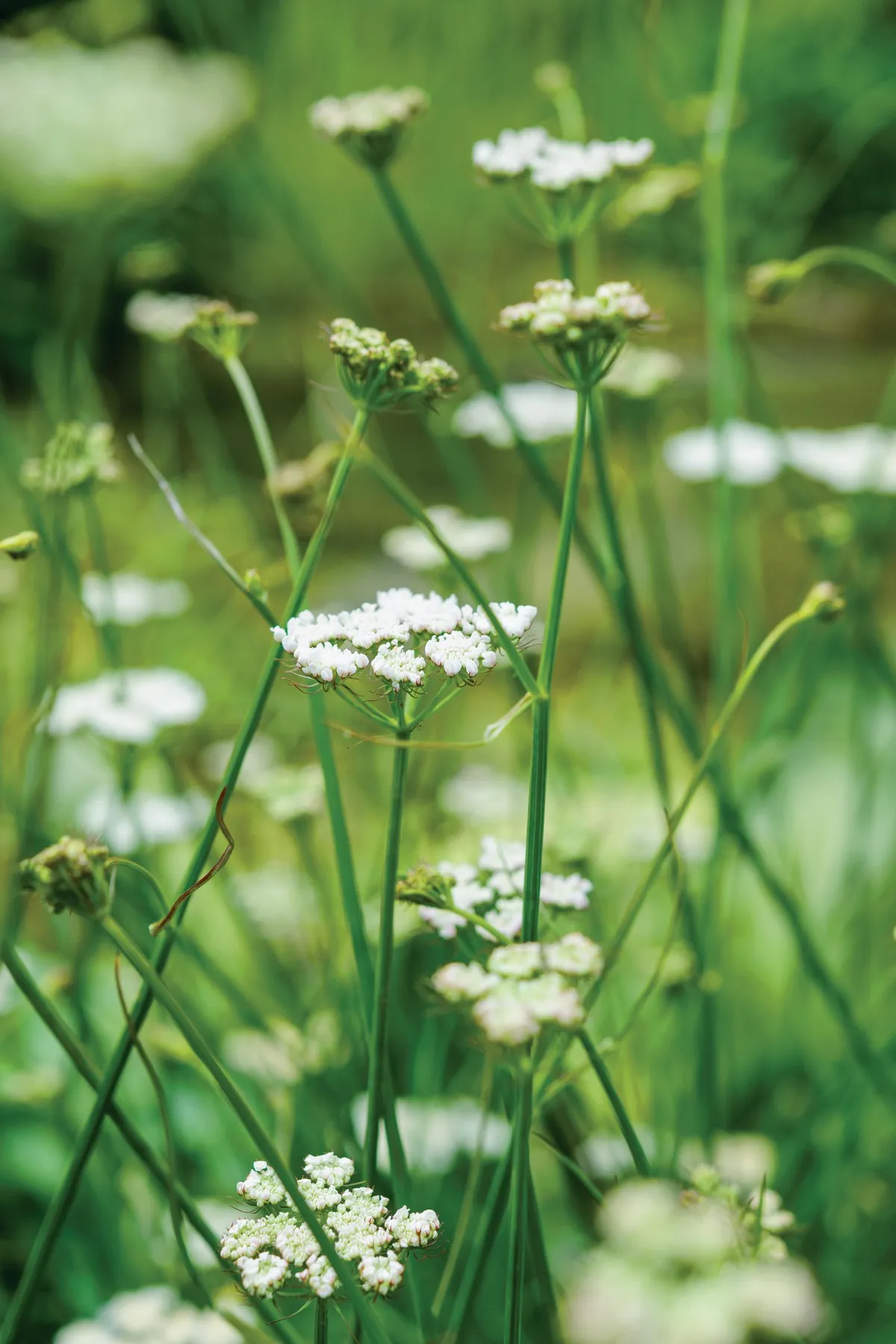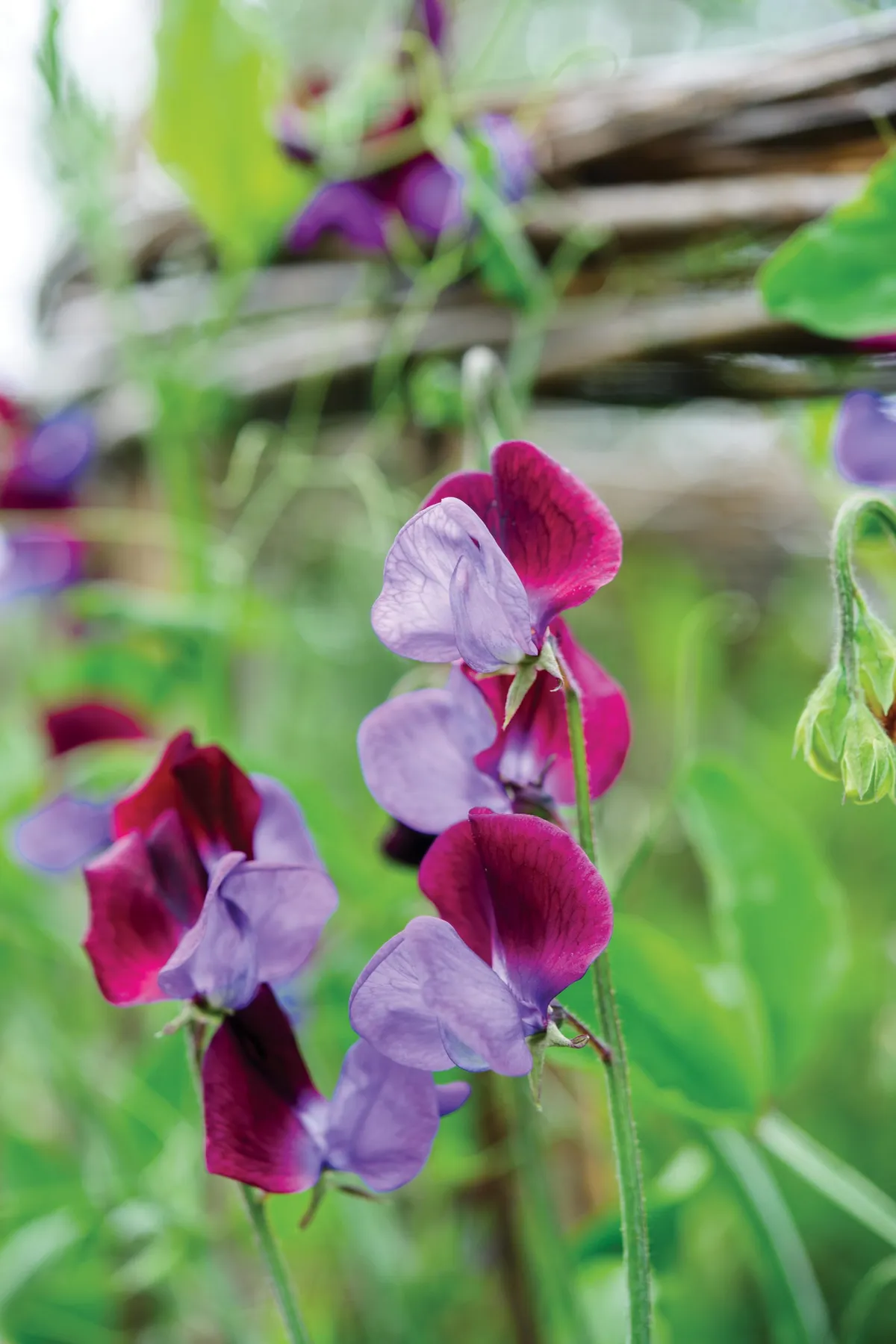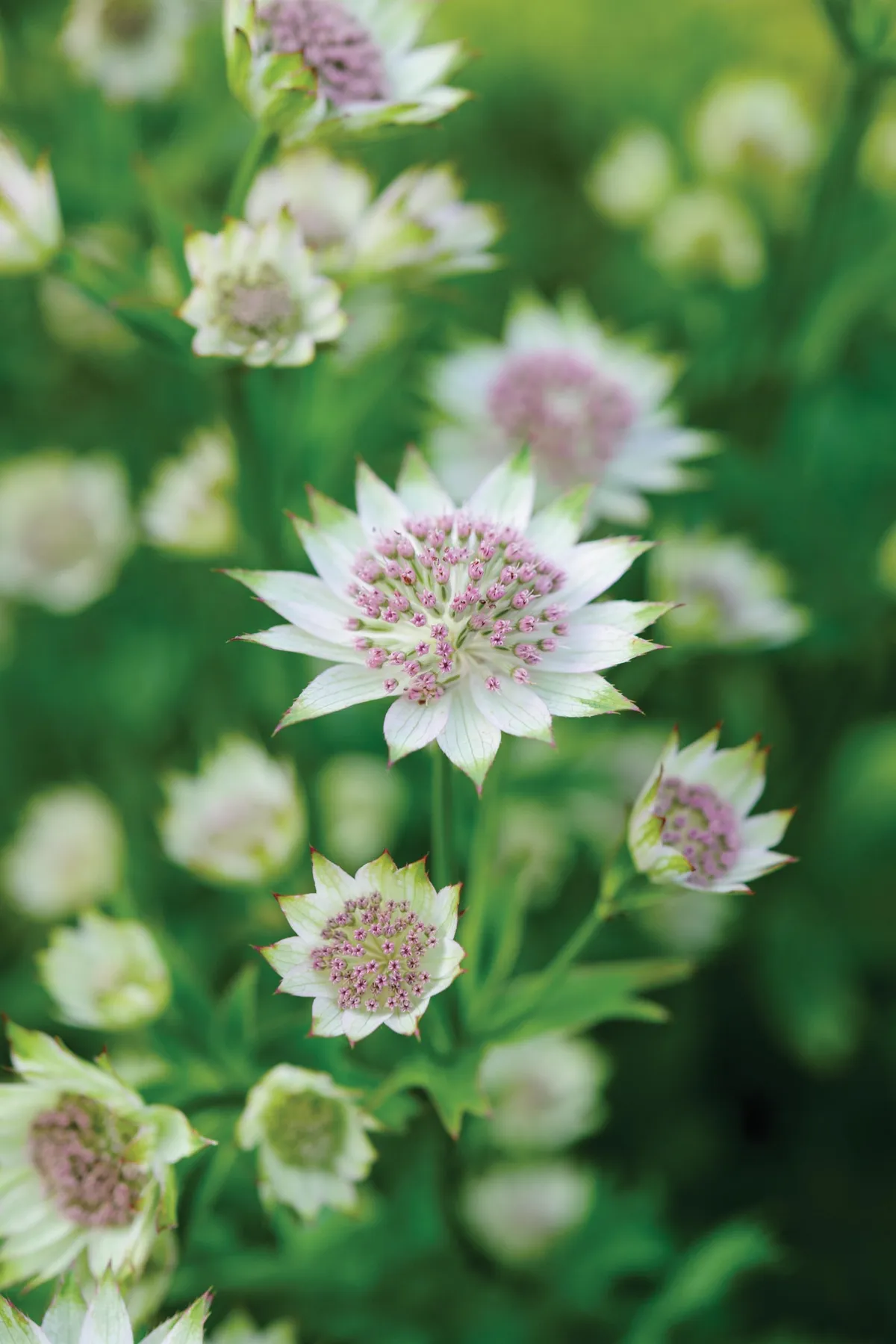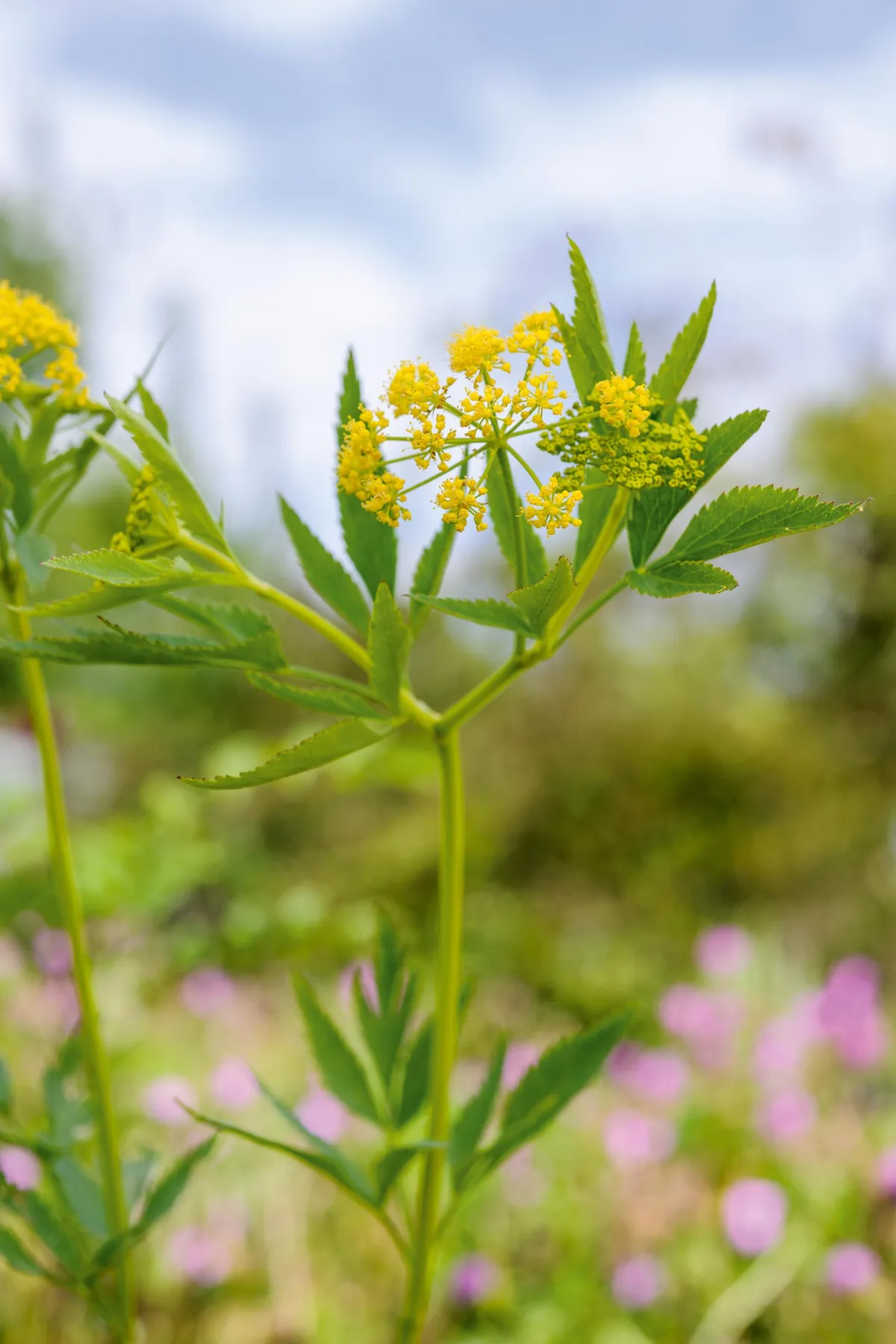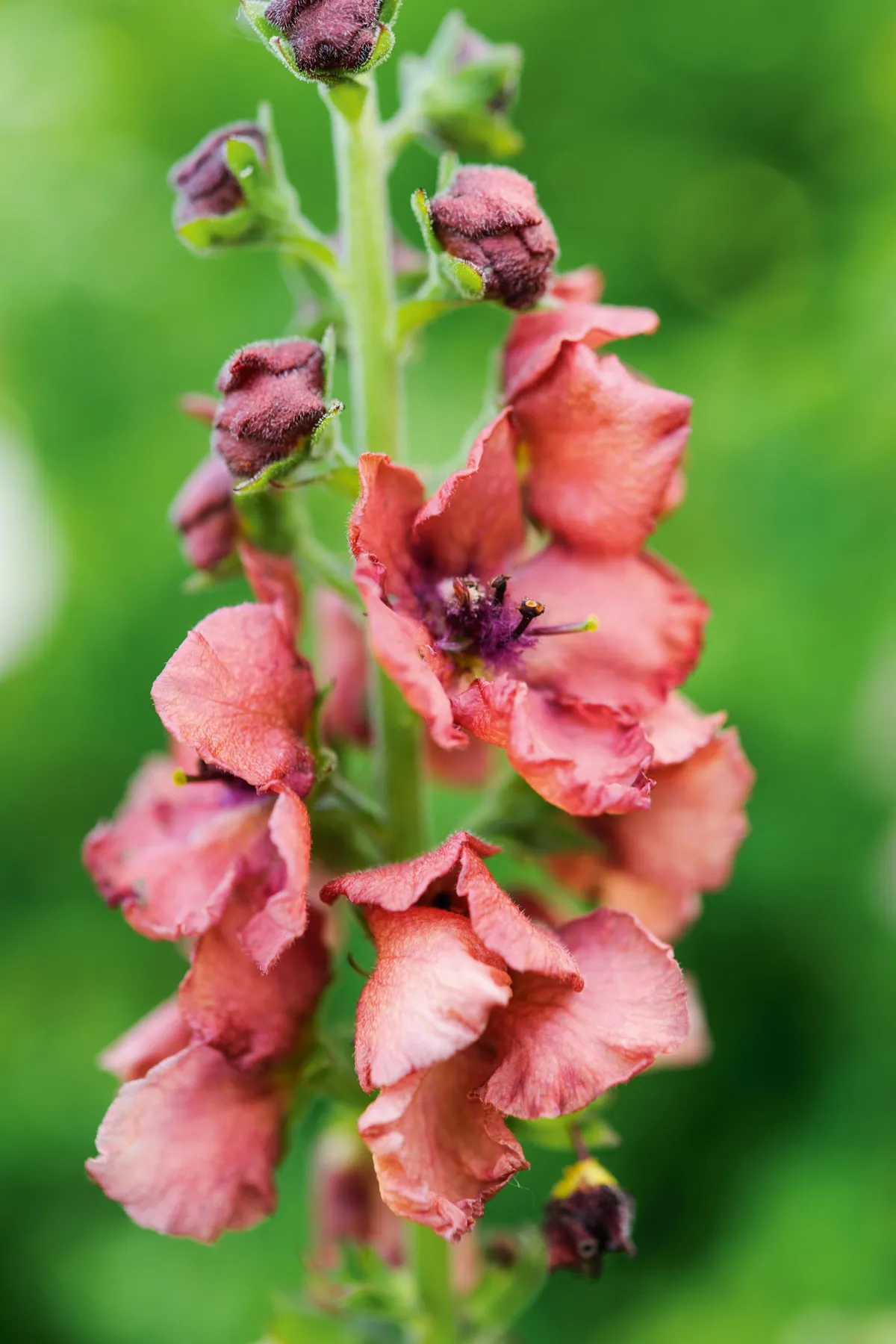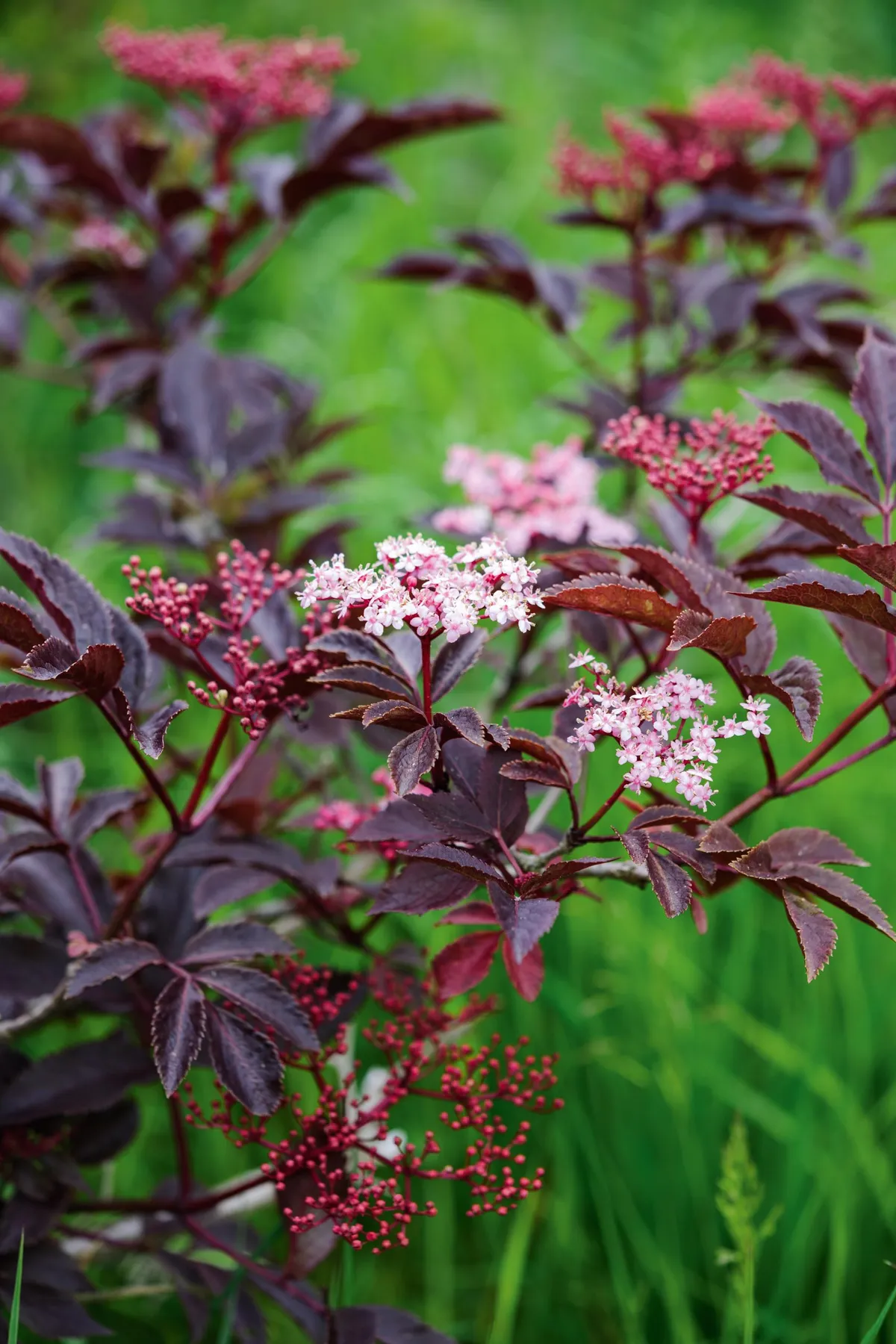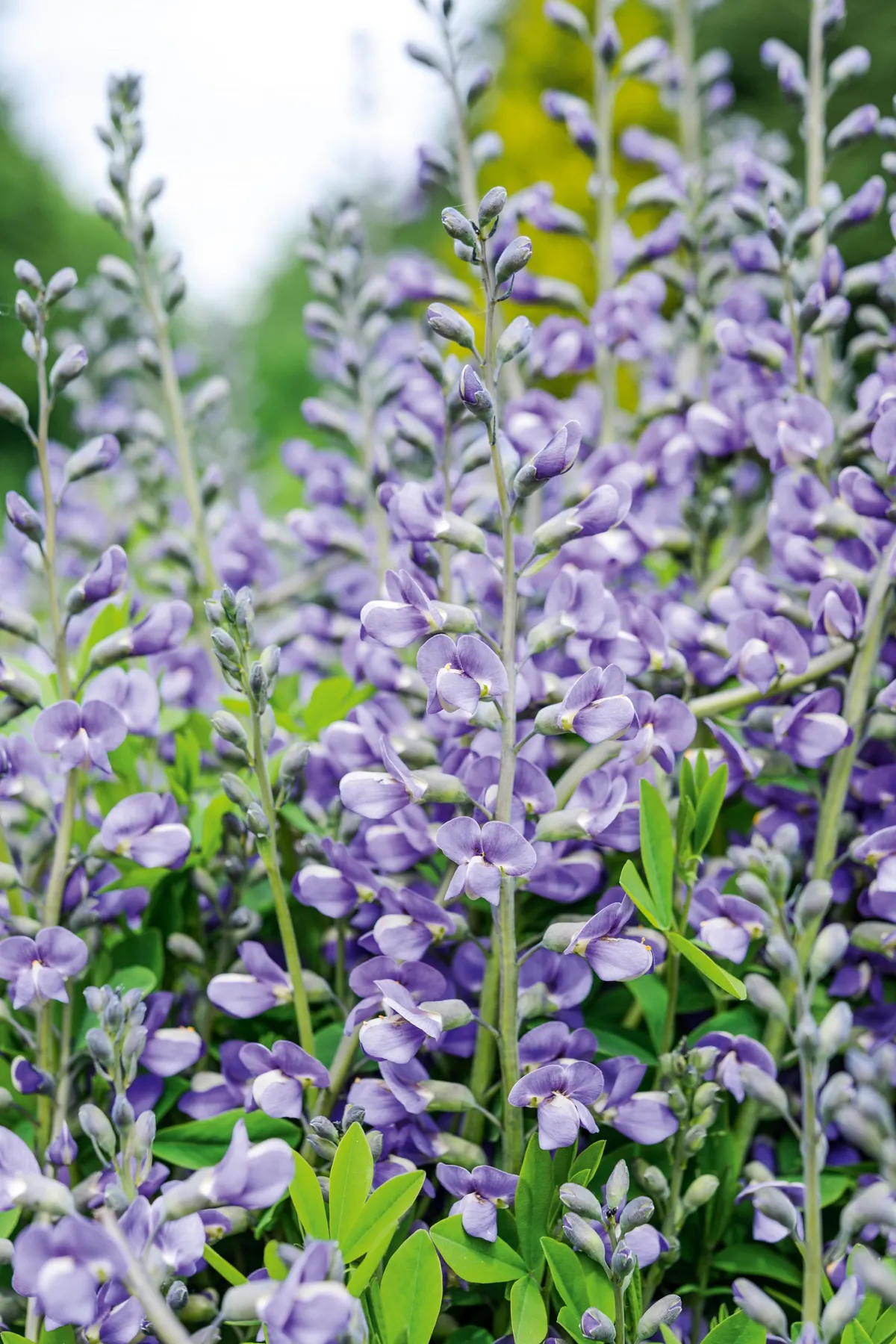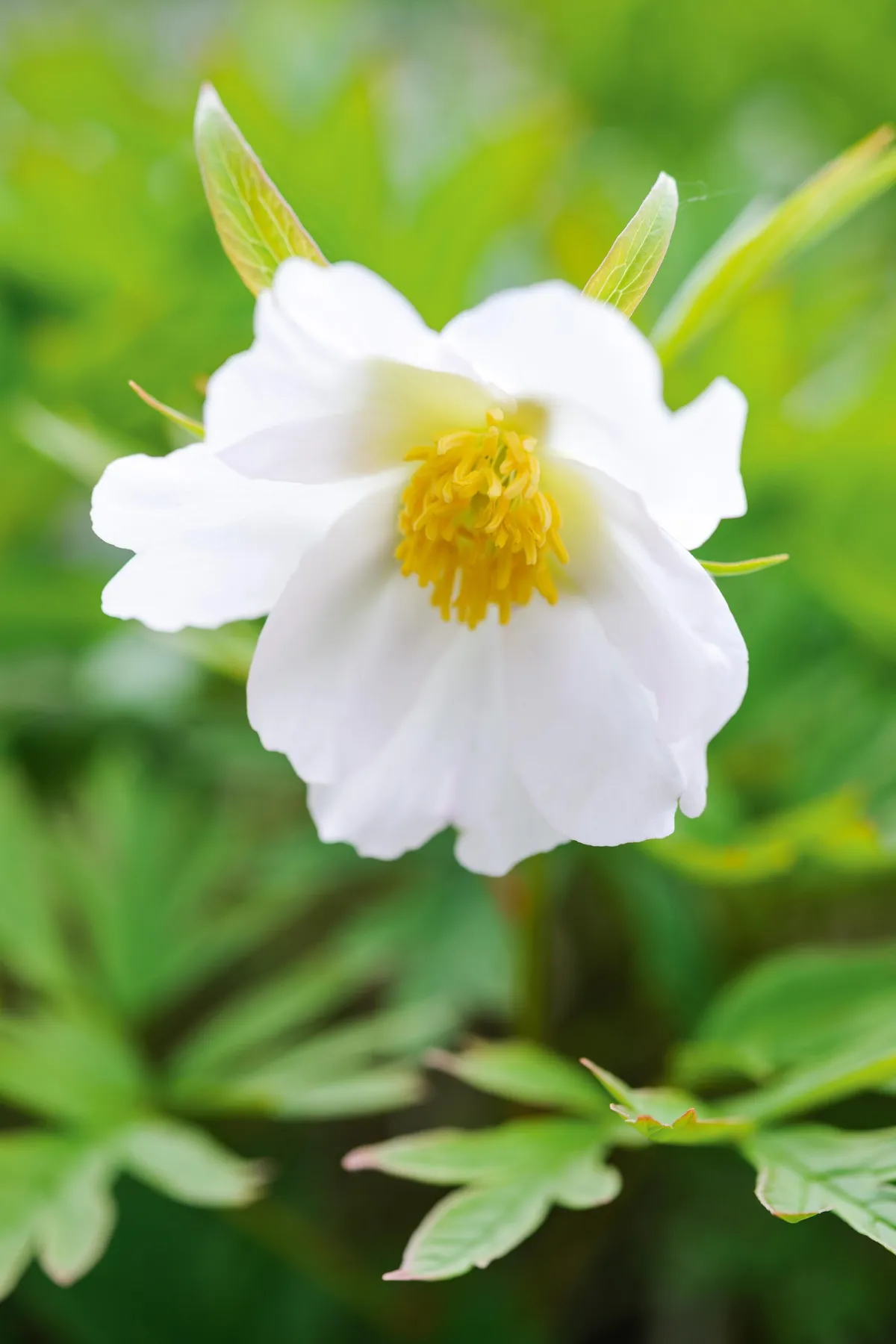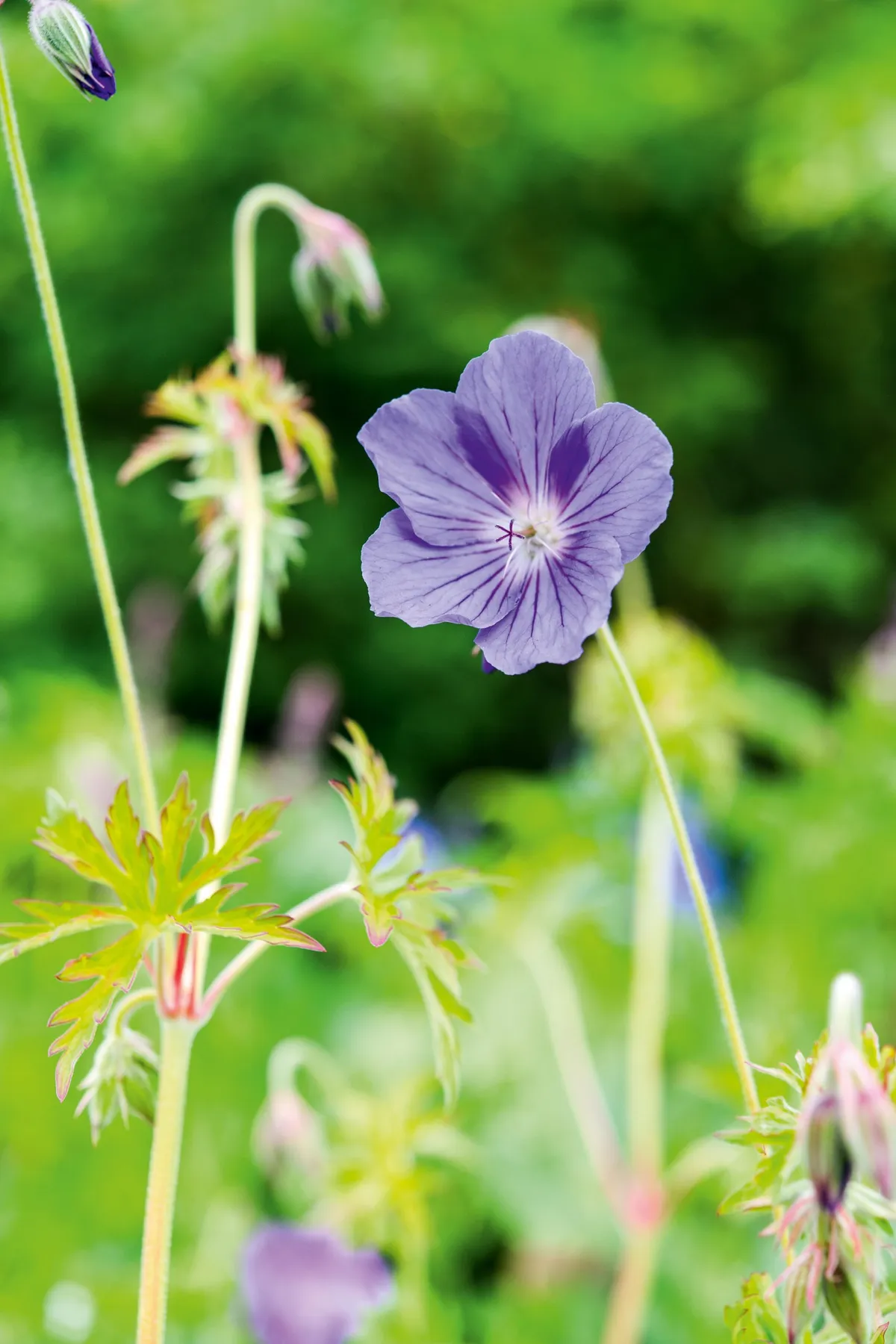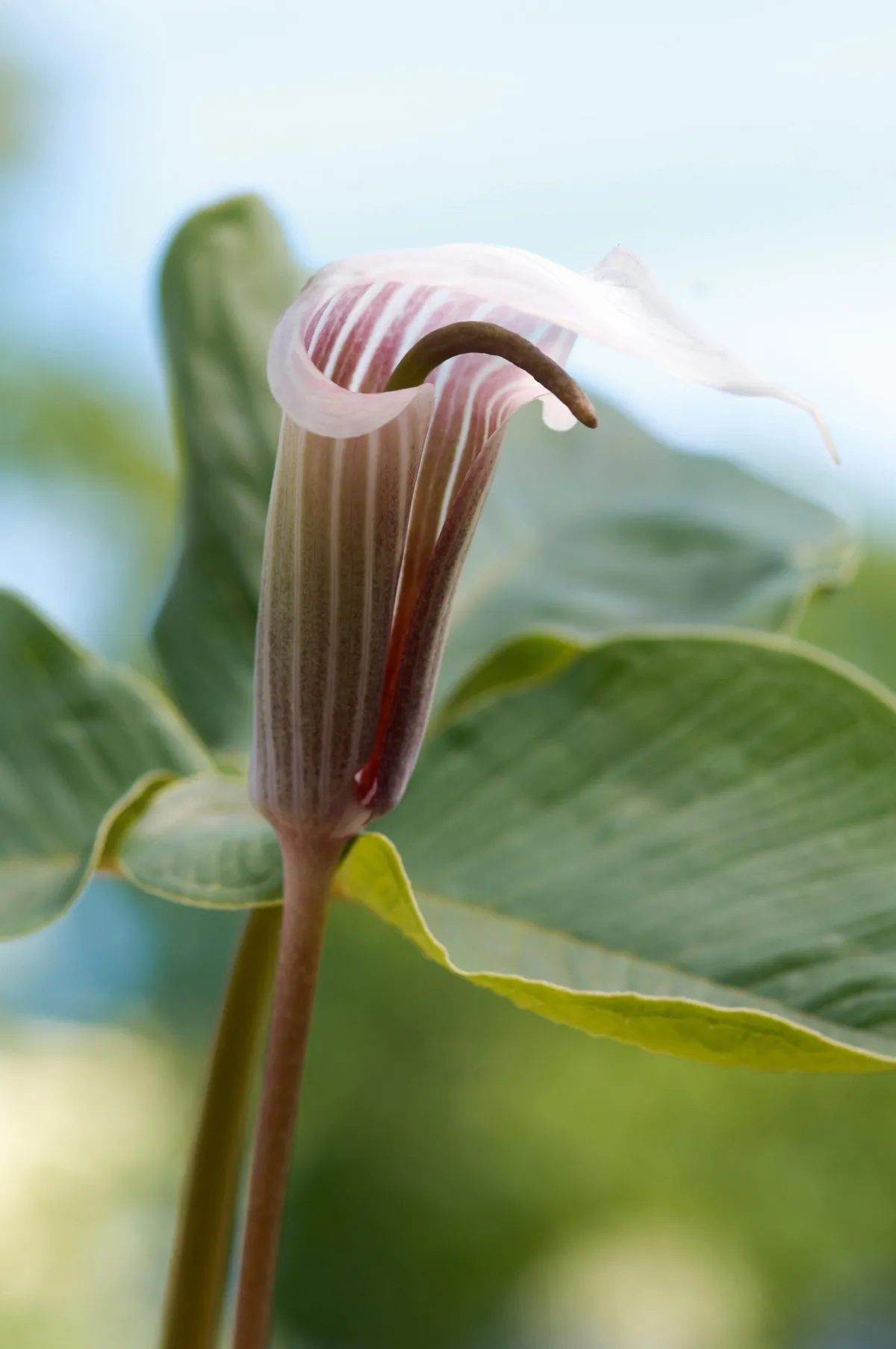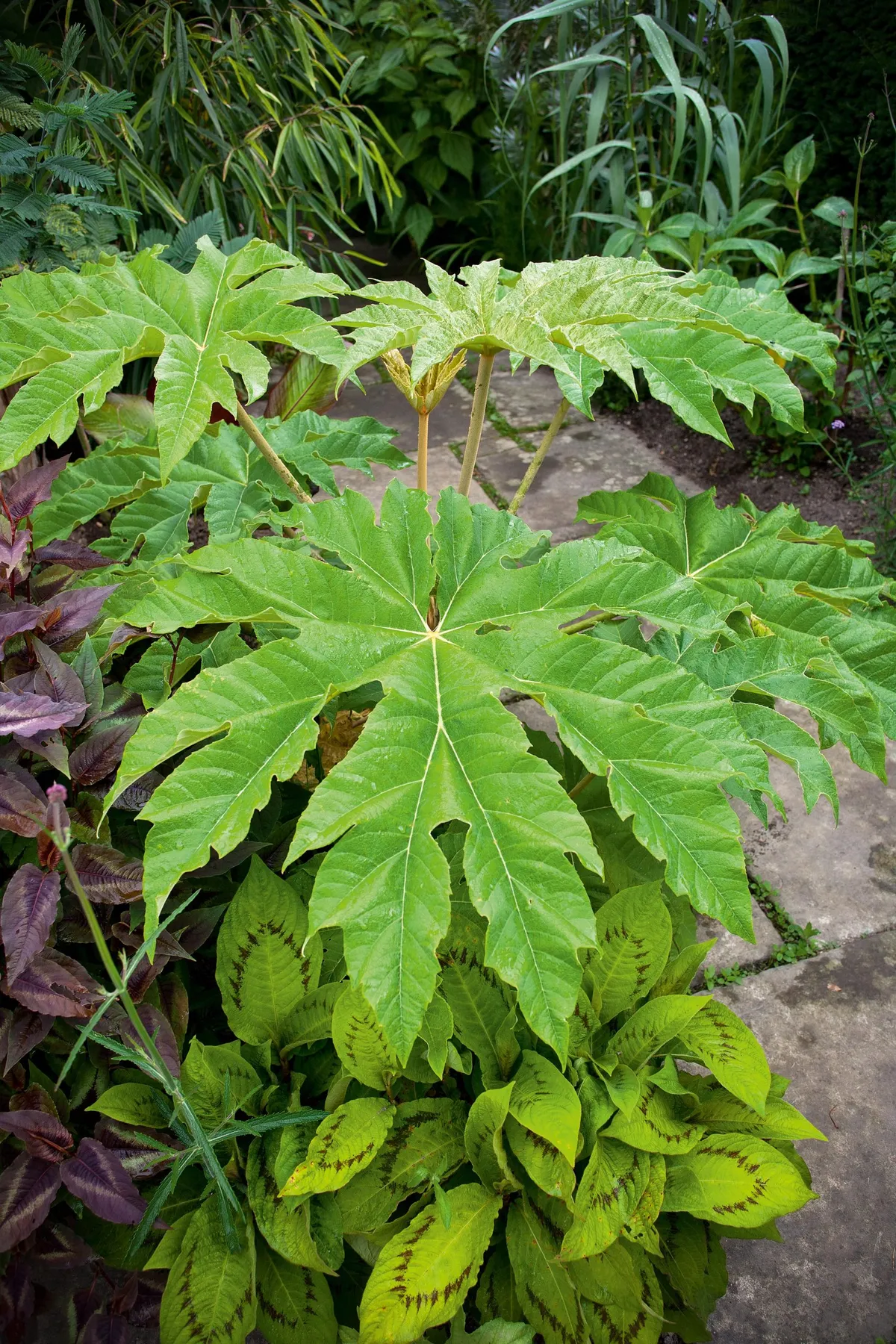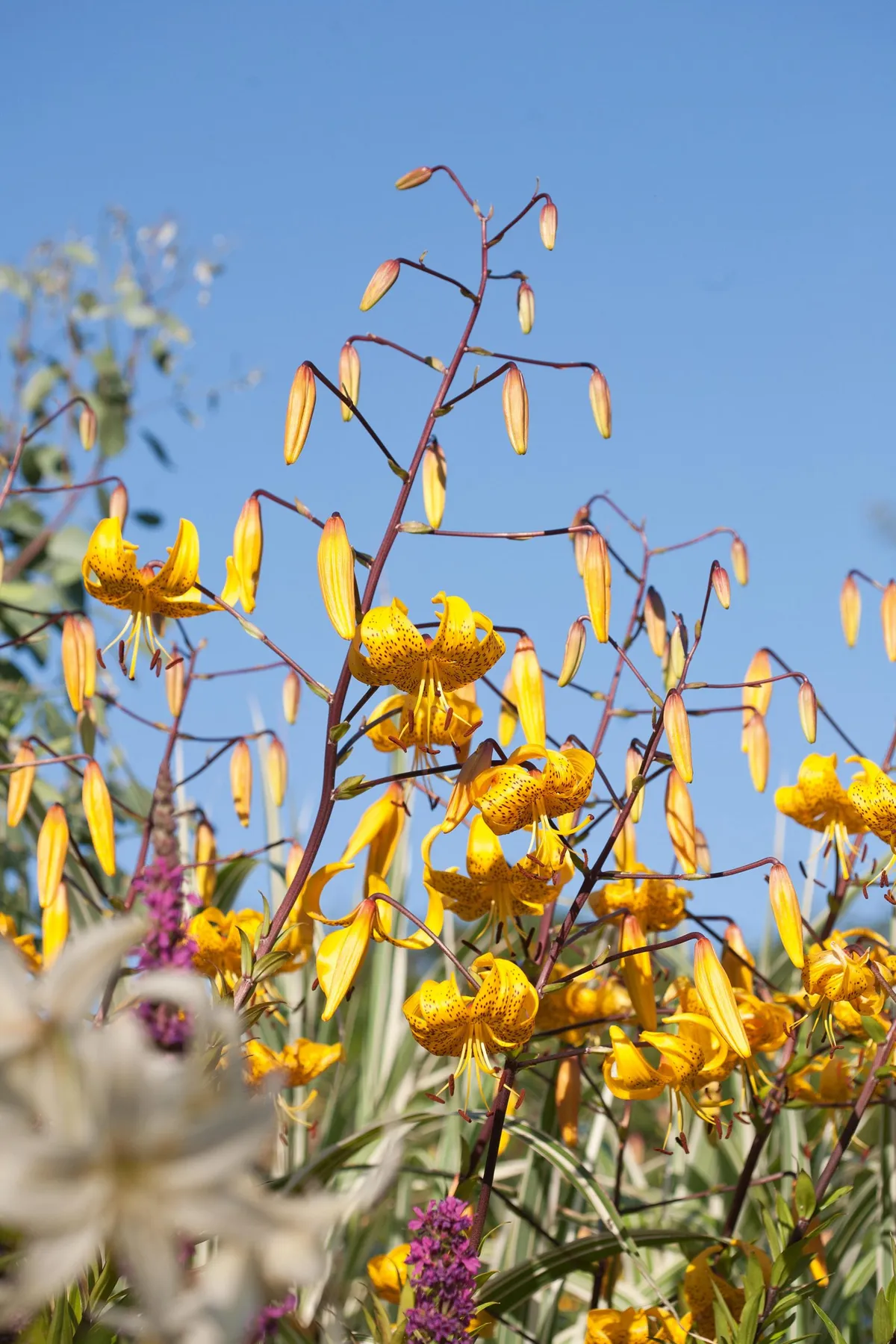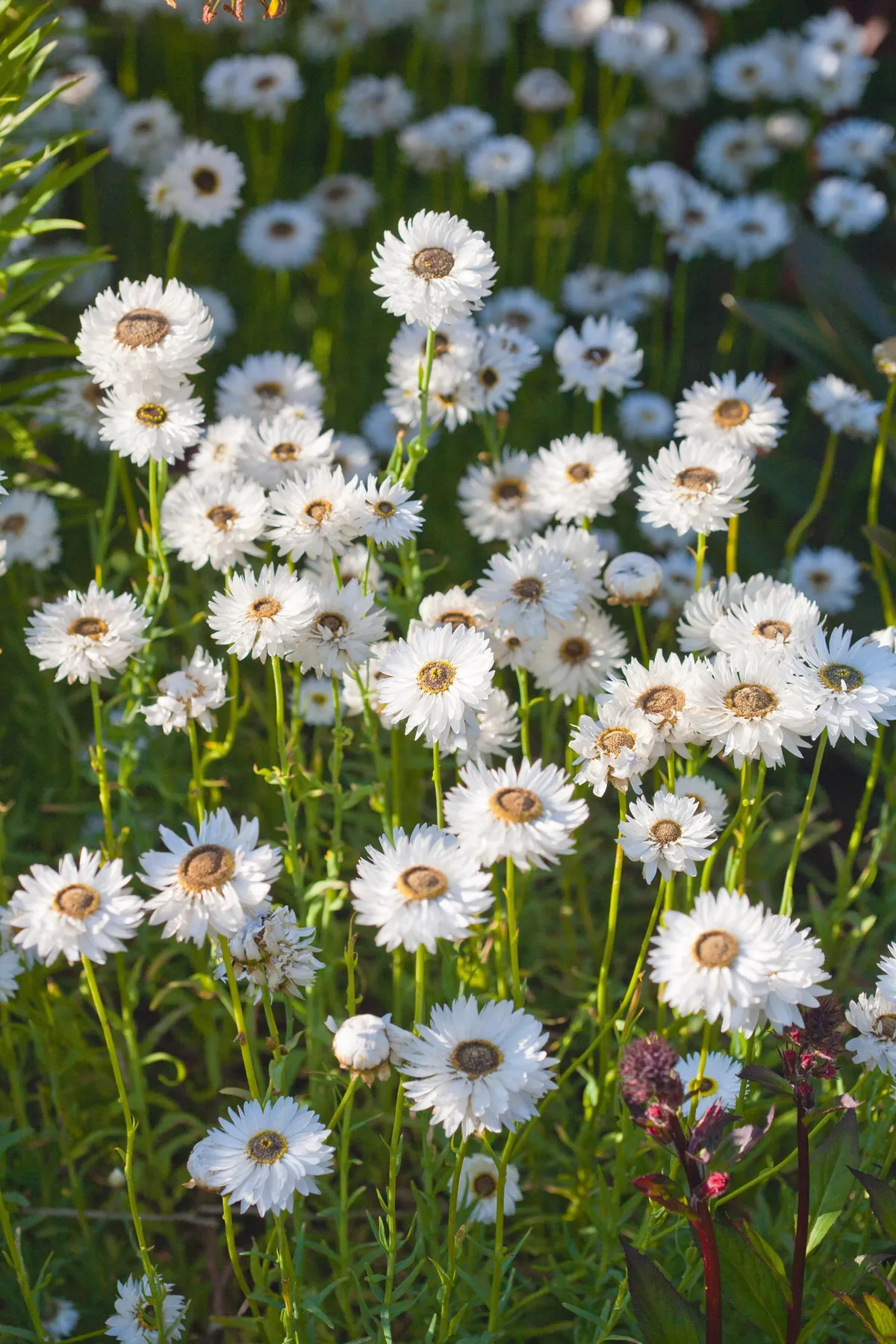Making sure your garden sings throughout all the seasons is key to the pleasure it provides. Below is a list of early summer flowers that will start emerging any time from June and can last up to September. Early summer flowers can bring the beginnings of the promise of summer and make the transformation from spring to summer all the more sweet. The below list has been picked by leading plantspeople: Bob Brown (BB), Fergus Garrett (FG), Hans Kramer (HK), Marina Christopher (MC), Chris Marchant (CM), Derry Watkins (DW) and Matthew Reese (MR).
Enjoy their choices, and don't miss our summer flowers list, too.
Perfect early summer flowers to grow
Valeriana pyrenaica
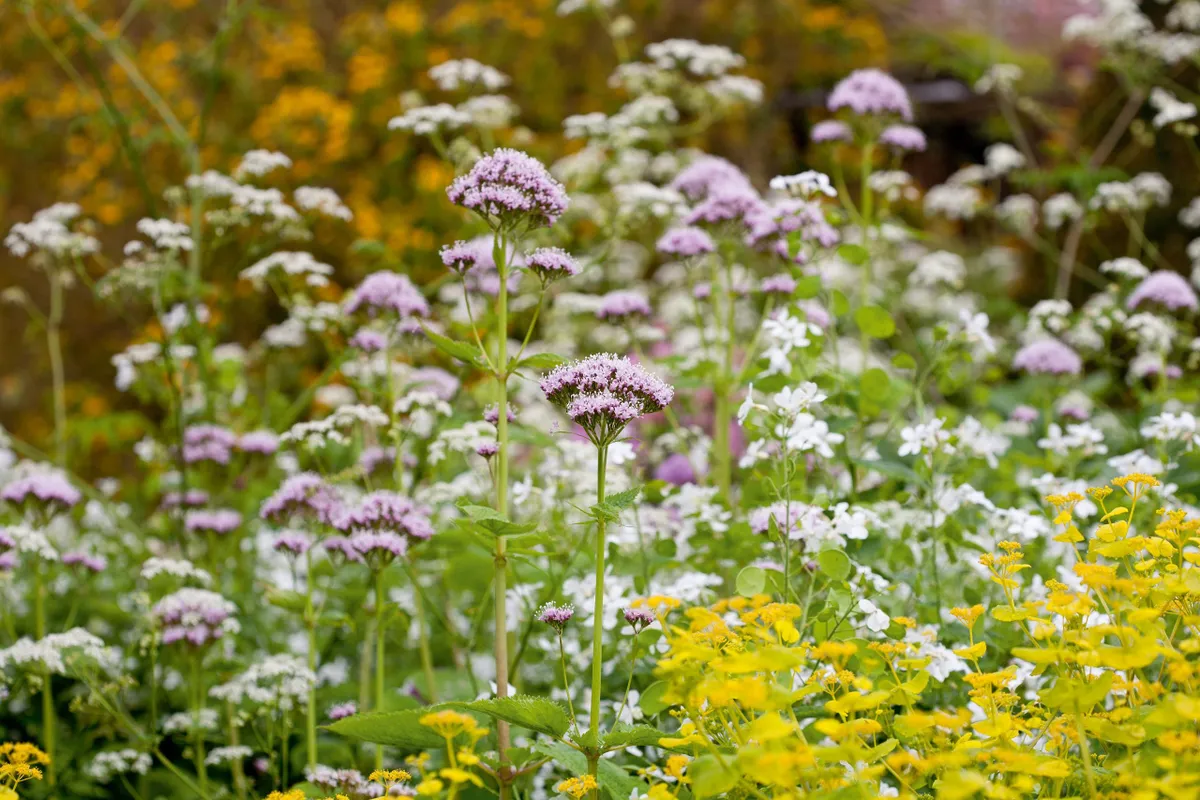
A delightful, clump-forming perennial with pointed, heart-shaped, light-green leaves, which are sharply serrated, puckered and coarsely textured. These are loosely clasped around and oppositely arranged in tiers on upright stems. The densely branched, domed clusters of pale pink to off-white flowers are scented and carried throughout the plant. With age flowers give way to wispy, fluffy seedheads that float elegantly above the main body. Looks heavenly when mixed in with common cow parsley, creating a light and airy tapestry of pink and white. Height 1.2m. Origin Found alongside waterways in the Pyrenees and the Iberian system. Naturalised in the British Isles. Conditions Moist soil in sun or partial shade. Hardiness USDA 4a-9b. Season May to July. FG
Baptisia ‘Purple Smoke’
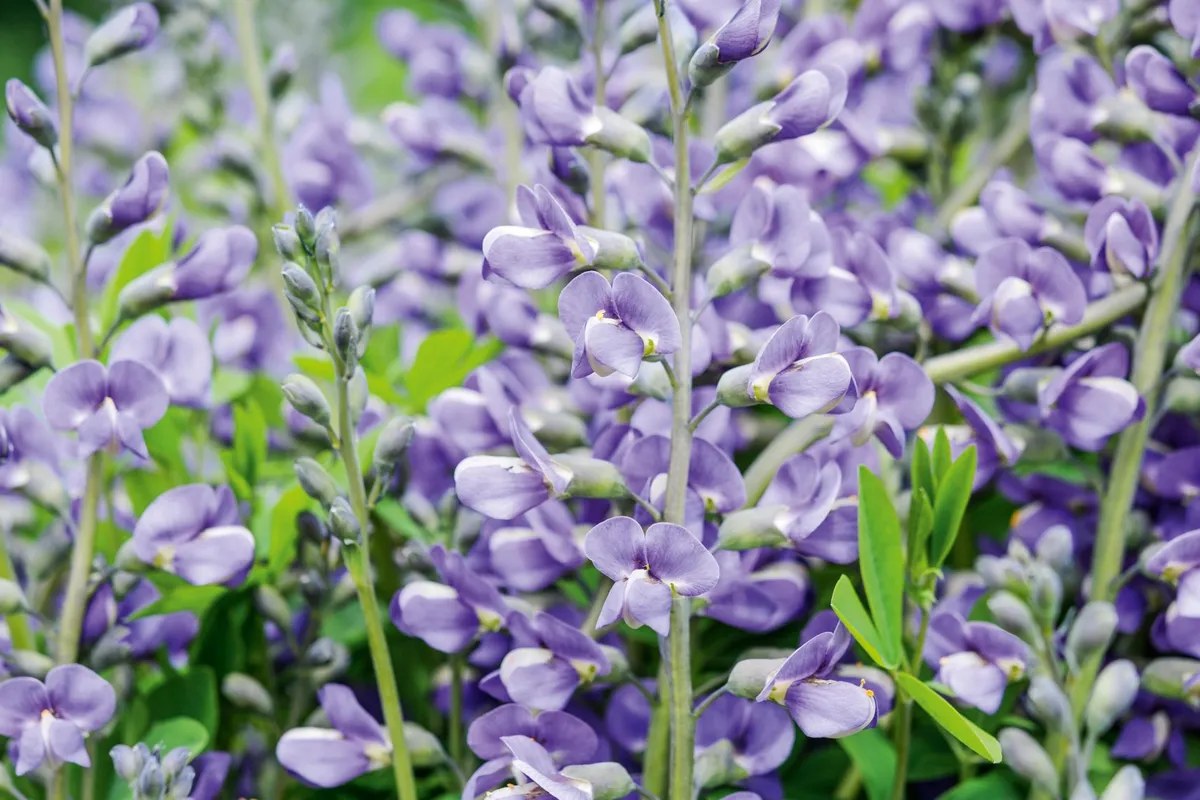
In the mid-1990s there was renewed interest in the genus Baptisia, a member of the pea family, which produces multiple stems with terminal flower spikes in white, yellow, pink, blue and indigo. Most familiar in British gardens is Baptisia australis, a blue-flowered species with upright stems. Baptisia species are promiscuous and the late Rob Gardner of the North Carolina Botanical Garden introduced Baptisia ‘Purple Smoke’ in 1996, a hybrid between Baptisia australis var. aberrans and Baptisia albescens with dark stems and purplish-blue flowers. Height 1.2m. Origin Eastern North America. Conditions Well-drained soil in full sun. Hardiness RHS H7, USDA 3a-9b. Season May to June. MC
Dianthus cruentus

Neat mounds of grass-like foliage give rise to wiry flowering stems with clusters of small, blood-red flowers, usually with bright blue stamens. I say ‘usually’ because to begin with I found that my plants seldom set seed – a mystery to me until some observant friend pointed out that most plants were either all-male (hence the blue stamens) or all-female with a white stigma, and few were both sexes on the same plant. The flowerheads look like fireworks, and work well with smaller grasses such as Stipa tenuissima or Eragrostis curvula ‘Totnes Burgundy’. Height 45-60cm. Origin Balkans. Conditions Well-drained, preferably neutral to alkaline soil in sun. Hardiness RHS H5. Season May to August. MC
Geranium ‘Orion’
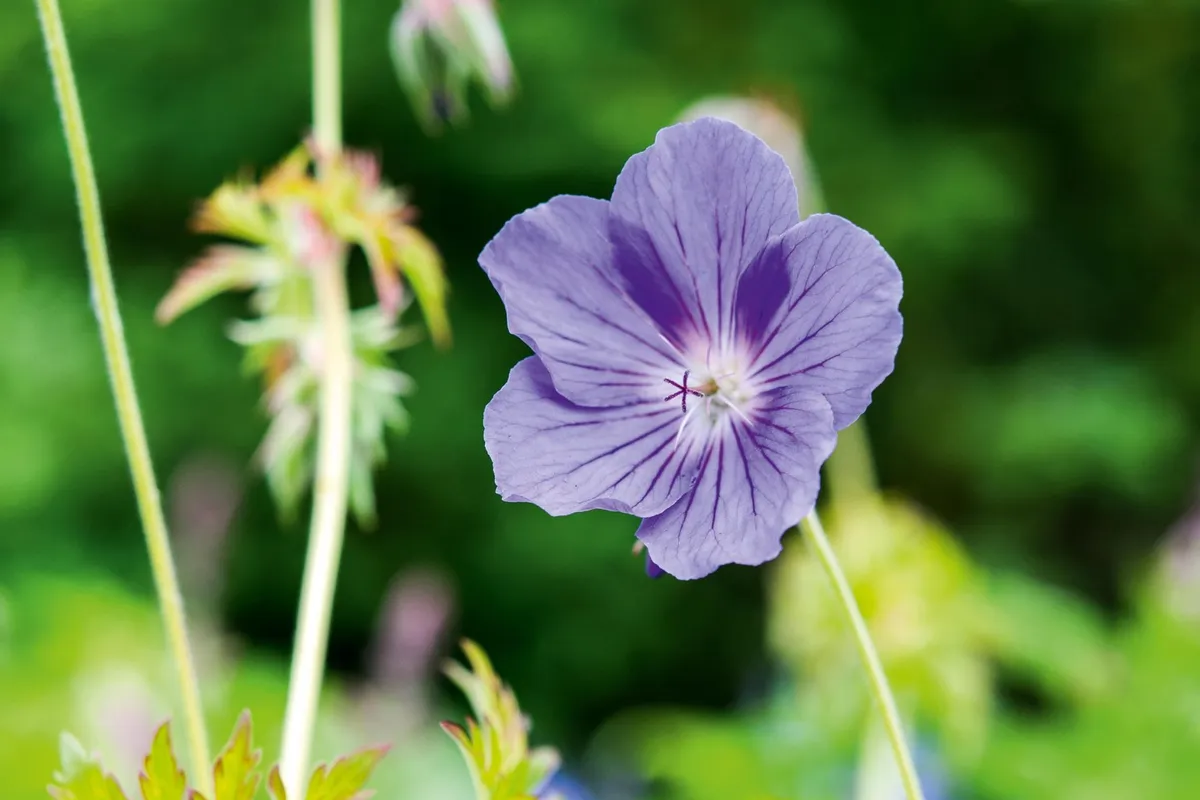
In the late 1990s, Dutch nurseryman Brian Kabbes discovered a seedling of the hardy, mound-forming Geranium ‘Brookside’ (a hybrid between Geranium clarkei ‘Kashmir Purple’ and Geranium pratense) that had darker blue and much larger flowers than its parent. Electric-purple veins guide insects to the central white disc, which must produce copious amounts of nectar as bees are drawn to the blooms in their droves, despite the plant being sterile. It does not produce seed so has an extended flowering season. AGM. Height 60-75cm. Origin Hybrid raised in the Netherlands. Conditions Reasonable soil in sun or dappled shade. Hardiness RHS H7, USDA 5a-9b. Season May to September. MC
Here's more on hardy geraniums
Paeonia delavayi
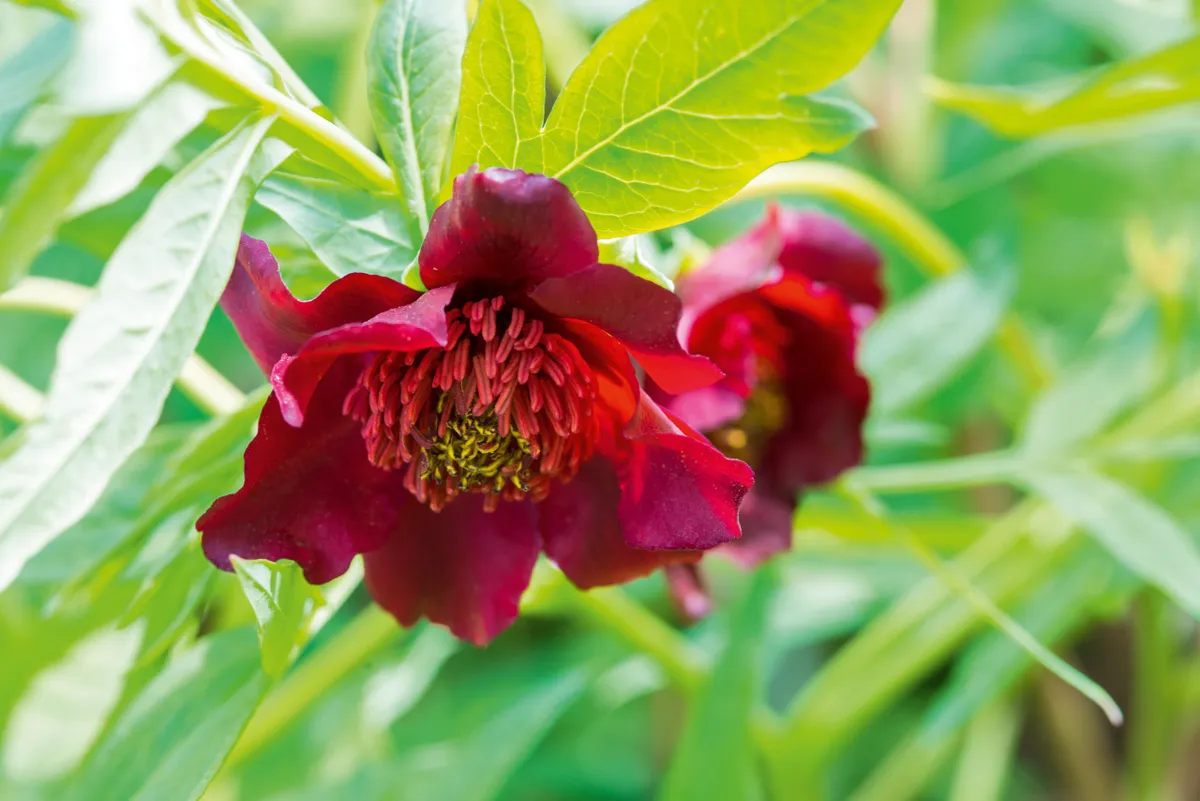
There are numerous tree peonies. I assume many are more fancy than this straightforward Paeonia delavayi. I have had it for at least 25 years in a draughty, dry and cold place in the shadow of oak trees and its performance is admirable. The bushes are more than two metres high with relatively small, blood-red flowers, which I have to admit are slightly obscured by the foliage. But who cares? This is so beautiful and looks clean and healthy until autumn, when the big seedpods loosen their shiny black seeds. Height 1.5-2m. Origin China. Conditions Any soil, as this is far less demanding than herbaceous peonies. Sun to part shade. Hardiness At least RHS H7, USDA 5a-8b. Season May to June. HK
Crambe grandiflora
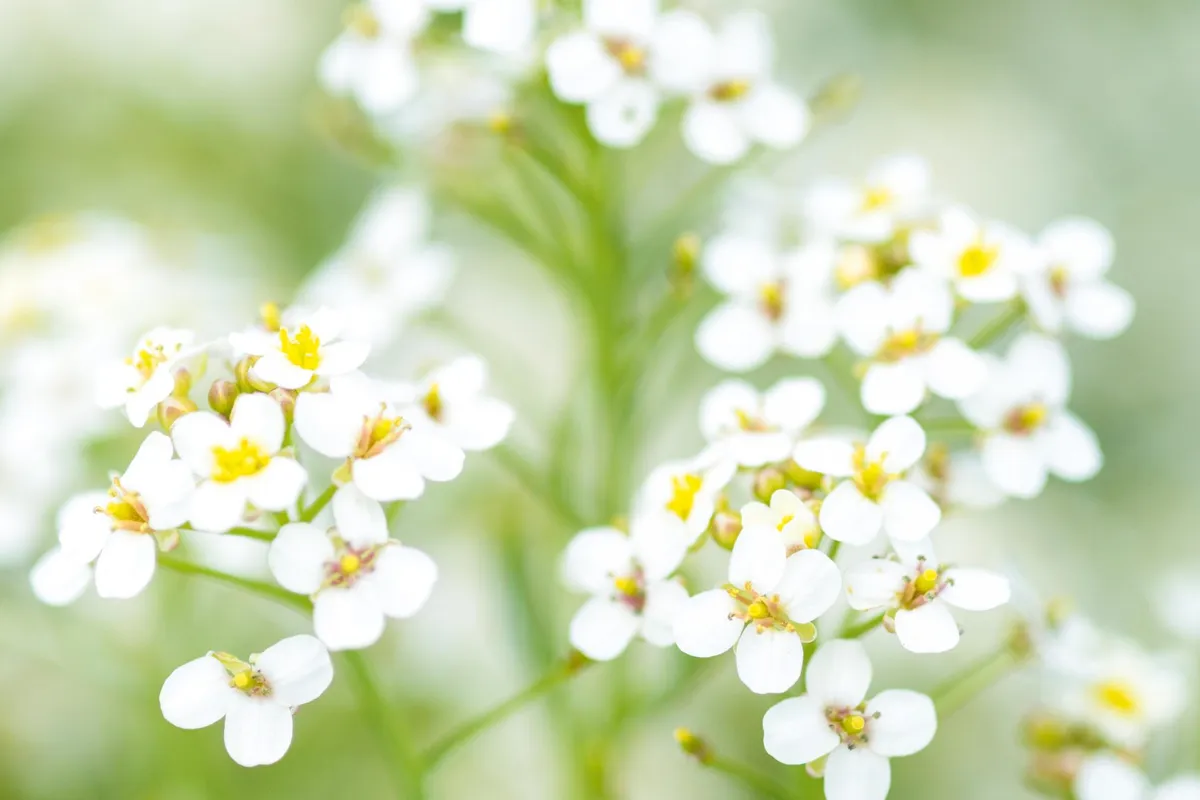
This rarely grown Caucasian species is the perfect mix between the tall Crambe cordifolia and the low Crambe maritima. I can never understand why a plant as good as this is found only in the wild. At the end of May the first flowers start to open and you can smell the unmistakable scent of rapeseed, although this is sweeter. The inflorescence is a wide multi-branched umbel with hundreds of white flowers, bigger than in Crambe cordifolia, and with soft-yellow centres. Seed is easily set and sometimes it germinates en masse in spring. Height 1.2m. Origin Caucasus, Crimea. Conditions Good fertile soil, preferably alkaline, in a sunny spot. Hardiness RHS H7. Season May. HK
Polystichum setiferum Green Lace (= ‘Gracillimum’)
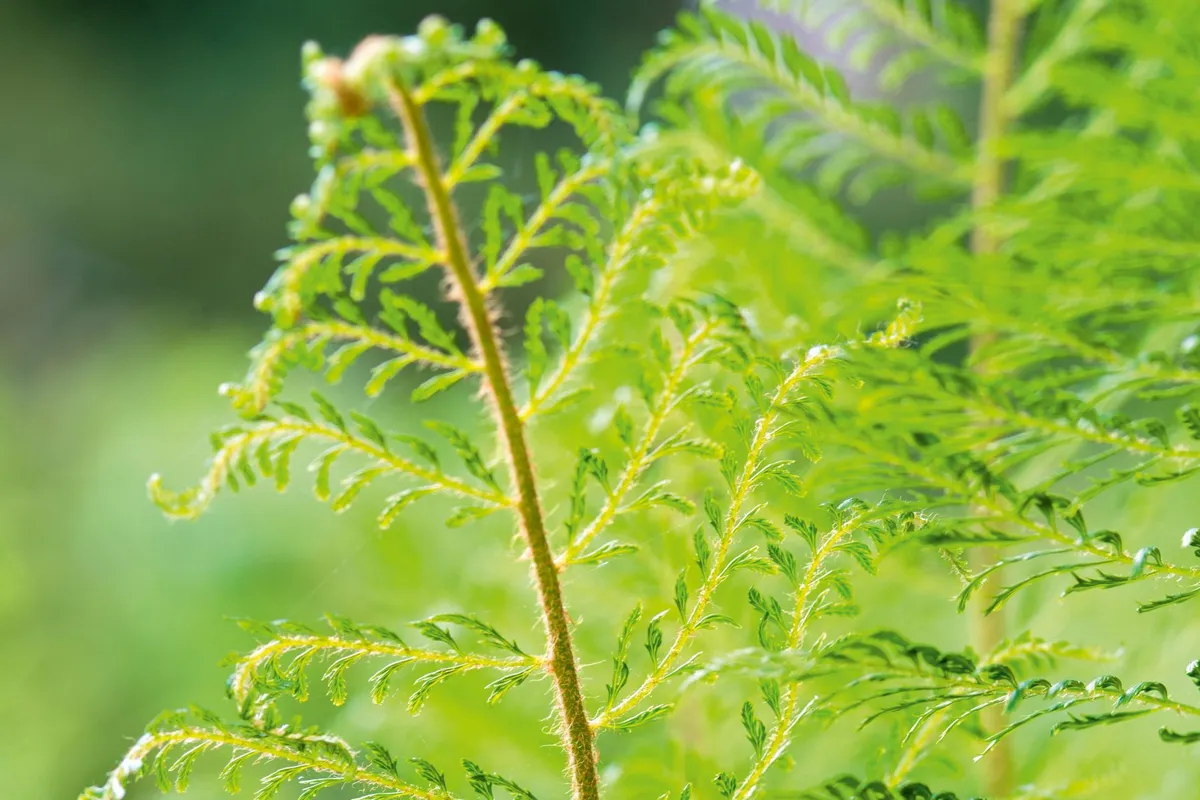
An American visitor to our nursery once described this magnificent fern as ‘dynamite’, and he was right. The fronds of this rare cultivar, a selected seedling of ‘Pulcherrimum Bevis’, are extremely fine, almost thread-like, and yet they remain green throughout winter. Old plants can grow to almost one metre across, but this will take years. You can’t propagate from spores or bulbils – the only way is by division. But once you have it, you can be sure you’ll have it for your whole lifetime. Height 70cm. Origin Garden origin from European species. Conditions Not too dry, alkaline is no problem. Part shade to full shade. Hardiness RHS H7. Season All year round. HK
Erodium ‘Special Rose’
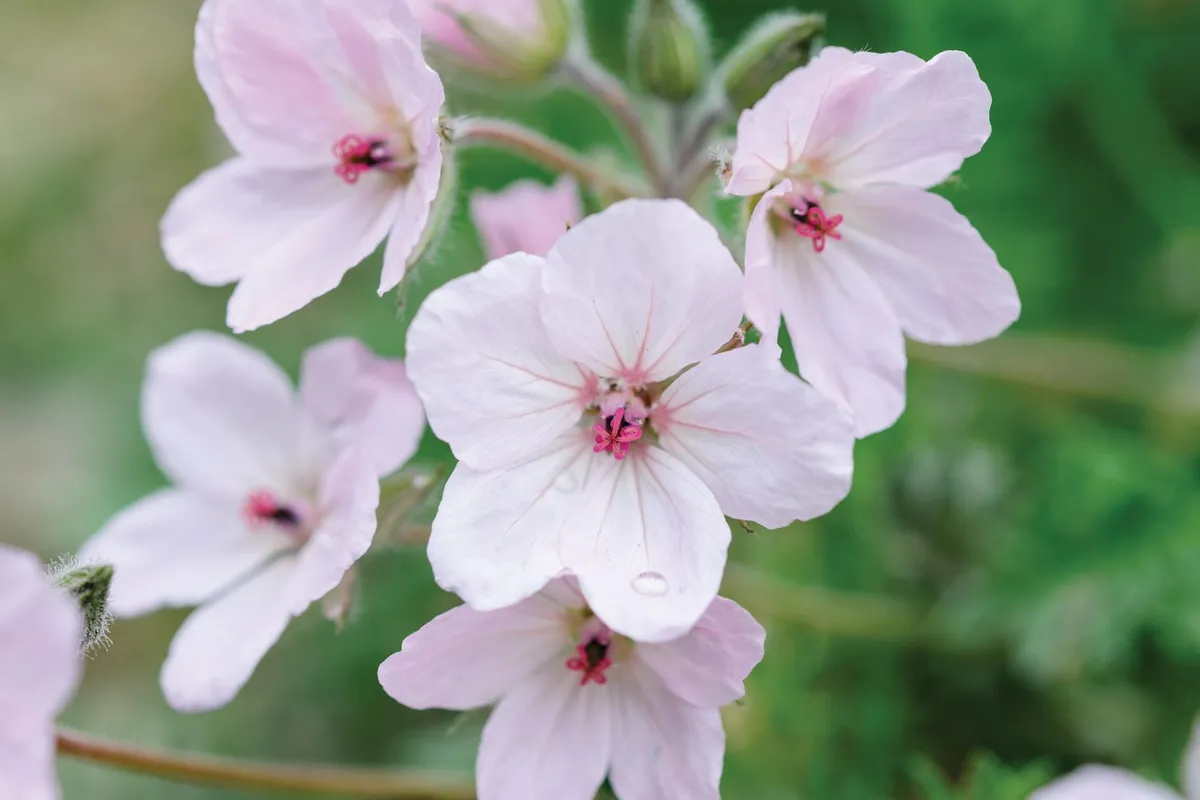
Most erodiums are short-lived, but Erodium chrysanthum goes on and on. It normally has pale-yellow flowers, but this pink hybrid, available for many years as just ‘pink form’, has now been given the name ‘Special Rose’. Because it sets no seed it will go on blooming month after month, providing pale, rose-pink flowers above a neat clump of finely cut, grey leaves. Given plenty of sunshine and good drainage conditions, it will delight for years – my plant is now over 12 years old. To propagate the plant, take short stubby little basal cuttings in March. Height 15-20cm. Origin Hybrid of Erodium chrysanthum x Erodium sp. Conditions Full sun, good drainage. Hardiness RHS H5, USDA 5a-9b. Season May to October. DW
Astrantia ‘Buckland’
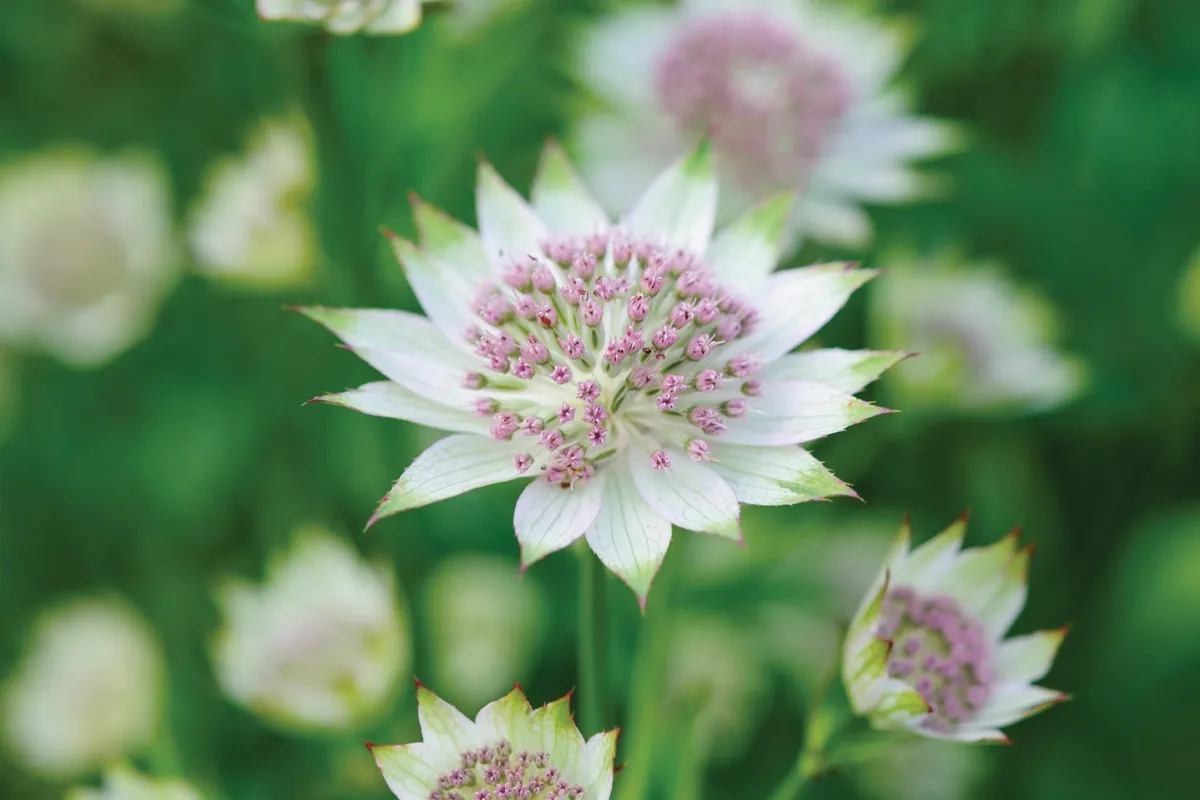
Astrantias are always good-value garden plants, establishing quickly and self-seeding, but the modern hybrids are sterile, putting all their energy into flowering rather than producing seedlings. Thick with flowers in May and June, if cut back hard in early July they will flower magnificently again in September and even October. This is my favourite, its pale-pink flowers like tiny Victorian posies in a ruff of pale-pink bracts. Although they are said to like shade, I find my very best astrantias are sited in damp sun. They just don’t like to dry out. Height 70cm. Origin Hybrid of Astrantia major x Astrantia maxima. Conditions Sun or light shade, soil that’s not too dry. Hardiness RHS H7, USDA 4a-7b. Season May to June, September. DW
Uvularia grandiflora var. pallida
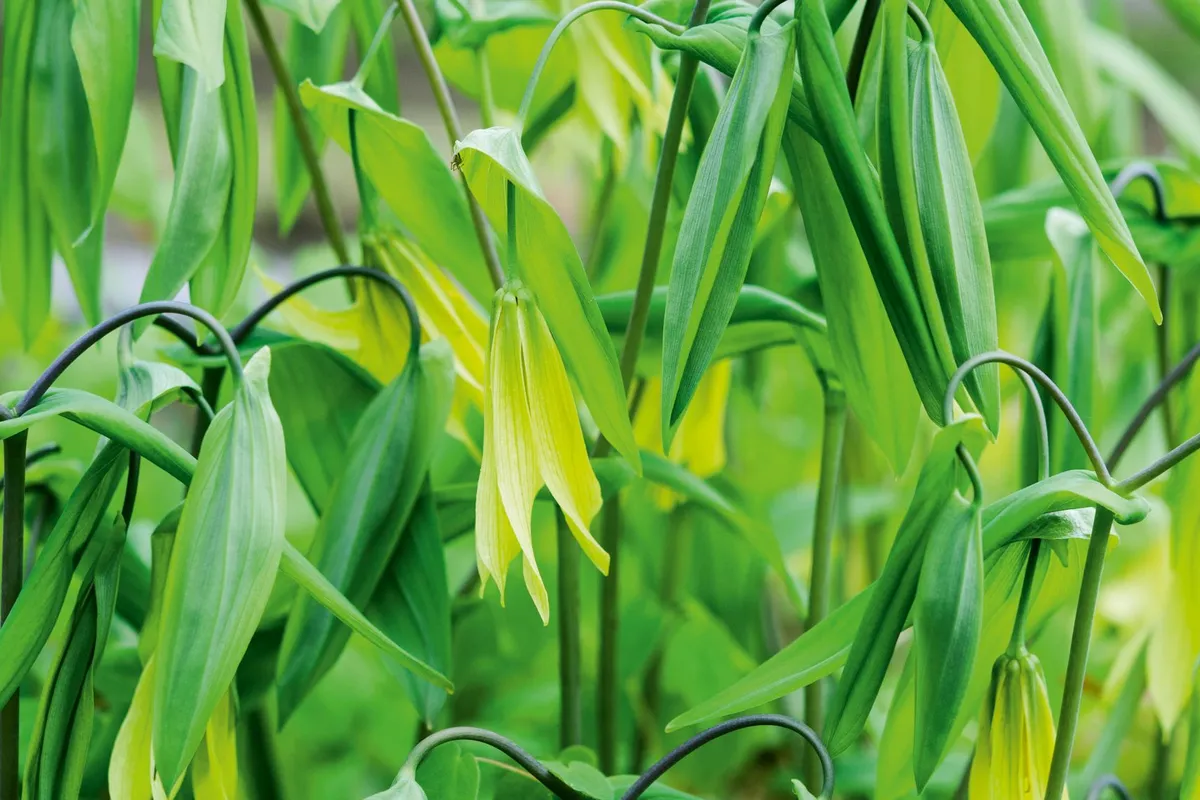
I love spring woodlanders even though they are so ephemeral. Each day produces new promise as plants emerge and flower before the woodland canopy closes to leave them in shade. This form of merrybells has pale, greenish-yellow, pendent flowers on willowy, arching stems and simple, lance-shaped leaves. The six slender petals are gently twisted and sway in the slightest breeze. They are clump-forming and multiply by seed or by creeping rhizomes, and are delightful with epimediums, Anemone nemorosa and eythroniums. Height 30-60cm. Origin Eastern USA. Conditions Moisture-retentive, humus-rich soil in dappled shade. Hardiness RHS H5, USDA 4a-9b. Season April to May. MC
Prunus ‘Shirofugen’
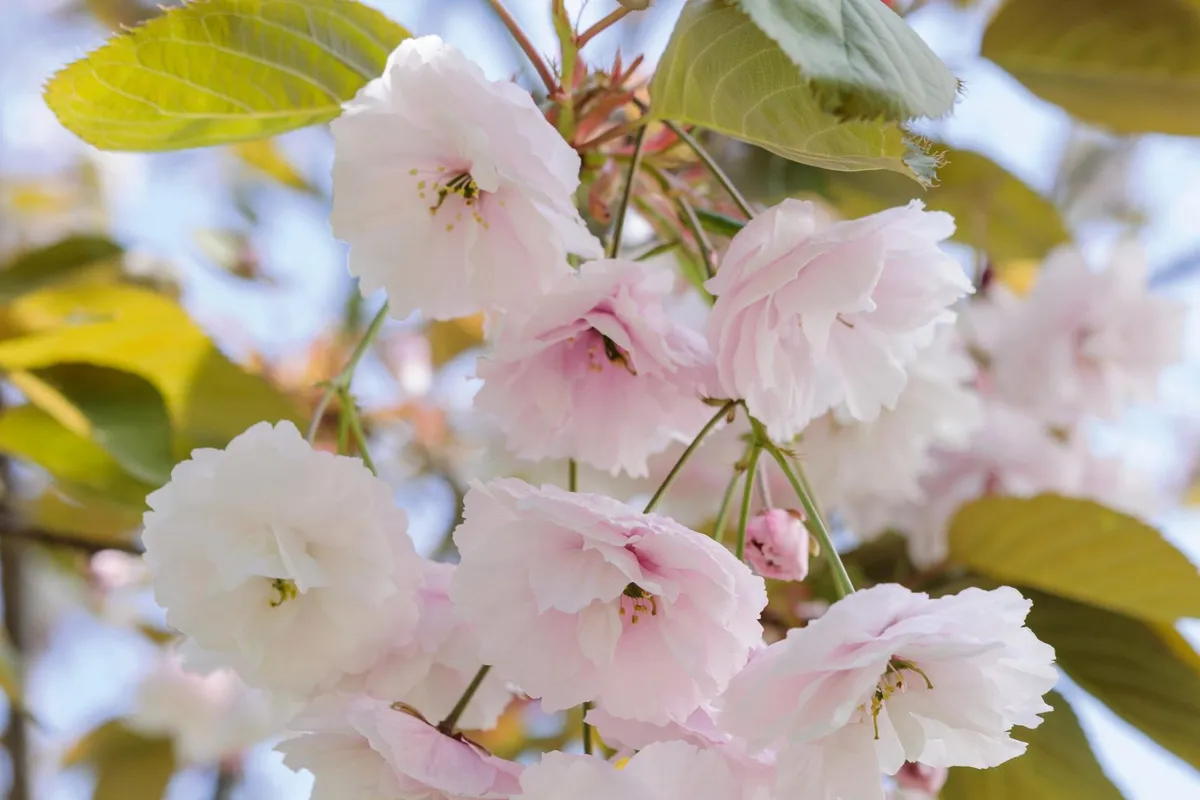
I was first encouraged to appreciate the elegance and beauty of this flowering cherry tree by Christopher Lloyd while I was working at Great Dixter in East Sussex. Christo pointed out the copper tint of the new foliage and the long, pendent stalks, which hold pretty, double flowers that slightly darken with age and scatter to the ground in a confetti of petals. Its leaves also colour well in autumn before falling. It is best grown asa multi-stemmed tree, which will enhance the plant’s spreading habit. AGM. Height 4-6m. Origin Japan. Conditions Good, moist garden soil. Hardiness RHS H6, USDA 5a-7b. Season Flowers in May followed by colourful foliage in autumn. MR
Bunium bulbocastanum
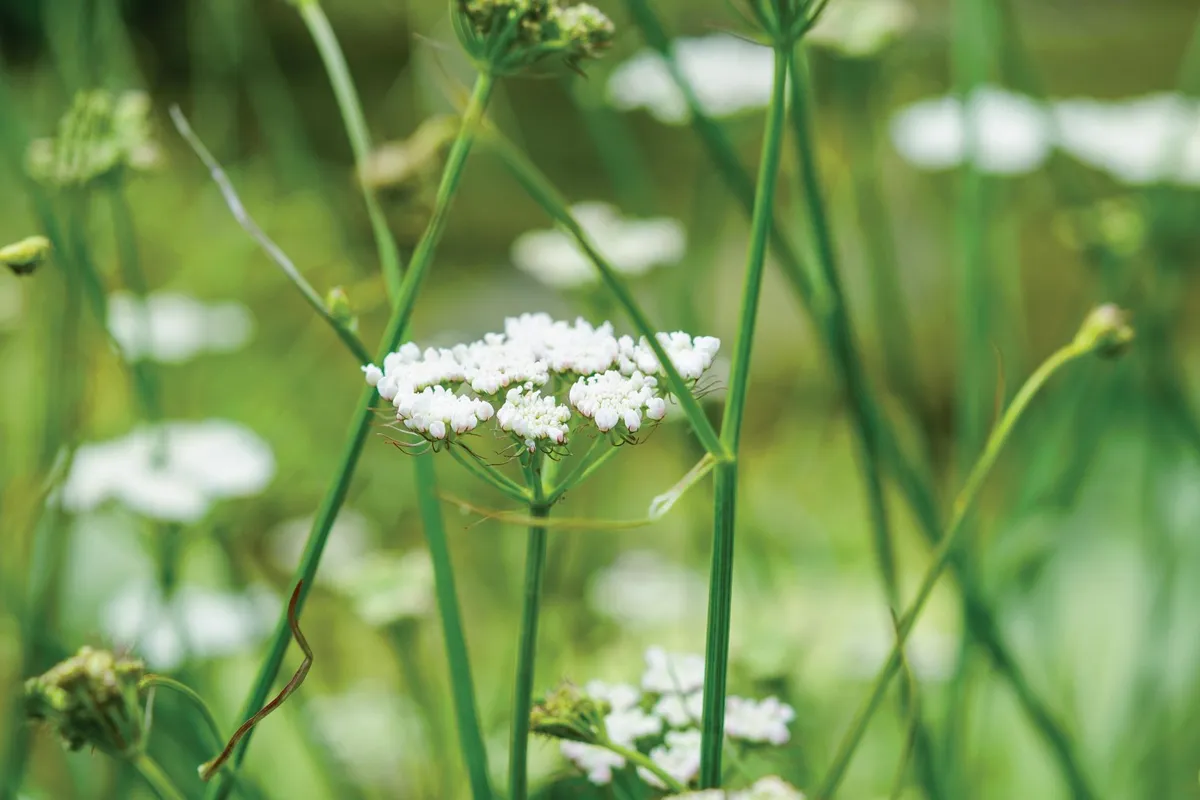
Bunium bulbocastanum is also known as the earth chestnut, thanks to its small, crunchy tubers (pignuts), which can be eaten raw or cooked, and taste like sweet chestnuts. Its seeds are edible too, but I grow it for its beautiful, fine foliage (which can also be eaten) and for its perfect, white umbels. I was told it liked a dry site, so I planted it in gravel where it became a pretty 40cm-high plant, but it then sowed itself into sticky clay at the edge of the pond where it enjoyed life so much that it grew into a ravishing 90cm of airy leaves and tall-stemmed flowers. Height 50-90cm. Origin Europe and Asia. Conditions Sun, damp or dry. Hardiness RHS H5, USDA 5a-8b. Season May to June. DW
Euphorbia palustris
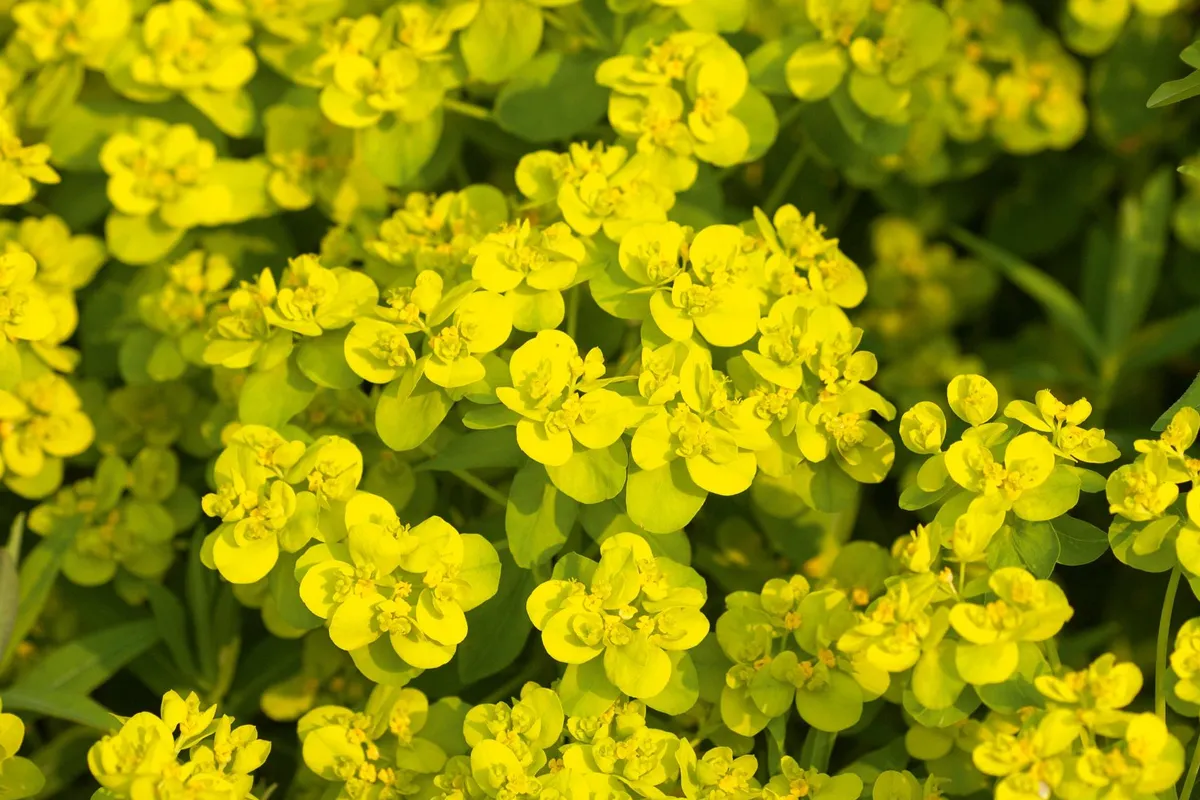
The fresh green stems of this euphorbia carry arching, long, linear, dark-green leaves, which are flashed with white midribs, leading to a bun of acid-lime green at the centre. The stems elongate as the central floret flattens out. Flowering side branches enhance the impression of electric acid green, bleeding down the uppermost canopy. In midsummer the plant takes on a green willowy habit only to switch on again for the autumn with crimson, yellow and orange. AGM. Height 1.2m. Origin Native to Europe from Sweden down to Spain and east to the Caucasus. Conditions Wet moist soil; will thrive in swampy conditions in sun or part shade. Hardiness RHS H4, USDA 5a-9b. Season Flowers May to June; autumn colour October to November. FG
Rosa ‘Penelope’

Graham Stuart Thomas described Rosa ‘Penelope’ as ‘one of the very best roses for creating a white effect without being white’ and it looks particularly good with greys and pale, icy blues. It is continuous in flower and superb for cutting – Vita Sackville-West noted that the buds continue to open once in the vase. The semi-double blooms are held in airy sprays and open peachy-pink, turning white with age. The sprays are a beautiful ensemble of old and new blooms, and importantly, the flowers shatter once finished so do not sully the show. Deadhead and feed to keep the display going. AGM. Height 1m. Origin Garden origin. Conditions Any good garden soil in sun. Hardiness RHS H5, USDA 5a-10b. Season June to July. MR
Looking for more rose inspiration?
Nectaroscordum siculum
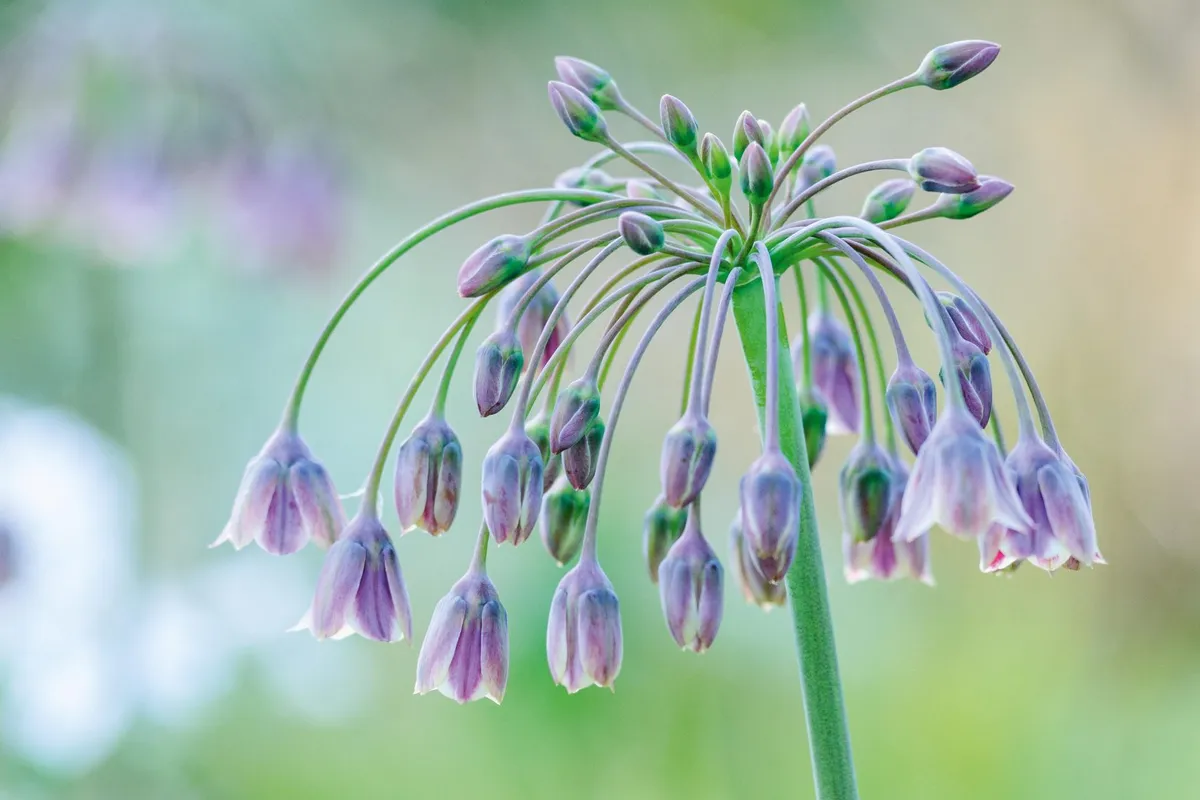
The most elegant and graceful of onions, this used to be called Allium siculum. Tall stems thrust up through twisted, glaucous leaves, each tipped with a narrow, pointed cluster of buds in a papery sheath. As the buds expand they bend over demurely like shy maidens hiding the purple-flushed inside of each flower under a subtle cream and grey-green skirt. Amazingly, as the seeds begin to ripen they turn up again to make a bouquet of pointed elf hats. In sandy soil it can self-seed excessively, but never seeds for me. Height 1-1.2m. Origin Mediterranean, from France to Turkey. Conditions Well-drained soil in sun or light shade. Hardiness RHS H5, USDA 6a-10b. Season May to July. DW
Gladiolus communis subsp. byzantinus

This plant produces unashamedly high-octane, magenta flowers, distinctly gladioli in shape, with centres streaked in subtle flashes of white and gold that decorate upright stems enfolded by thin, sword-like, pleated leaves. This cormous perennial struggles to increase in colder parts of the UK, but with heat it’s prolific – hence the naturalised colonies in Devon and Cornwall. Gladiolus italicus is vastly inferior but is often sold as byzantinus to unsuspecting customers. Electrifying next to lime-green euphorbias. AGM. Height 70cm. Origin Native of Spain, northwestern Africa, Sicily. Conditions Sunny position in a sheltered site. Any soil free of waterlogging. Hardiness RHS H5, USDA 5a-10b. Season May to July. FG
Eremurus ‘Joanna’

Eremuruses are summer dormant and often struggle through wet summers. The glorious Eremurus ‘Joanna’ is stronger than most and copes well in our maritime climate. The flower spikes are huge, each one composed of hundreds of star-shaped, white flowers with a yellow eye. ‘Joanna’ looks best when grown with taller perennials and shrubs. When planting, make a hole 10cm deep that is wide enough to accommodate the star-shaped crowns, add sharp grit and then cover, ensuring the bud of the crown is just nosing the surface. AGM. Height 3m. Origin Garden origin. Conditions Ideally, full sun and not too
wet in summer. Hardiness RHS H6, USDA 6a-9b. Season June. MR
Lychnis flos-jovis
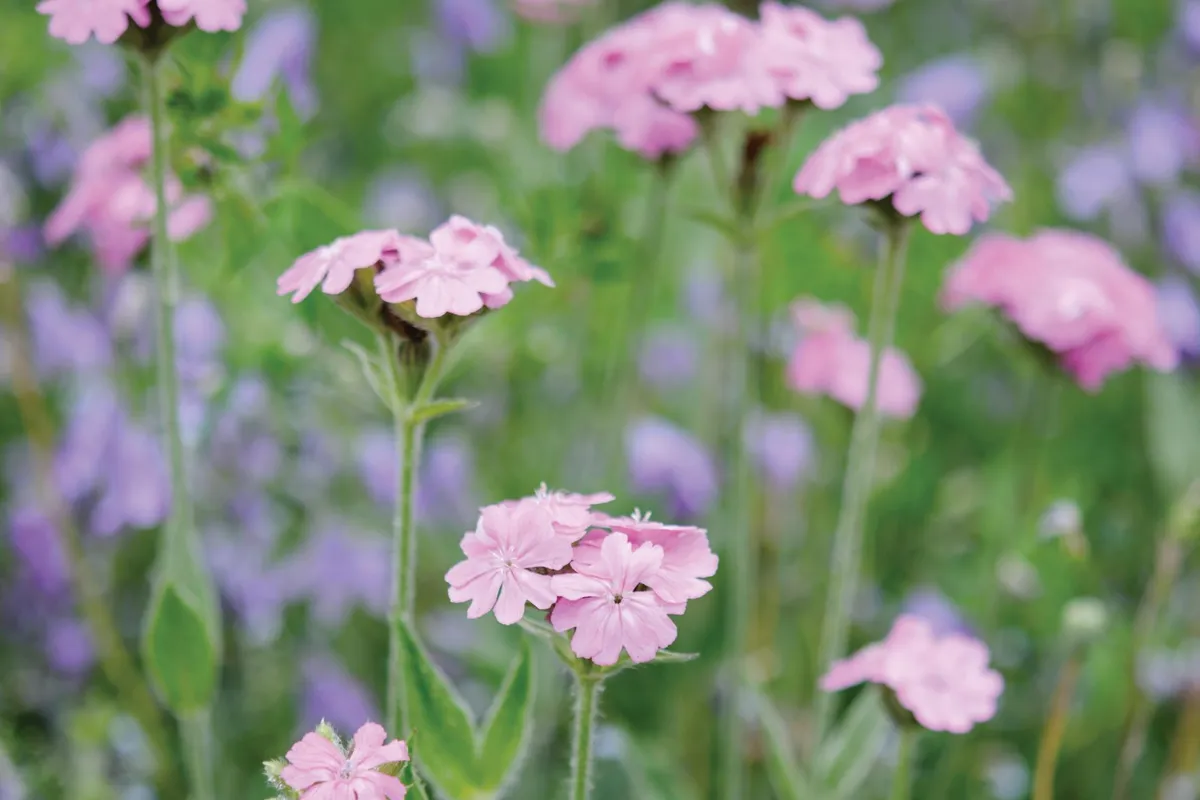
This pretty campion, commonly called the flower of Jove, is a more refined and more perennial version of the common Lychnis coronaria, and it should be
better known. The slender, branching stems are held above basal leaves covered in a silvery patina and carry clusters of lovely pink flowers. These work well with cool blues, such as the spikes of old-world salvias or Nigella damascena Moody Blues. Plant in good soil that does not sit wet. Flowers are produced in the second year from seed and can either be planted in drifts at 20cm apart, or scattered naturally through the border. AGM. Height 40-50cm. Origin Europe. Conditions Good garden soil. Hardiness RHS H6, USDA 4a-9b. Season June to July. MR
Sambucus nigra f. porphyrophylla ‘Thundercloud’
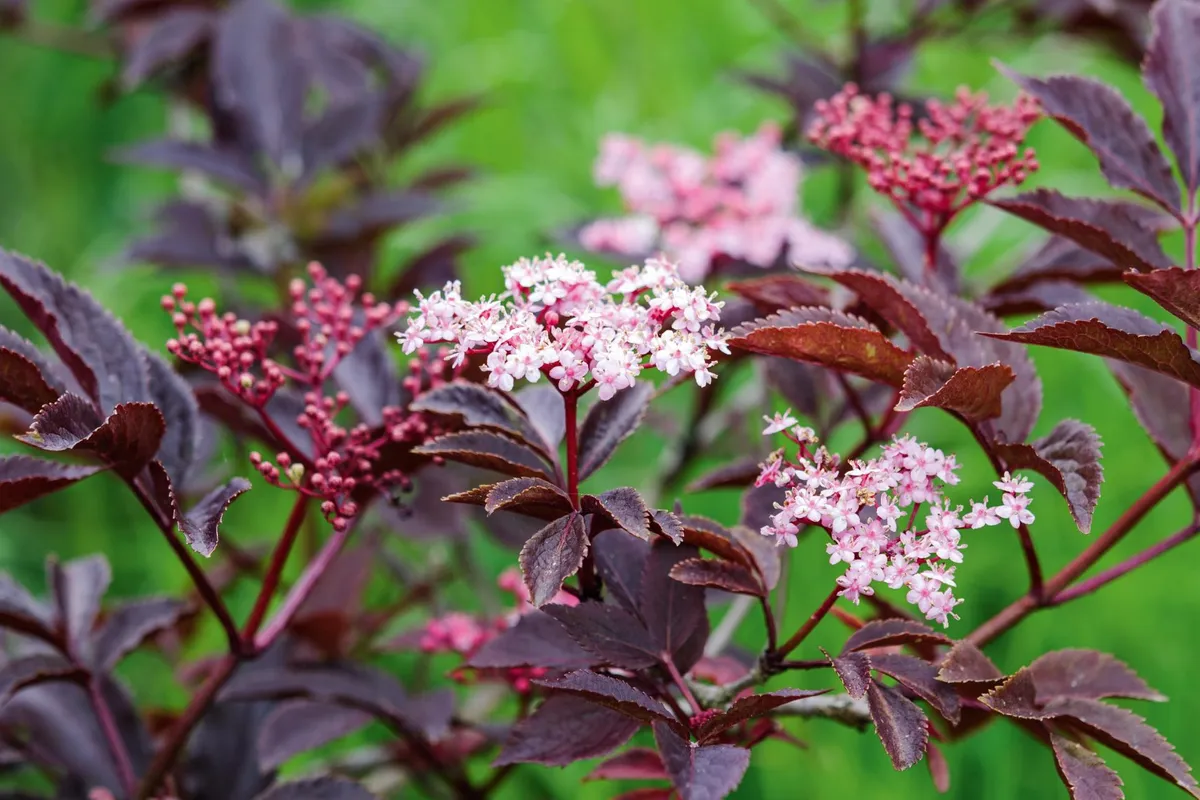
In early summer, sweetly fragrant, pale-pink flowers emerge from clusters of deep-red flower buds to the delight of insects and humans alike. This wonderful older cultivar was spotted by plantsman Christopher Sanders as a sport on a branch of the purple-leaved cultivar ‘Guincho Purple’ at the Dorothy Clive Garden in Staffordshire. With the owner’s permission, he successfully propagated some cuttings and it was released by Bridgemere Nurseries in 1997. AGM. Height 4m. Origin Sport of Sambucus nigra f. porphyrophylla ‘Guincho Purple’. Conditions Most soils including alkaline. Hardiness RHS H6, USDA 4a-7b. Season May to June. MC
Orlaya grandiflora
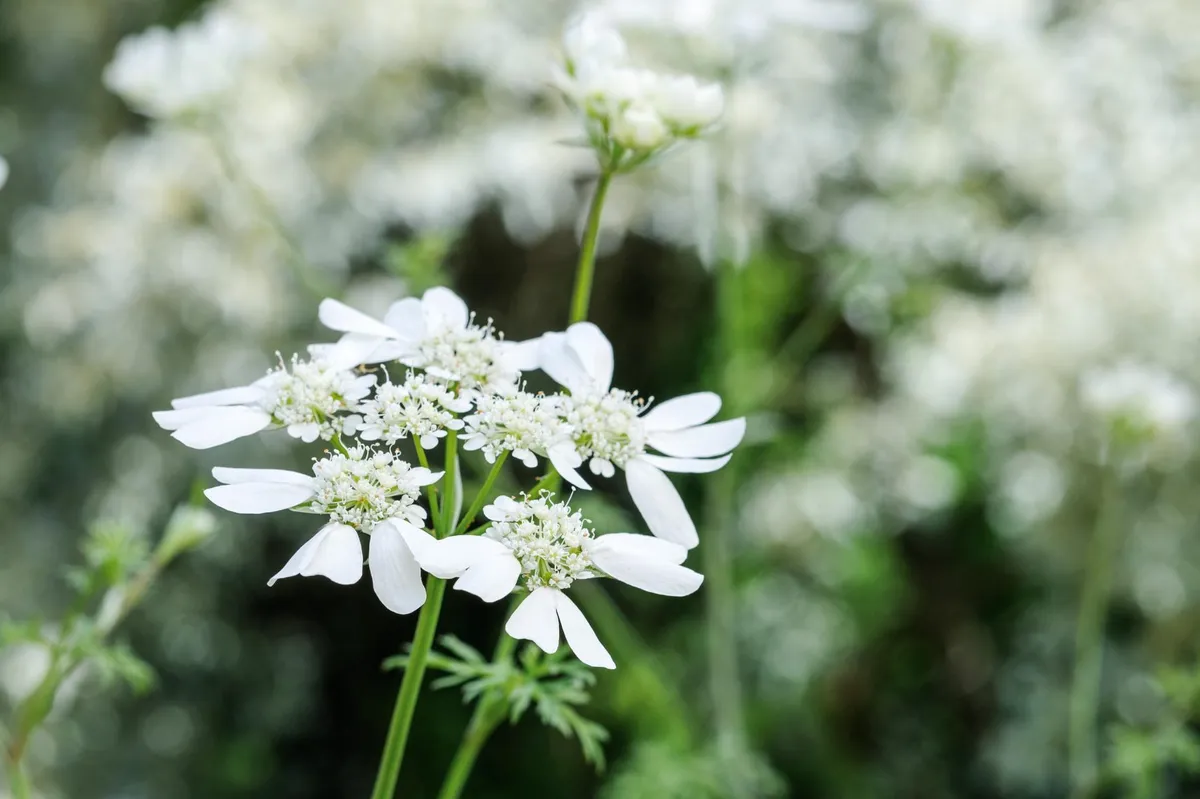
This pretty annual, a relative of cow parsley, is popular for naturalistic plantings. It has fine, filigree foliage and large, flat-headed umbels of white flowers with much enlarged outer petals. Most umbellifer seeds require sowing fresh in autumn and winter so they receive a freeze/thaw regime that breaks down the inhibitors to germination. Orlaya grandiflora germinates readily in autumn but can be erratic in spring. Occasionally, the foliage turns yellow and mature plants collapse for no apparent reason – usually the result of carrot fly. AGM. Height 30-45cm. Origin Mediterranean. Conditions Sharply drained, lean
soil in full sun. Hardiness RHS H4. Season June to July. MC
Penstemon digitalis ‘Joke’
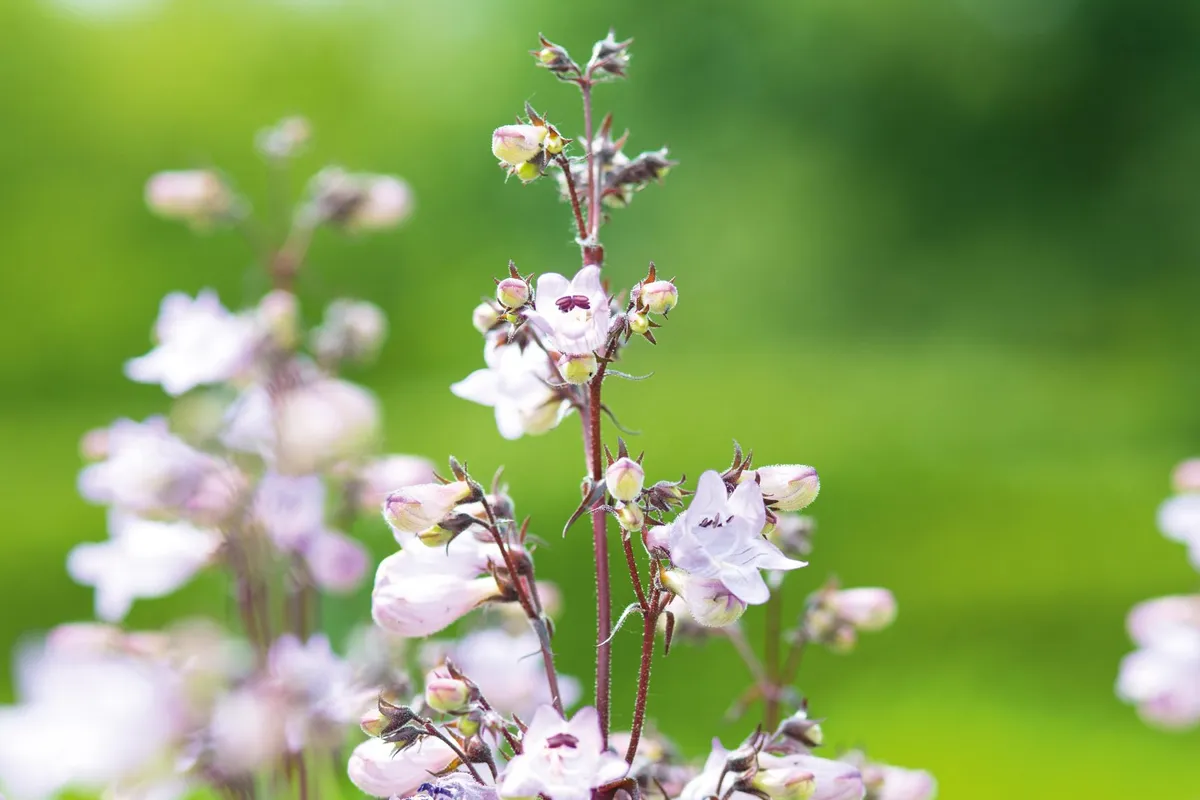
Don’t be fooled by the name; this is a plant that deserves to be taken seriously. In fact, Joke is a fairly common Dutch name and this cultivar was named by a former teacher of mine, Paul Wilmink, for his wife. He still grows flowers for cutting and selected this seedling, with its strong, blackish-red stems, for its sturdiness. It is the perfect cut flower, bearing large panicles of tubular, lilac-pink flowers. In winter purple-red-leafed rosettes appear alongside the old flower stalks, which bear pointed, brown-red seed capsules. Height 1m. Origin North America. Conditions Any well-drained soil in full sun. Hardiness RHS H7. Season June to July. HK
Here's our penstemon guide
Gillenia trifoliata
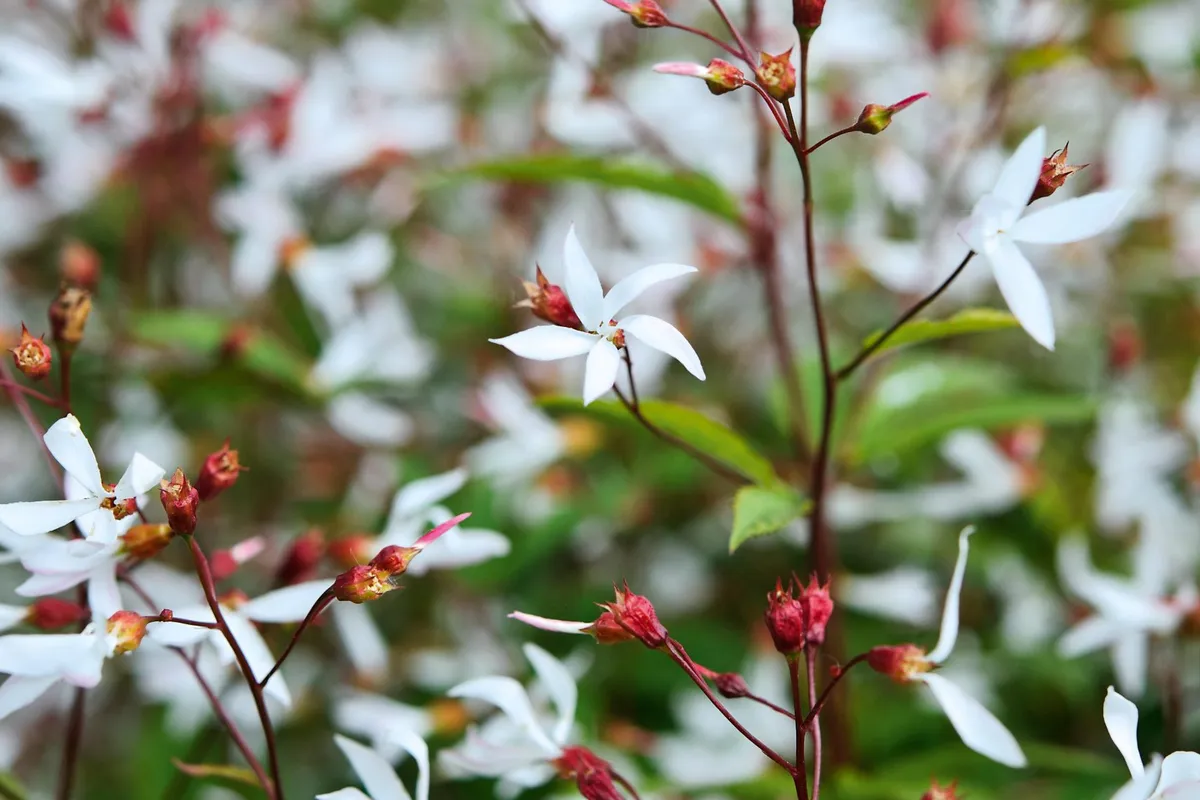
This plant has been one of my favourite hardy perennials since I started my first nursery more than 30 years ago. It is still one of my top ten plants as it exhibits great qualities throughout its growing season. Although a woodlander in its native country, I have found it performs best in full sun with a moisture-retentive soil. Pink shoots emerge in spring, its delicate white flowers are subtended by a showy red calyx, followed by beautiful seedheads, and the foliage turns crimson in autumn. What more could you ask for? AGM. Height 60-90cm. Origin Northeastern USA, Canada. Conditions Moisture-retentive soil; sun or dappled shade. Hardiness RHS H7, USDA 3a-8b. Season May to August. MC
Verbascum ‘Petra’

Mulleins have always been popular for their tall flower spikes, which provide useful vertical accents in the garden. Most are yellow with purple stamens or occasionally white. A few species, notably Verbascum phoeniceum, exhibit a colour range from white to purple. Hybridisation of Verbascum phoeniceum and various perennial yellow species has resulted in some wonderful colour breaks. Verbascum ‘Petra’ has unusual reddish-brown flowers and is one of several cultivars bred by Vic Johnstone and Claire Wilson, who formerly held the National Collection of Verbascum. Height 1.2m. Origin Garden hybrid. Conditions Well-drained soil; lightly dappled shade. Hardiness RHS H6, USDA 4a-8b. Season July. MC
Paeonia veitchii ‘Alba’
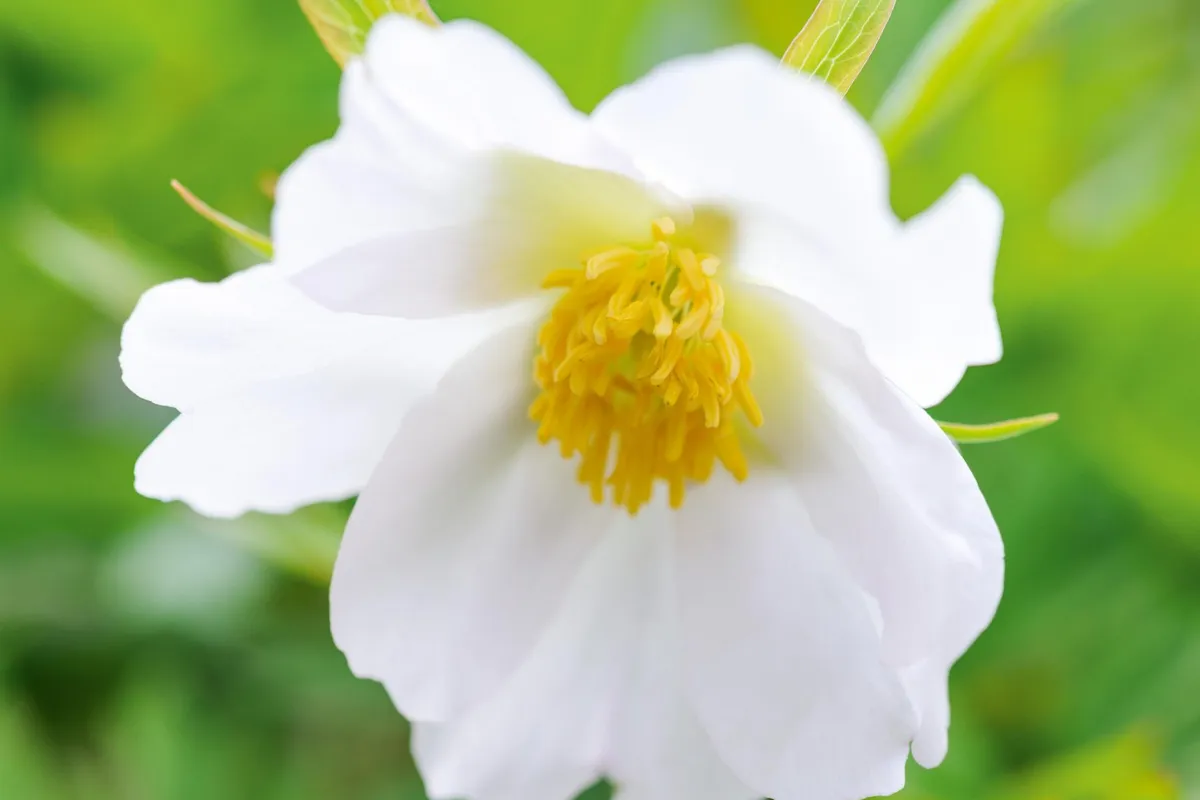
When I first became acquainted with this lovely peony, I was told that it was ‘as rare as hen’s teeth’ and this still appears to be the case. In late spring,
the deeply dissected foliage is a bronzy-green colour, maturing to deep green during the summer months. Tight green and pointed pendent buds appear at the end of flowering stems and as they develop, tightly rolled petals that are the palest-pink become evident. The slightly nodding flowers open to a pristine white with a central boss of yellow stamens emitting the most delicate, sweet fragrance. Height 60-75cm. Origin China. Conditions Moisture-retentive soil
in sun or dappled shade. Hardiness RHS H5, USDA 6a-8b. Season June to July. MC
Zizia aurea
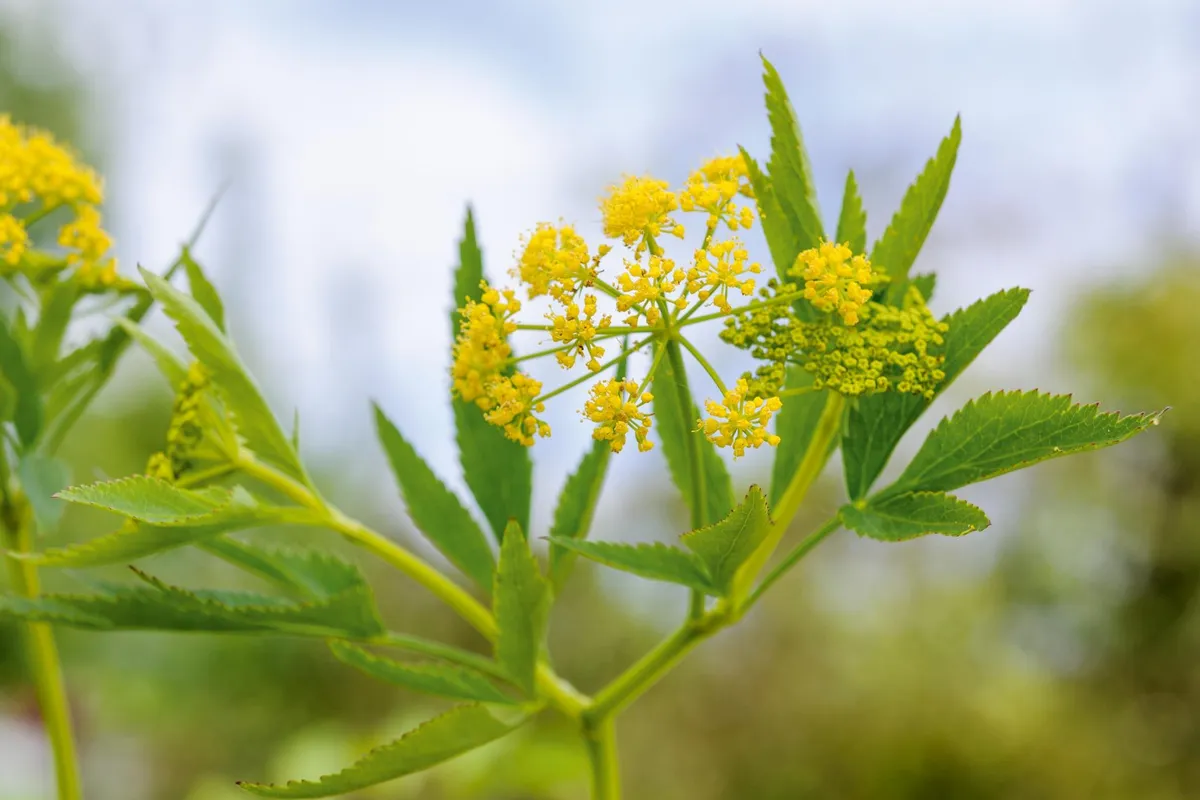
My interest in the umbellifer family (Apiaceae) tempted me to try some of the North American species and Zizia aurea is one I have grown for several years. It has attractively dissected foliage and forms a rounded mound before it sends up sprays of small, yellow flowers in late spring and early summer. It is found in meadows and damp woods in its native habitat and appears relatively tolerant of most garden soil as long as it isn’t too dry. Exhibited in recent show gardens at the Chelsea Flower Show, it is deservedly gaining more attention. Height 60-90cm. Origin Across North America, apart from in the southeast. Conditions Moisture-retentive soil in sun or dappled shade. Hardiness RHS H7, USDA 4a-9b. Season May to June. MC
Agastache ‘Painted Lady’
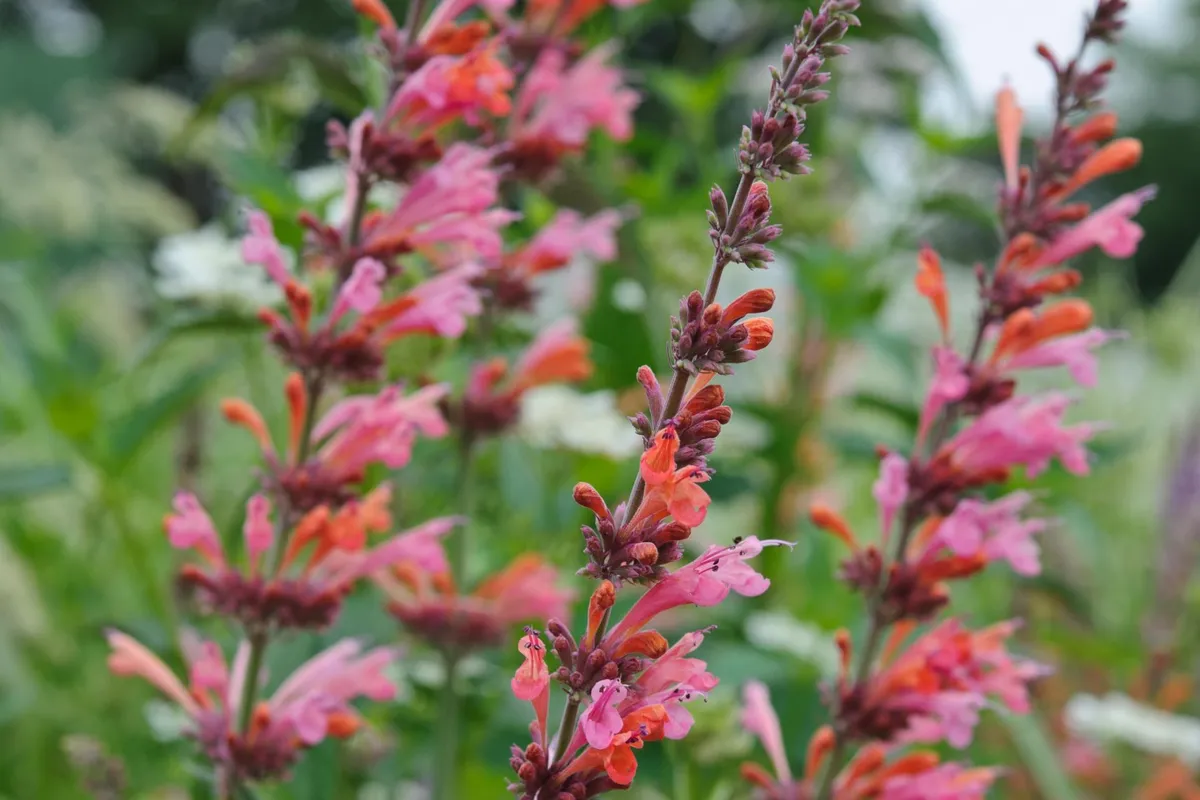
Had I been offered a plant described as ‘a marriage of vivid pink and orange flowers’, I might have declined. In this case, I’m glad I accepted, as the colour combination is glorious, proving that colour harmony is a matter of proportion. The peppermint-scented flower spikes are upbeat but not gaudy. They make a fine display all summer, and tone with pink or orange spectrums. A good choice for a pot where they will thrive in full sun and need little watering or deadheading. Height 70cm. Origin A selection of Agastache mexicana from hot, dry climates of southern North America. Conditions Free-draining, warm soils. Protect from winter wet. Hardiness USDA 6a-9b. Season Early June to September. CM
Asplenium scolopendrium ‘Crispum Bolton’s Nobile’

The hart’s tongue fern, with its dark, evergreen, deeply frilled fronds, is one of the most distinctive native ferns and very easy to distinguish from other ferns. I prefer its old name of Phyllitis scolopendrium, which is how I discovered this beautiful plant more than 30 years ago in Reginald Kaye’s nursery in Lancashire. I bought a splendid specimen there in 1981 and it is still growing in my garden. Height 60cm. Origin Europe, North America, Asia. Conditions Typically likes an alkaline soil, but will tolerate an acidic soil in shade or sun. Hardiness RHS H7, USDA 5a-9b. Season All year round. HK
Monarda bradburiana
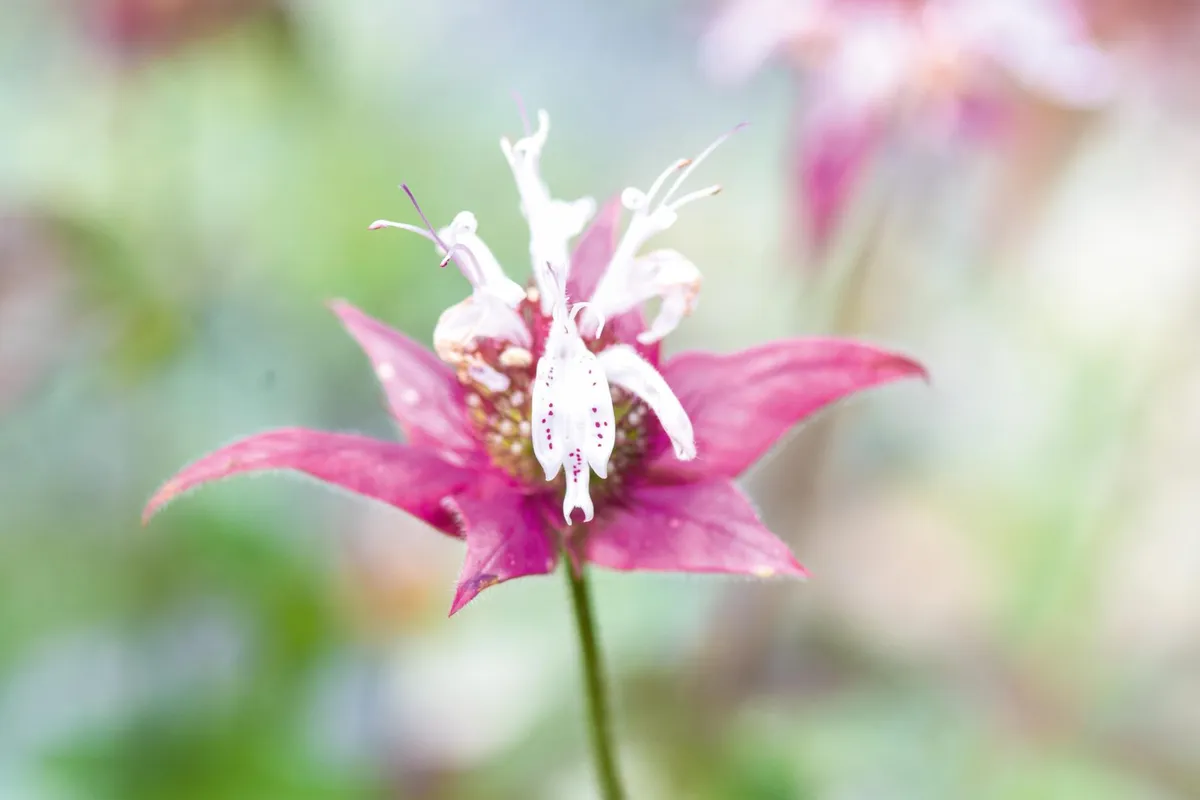
In spring this fantastic plant has thick, purplish-pink leaves, with dark-purple veins. In May the buds appear and in early June the first light-pink flowers open. The flowers are large for such a short plant and sit within dark purplish bracts. We would like to breed some other colours, but all our 500 seedlings retained the same light-pink colour, which in fact is the best companion to its purple bracts. This plant will not suffer from mildew, and in autumn when the purplish leaves darken it is especially attractive. Flowers are attractive to bees and butterflies. Height 60cm. Origin Southeastern USA. Conditions Sun; can stand more drought than normal Monarda hybrids. Hardiness RHS H7, USDA 4a-8b. Season May to July. HK
Thalictrum species
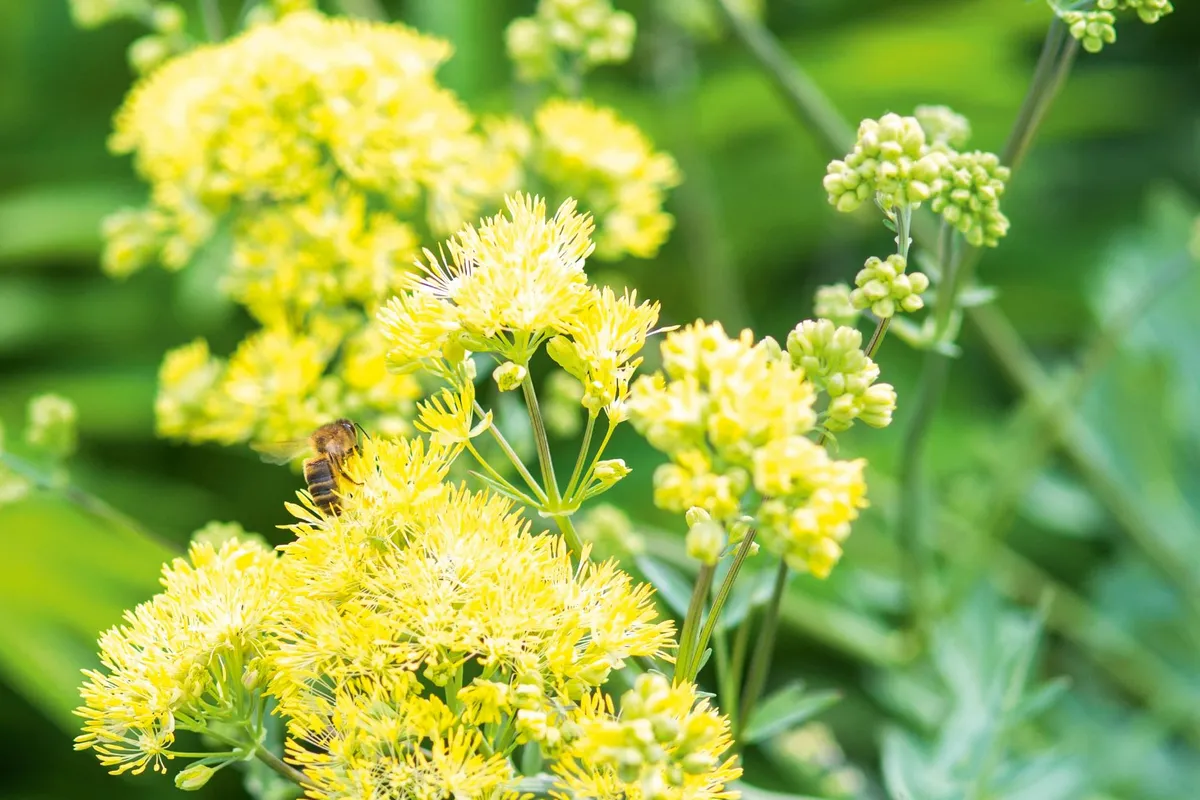
This must be our best yellow-flowered meadow rue. For years we’ve grown Thalictrum flavum subsp. glaucum, but this plant, sometimes sold as the invalid species sphaerostachyum, is superlative. The foliage is much bluer, with strong, upright, flowering stems. The umbels are made up of small, light-yellow flowers without petals, which give an almost creamy effect. Bees are attracted to it because of the multitude of stamens producing golden pollen. Except in really windy areas, it needs no staking, and it combines very well with the blue baptisia. Height 1.5m. Origin Unknown. Conditions Full sun to part shade in a fertile soil that is not too dry. Hardiness RHS H7. Season June to August. HK
Here's how to grow thalictrum
Echinacea pallida

Great swathes of echinaceas are familiar subjects for naturalistic-style gardens and are a magnet for bees and other pollinating insects. The one most often seen is Echinacea purpurea, with stiff, almost horizontal, rosy-purple, pink or white rays and a conspicuous brown or green central cone. Altogether more understated, and to my eye more elegant, is Echinacea pallida, which has slender, reflexed petals that are usually pale pink, deepening in colour towards the prominent brownish cone. The flowering stems tend to be strong and wiry with the blooms bobbing about in the breeze. Height 1.2m. Origin Eastern USA. Conditions Well-drained soil in sun. Hardiness RHS H7, USDA 4a-10b. Season Summer. MC
Persicaria x fennica
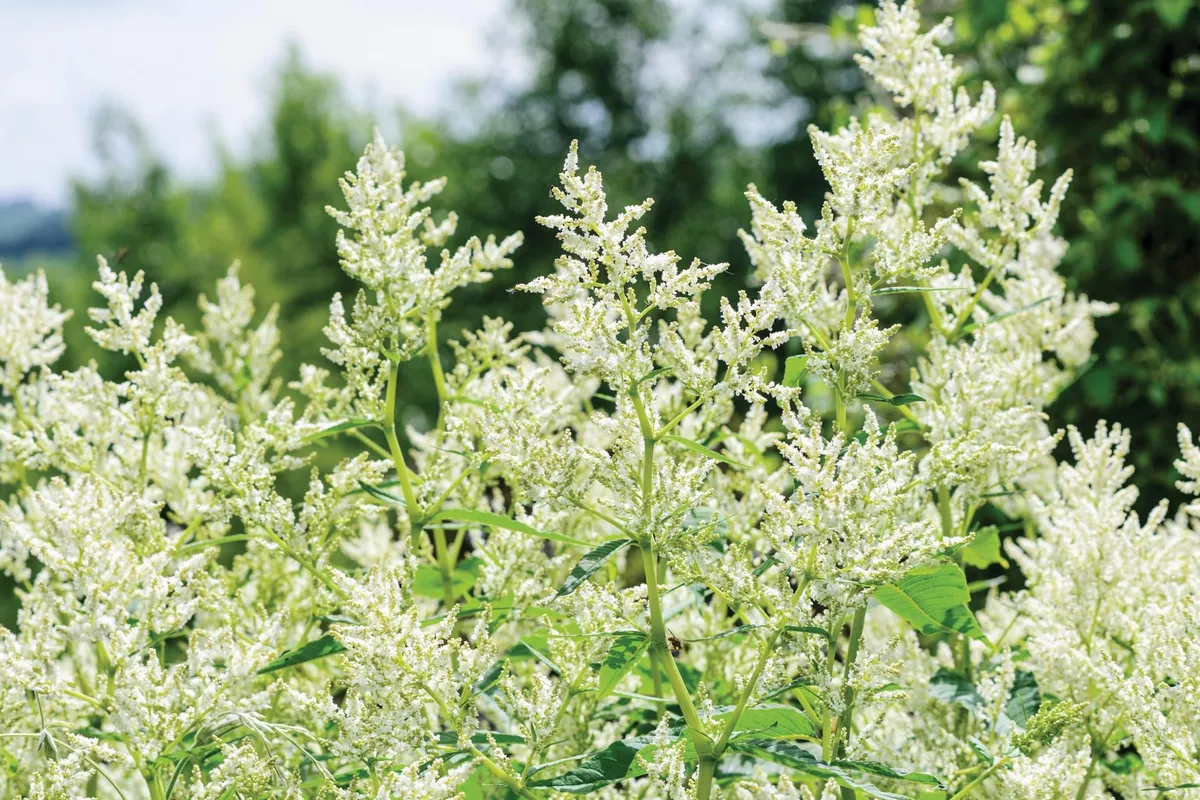
The giant, white-fleece flower, known by many as Persicaria polymorpha, looks like a huge, creamy-white cloud of froth that has just settled on the garden. In bloom from June to October, the fluffy plumes of flower slowly change from white to beige and then eventually to pink. The sturdy, bamboo-like stems gradually bow outwards under the weight of flowers until the plant reaches about 2.5m across. It looks frighteningly vigorous, and takes up a lot of room in the garden, but it is not invasive, increasing in size only slowly. Height 2m. Origin Hybrid origin with Persicaria alpina. Conditions Sun or part shade; any reasonable soil. Hardiness USDA 4a-9b. Season June to October. DW
Looking for more on persicaria?
Nepeta kubanica

Nepeta cataria is an addictive drug for cats. Nepeta kubanica, on the other hand, does not interest cats, but is addictive for me. It is a giant nepeta, standing 1.2m tall, with substantial, solid-looking, 45cm-flower spikes carried on dark stems. Blue flowers emerge from the darkest of blue buds and almost black calyxes in tight whorls. A show-stopping plant when in full flower. The leaves have the usual good minty nepeta smell, and the substantial seedheads stand well into winter. De Hessenhof, my favourite Dutch nursery, gave me this plant a few years ago and it is magnificent. Height 1.2m. Origin Central Europe, Caucasus. Conditions Sun and good drainage. Hardiness RHS H7, USDA 4a-8b. Season June to September. DW
Lathyrus odoratus ‘Matucana’
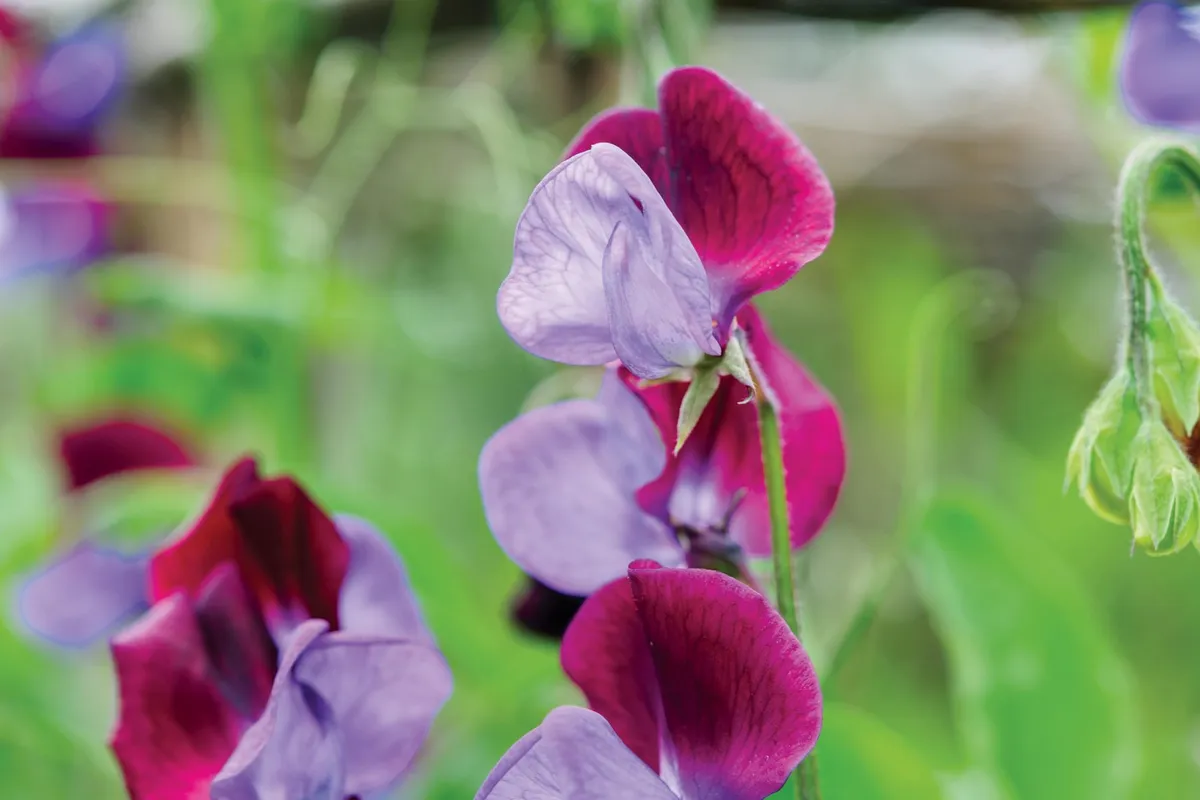
This is the sweetest smelling of all the sweet peas. Lathyrus odoratus ‘Matucana’ closely resembles the original sweet pea introduced by Francesco Cupani in 1699, but it has four rather than two flowers per stem and they are slightly bigger. Both have deep-magenta upper petals and purple-blue lower petals. A hardy annual, it is best sown in October and kept under cover without heat until March. It can be sown in February or March but will never get as big or produce as many flowers. In a good year I need a step ladder to pick the flowers from plants sown in autumn. AGM. Height 2m. Origin Sicily. Conditions Full sun, not too dry. Hardiness RHS H3, USDA 2a-11. Season June to September. DW
Here's how to grow sweet peas
Allium carinatum subsp. pulchellum

Ornamental alliums usually conjure up the big, bold and brazen purple, rose or white drumstick-types, which are so prominent in gardens in late May and early June. Allium carinatum subsp. pulchellum is more subtle, however, flowering later in the year but still attracting bees and other pollinators with copious nectar. The flowerheads start off upright and as they open the individual flowers hang down until they look like a brilliant firework. Once pollinated, they return to the vertical and produce lots of black seeds. AGM. Height 30-40cm. Origin Central and southern Europe, Russia and Turkey. Conditions Well-drained soil in sun. Hardiness RHS H5, USDA 3a-9b. Season July and August. MC
Rosa ‘Florence Mary Morse’
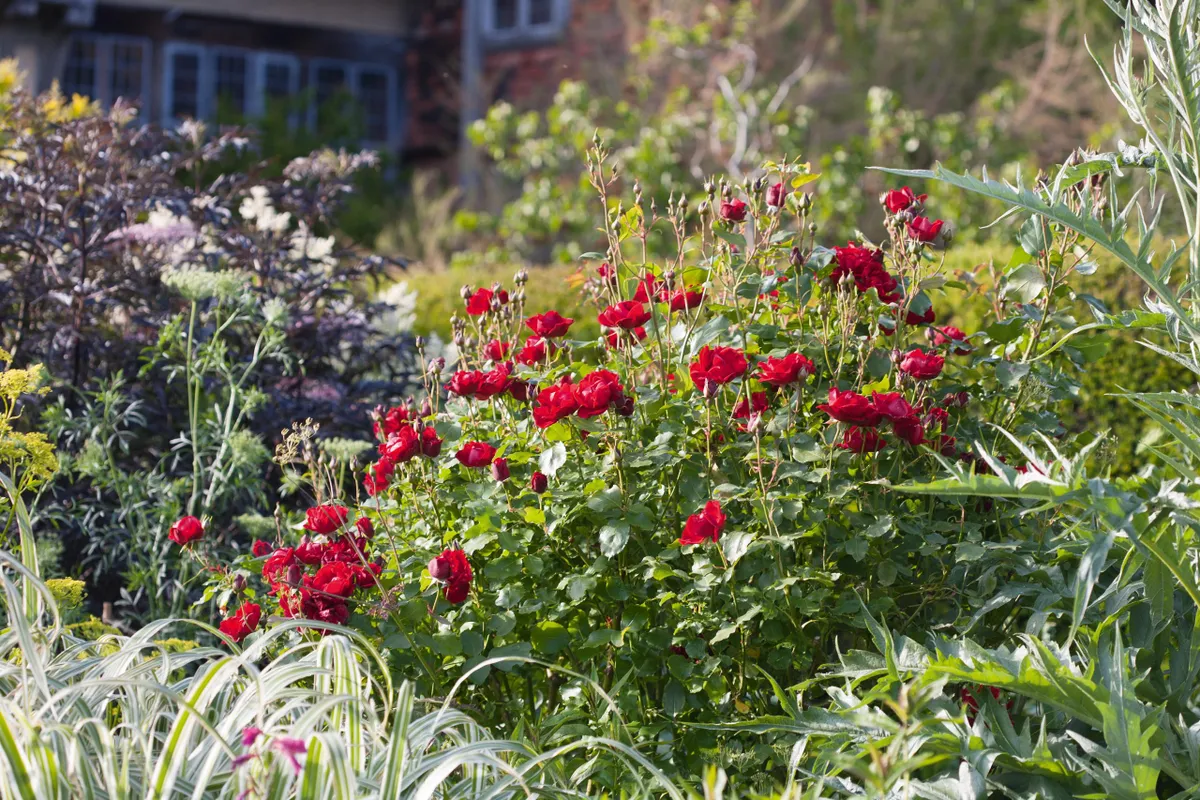
This rose was bred in 1951 by Reimer Kordes, a German breeder who was also responsible for ‘Iceberg’, one of the most successful roses of all time. This one has raggedy, somewhat messy, open-centred, semi-double flowers, and lacks the heavenly scent expected of old roses. Nevertheless, it more than makes up for its flaws with abundant clusters of rich pillarbox-red flowers produced repeatedly over the summer and autumn. Slightly stiff in habit, it mixes well with other ingredients and in Great Dixter’s famous Long Border, it is the only permanent plant to be repeated four times – a true testament to its qualities. Height 2m. Origins W Kordes & Sons. A cross between ‘Chateau’ and ‘Magnifica’. Conditions Best in full sun in good soil. Hardiness USDA 4b-10b. Season June to November. FG
Lysimachia atropurpurea
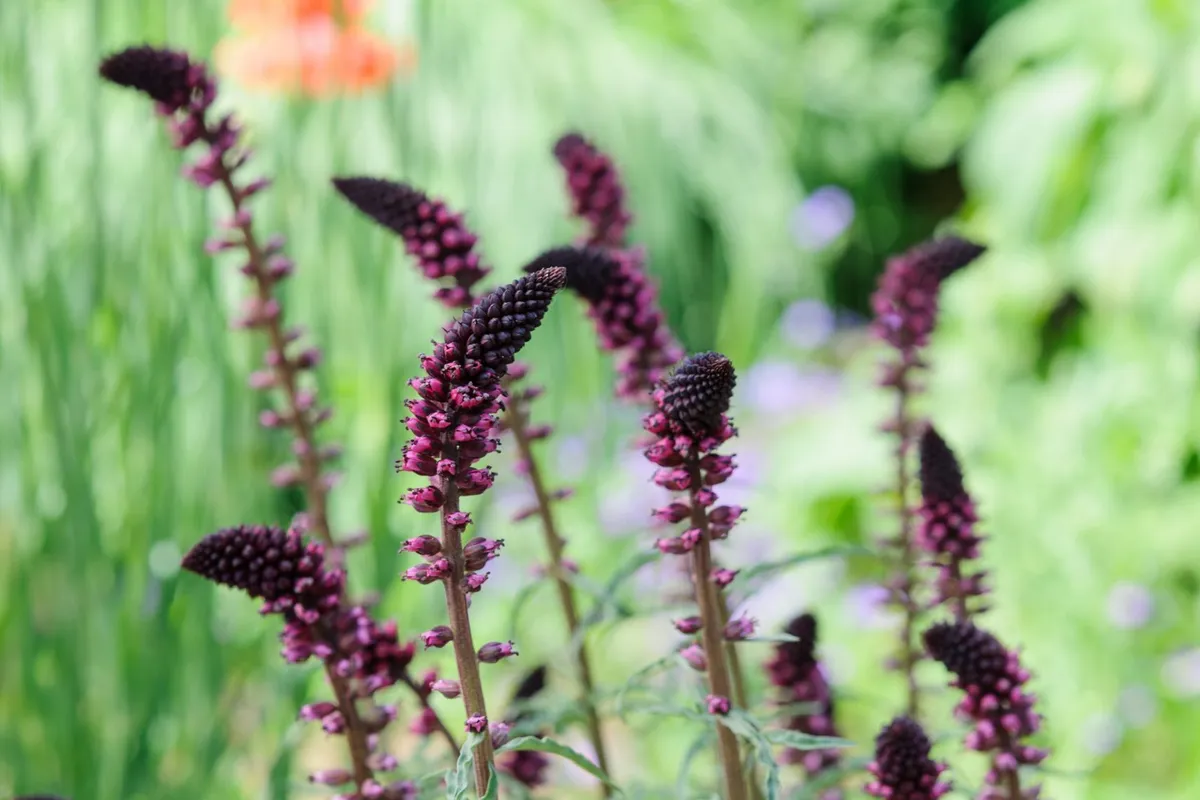
Pewter-coloured leaves and serpentine stems support the small, deep-purple flowers. As they age, the stems twist and turn, forming slight, grotesque parodies of ladies admiring themselves in a mirror. It is said to be perennial, but I have always found it to be biennial, never surviving its first real flowering. As I like the silvery rosette of leaves in the first year, however, and love the self-congratulatory arching flowering stems in the second, I am willing to sow it every year. Oddly, for a biennial, it never self-seeds. How on earth does it expect to survive? Height 50-60cm. Origin Balkans, Turkey. Conditions Soil that’s not too dry in sun. Hardiness USDA 4a-9b. Season June to August. DW
Libertia chilensis
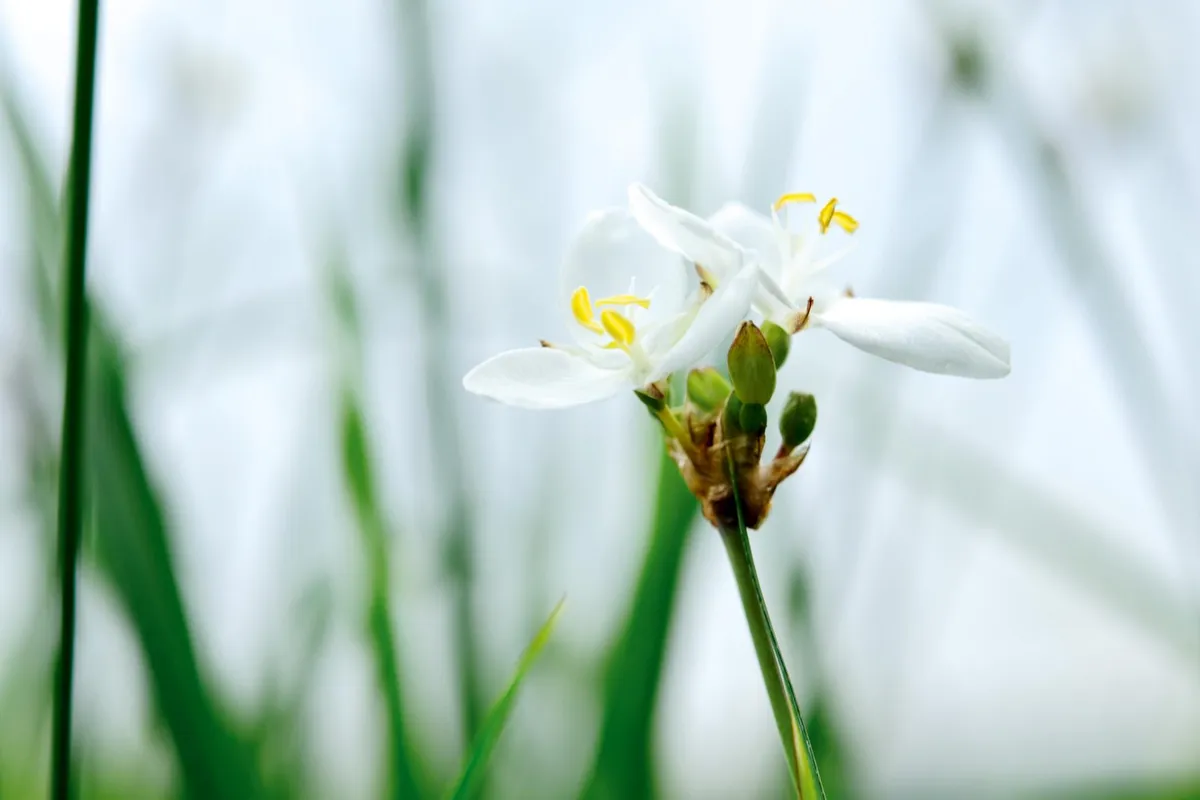
This plant is reliable and undemanding, while making a generous contribution to formal and informal assemblies. Even before the flowers appear, the slender sword-like foliage, arranged in fans, adds vertical definition to a scheme, provided you keep slugs and snails from decimating it. Arching flower stems bow down under the weight of startling white terminal flower clusters and give a lightened elegance to woodland scenes. Later, golden-brown seedpods provide additional layers of interest. AGM. Height 85cm. Origin From stream banks and open woodlands in Chile and Argentina. Conditions Humus-rich, fertile soil. Hardiness RHS H3, USDA 8a-11. Season Flowers during May and June, with seedheads and foliage extending the interest much longer. CM
Iris graminea
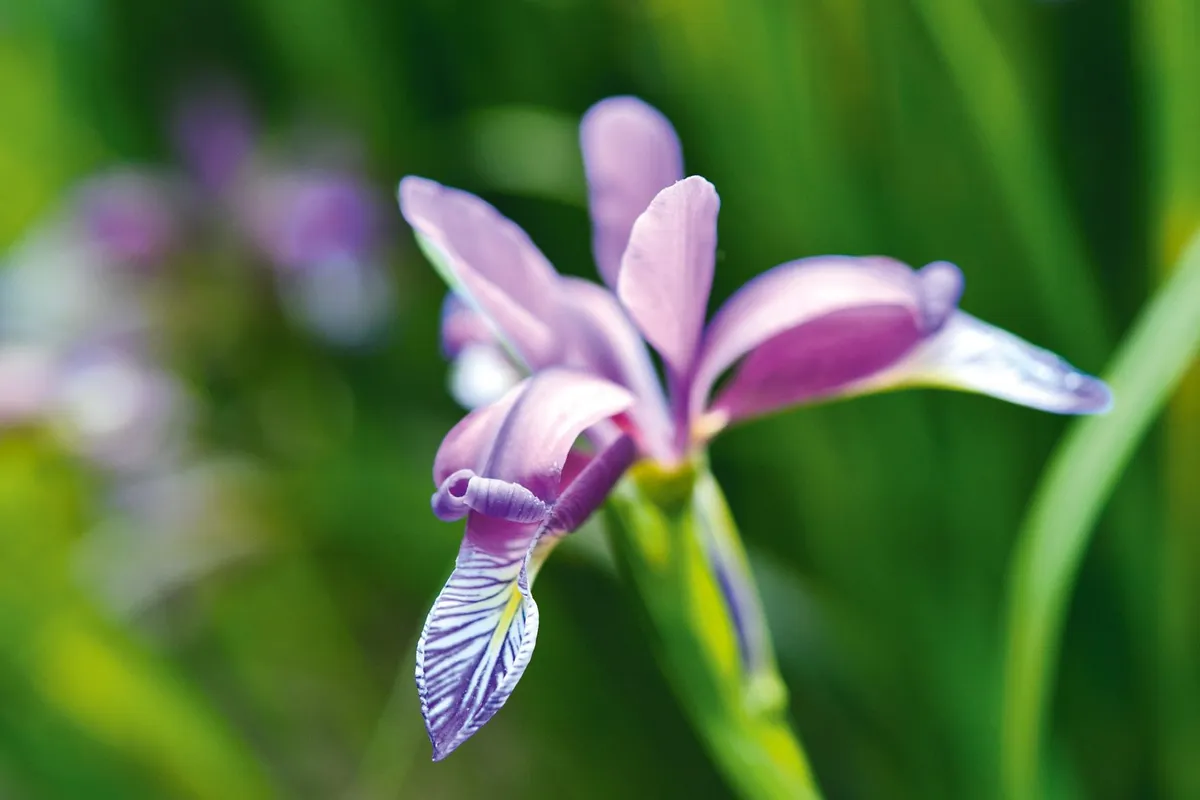
This plant has earned itself the common epithet the plum tart iris since the flowers exude a curious sweet smell that is redolent of poached plums. The scent really conjures up a summer kitchen. This is a small and charming iris with slender flowers whose colouring is a rich vignette of purples and mauve, enhanced by a characteristic metallic sheen. The flowers have three large, spreading, pendent fall petals, which are white and strongly veined with violet. AGM. Height 25cm. Origin Native to grassy places and open woods from Spain to Caucasus. Conditions Moisture-retentive soil, preferring dappled shade in order to flower and to thrive. Hardiness RHS H6, USDA 3b-9a. Season Flowers May to June. CM
Potentilla ‘Volcan’
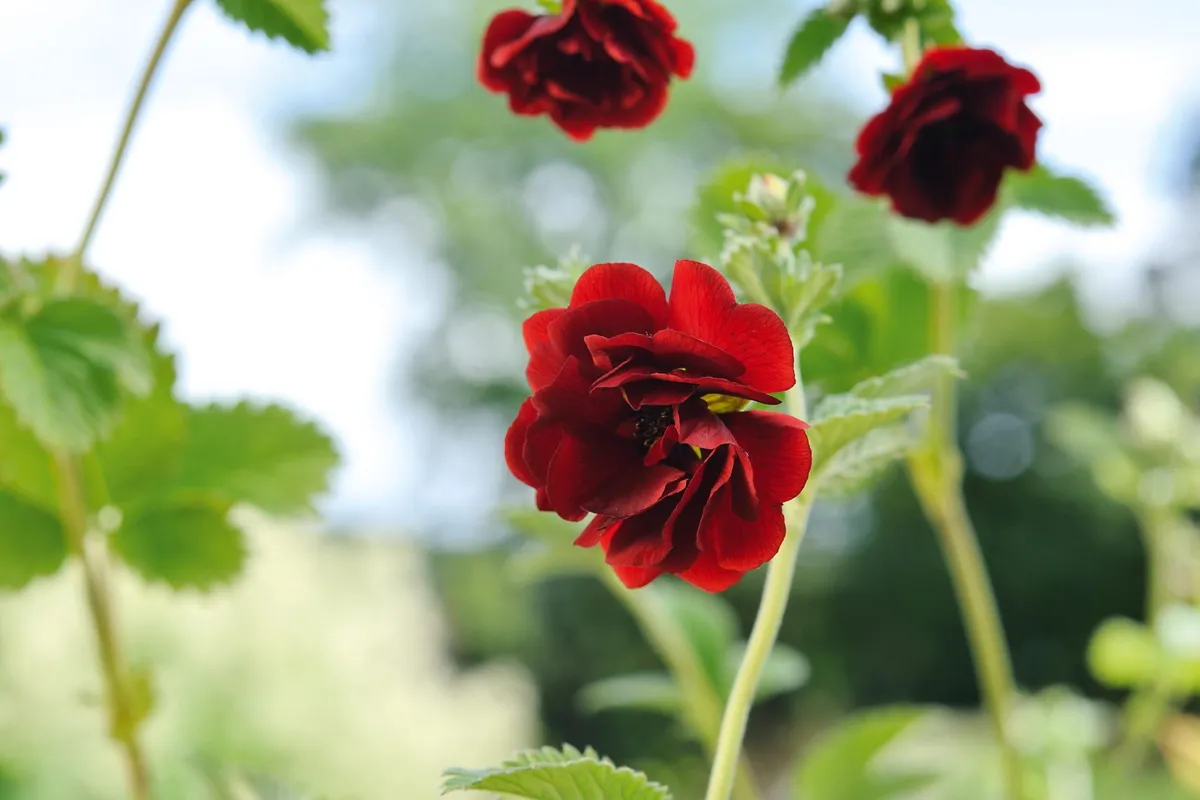
This deep, blood red has to be one of my favourite ways of giving a dash of excitement to a sober composition. With their velvety texture and rich, deep hue, the flowers of Potentilla ‘Volcan’ will scramble through branches of adjacent plants in their quest for light. It is particularly good with Salvia verticillata ‘Purple Rain’ and Nepeta racemosa ‘Blue Wonder’ to give a rich Persian carpet effect. The display lasts longer than many of the other herbaceous potentilla and this plant requires little attention. Height 45cm. Origin A hybrid of Potentilla atrosanguinea from high-altitude scrub between Sikkim and Afghanistan. Conditions Most free-draining garden loams in a sunny position. Hardiness USDA 5a-9b. Season June to July. CM
Rudbeckia hirta ‘Prairie Sun’
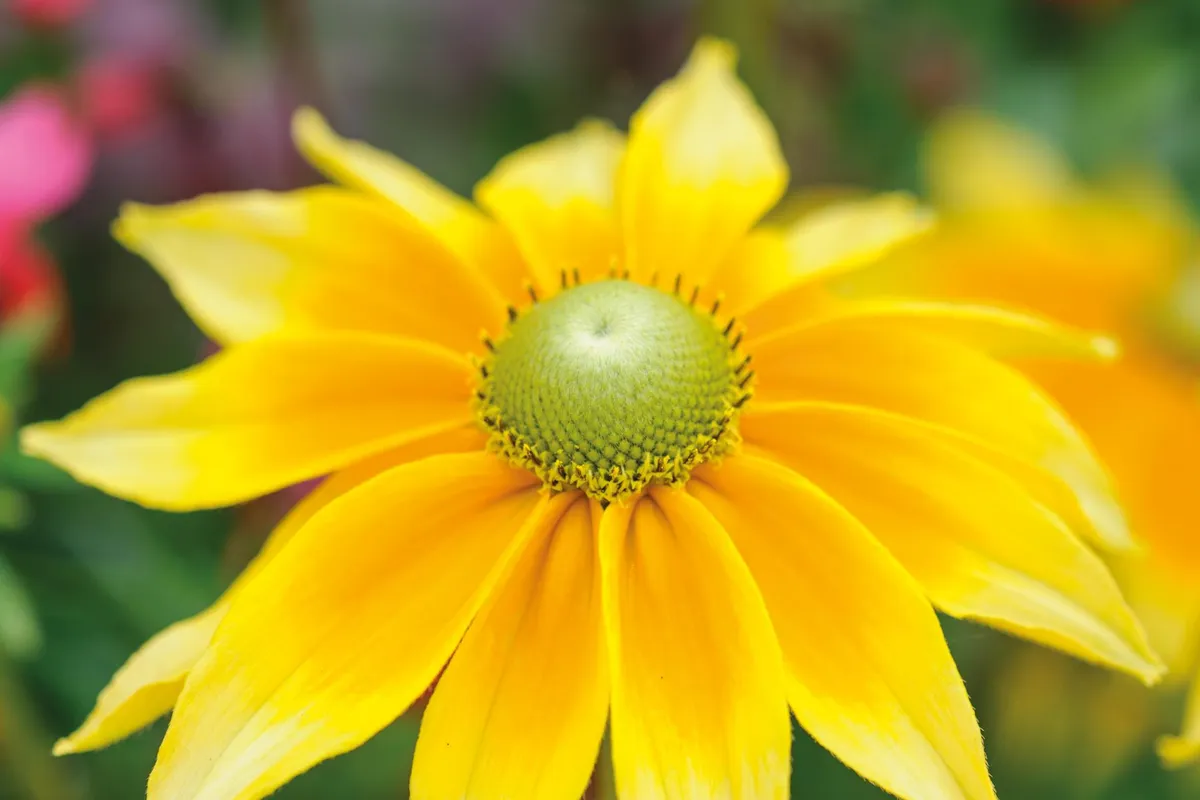
This rudbeckia has huge, sumptuous, yellow flowers, each with a striking green central cone. It can be grown as either an annual or a biennial, and will bloom all summer, continuing to produce a succession of flowers well into autumn. If sown early in the year, it will flower from August, but I prefer to sow seed in July, over-winter the plants in a frame, and grow them on through the spring. I then have fat plants to put out in June, which will flower from July onwards. Grow alongside reds, perhaps Salvia coccinea, or white anemones, depending on your taste. Height 80cm. Origin Garden origin, from North America. Conditions Rich soil in full sun. Hardiness RHS H3, USDA 3a-8b. Season July to September. MR
Read our guide to growing rudbeckia.
Crocosmia ‘Hellfire’
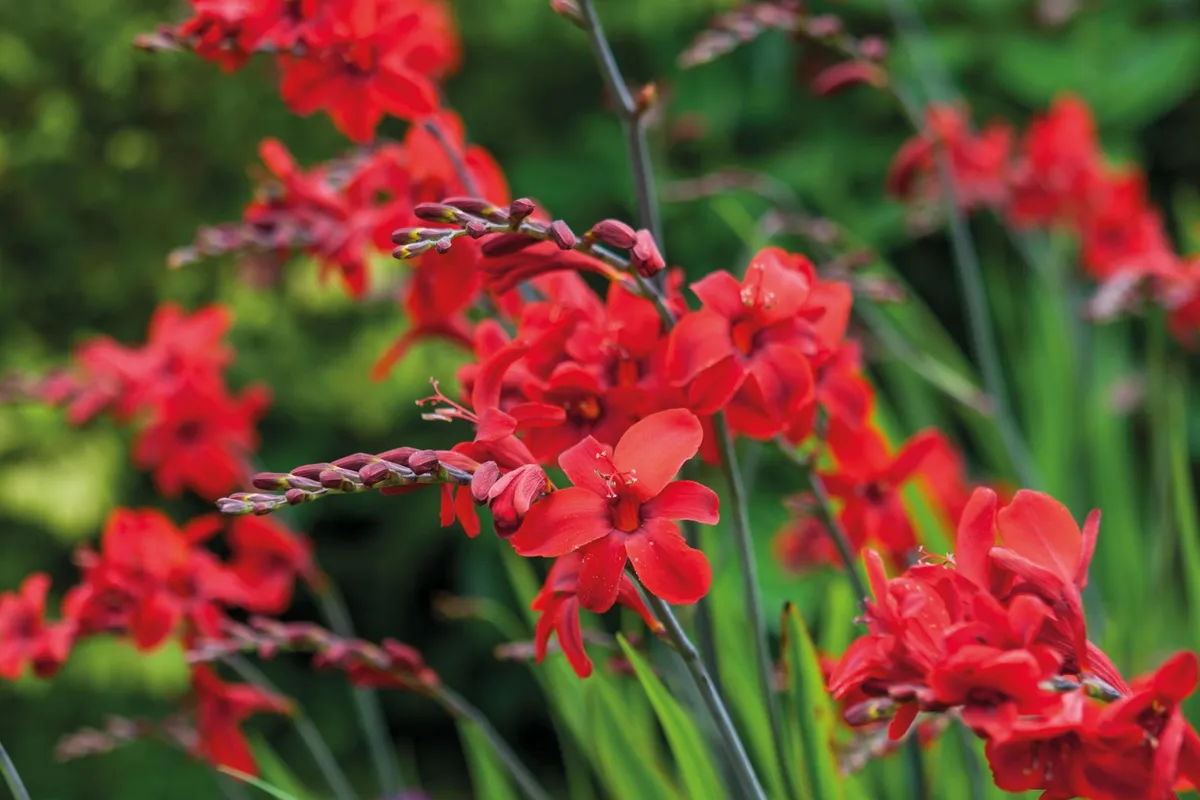
The renowned Crocosmia ‘Lucifer’ used to be my default red crocosmia for the garden, but it has now been usurped by the brilliant ‘Hellfire’. The flowers of ‘Hellfire’ are a dusky, deep red and larger than those of ‘Lucifer’, which look orange in comparison. The blooms are held on dark stems and seem to peer out from above the masses of vivid-green, sword-shaped leaves. Plant in good, moist soil at the front of the border as the foliage provides good contrast against lower-growing plants and remains clean until autumn. Divide the corms every four years to maintain vigour. AGM. Height 1.2m. Origin Garden origin, from South Africa. Conditions Moist, open garden soil in sun to partial shade. Hardiness RHS H5, USDA 5a-10b. Season June to August. MR
Here's more on how to grow crocosmia
Silphium mohrii
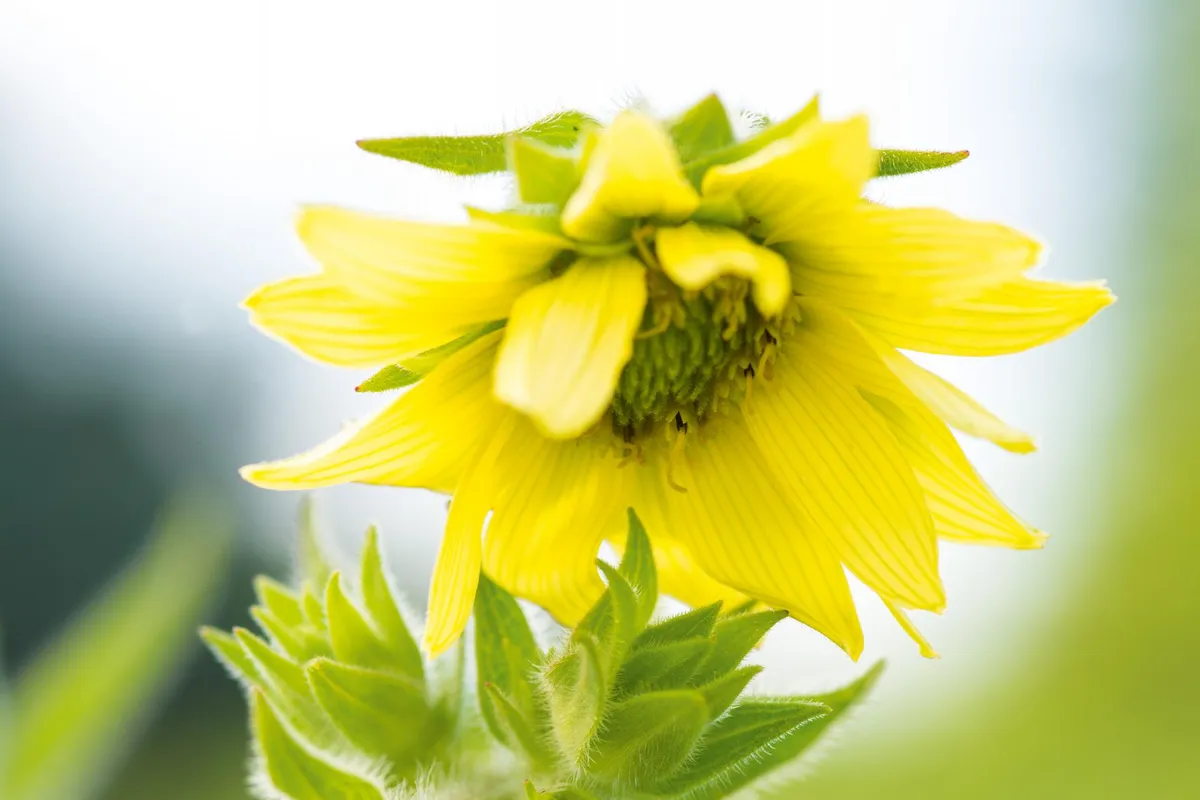
With so many yellow composites flowering in summer and autumn, do we need another one? In this case yes, because this is a real discovery – I find it incomprehensible that this noble plant was not discovered for our gardens earlier. The big, bristly, lance-shaped foliage, although handsome, doesn’t give away the beauty of the plant, but as soon as the first large, disc flowers open, everybody starts to ask about it. The flowers are up to 8cm across in a beautiful lemon-yellow colour. The show goes on until the first frost. It is also the smallest silphium we grow here in the nursery. Height 1.3m. Origin Southeast USA. Conditions Best in poor soil in sun. Hardiness RHS H7. Season August to September. HK
Delphinium elatum

The flowers of Delphinium elatum are small and very widely spaced, not what we expect of a good delphinium. But, after planting it along a well-used path at the nursery, everybody wanted it as soon as the first flowers appeared. Healthy, deeply fingered leaves follow very tall stems that don’t need staking. These carry very long spikes of sky-blue flowers and, although they are small, the whole makes for an impressive show. We have grown this plant for more than ten years in the same place; it has lived longer than any other delphinium hybrid on our sandy soil. Height 2m. Origin Europe, Asia. Conditions Full sun in fertile soil. Hardiness RHS H7, USDA 3a-8b. Season June. HK
Veronicastrum virginicum ‘Lavendelturm’

Veronicastrums have erect stems with leaves in whorls along their length. They provide a strong, perpendicular accent that lasts well into the autumn, long after the flowers have gone. Veronicastrum virginicum ‘Lavendelturm’ has branched spikelets of lavender flowers and is adored by bees and butterflies alike. It flowers in midsummer and is a great vertical element in naturalistic planting schemes, mixing particularly well with grasses. They do not suffer from powdery mildew and seldom need staking. Height 1.5-1.8m. Origin Eastern USA and southern Canada. Conditions Moisture-retentive soil in sun or dappled shade. Hardiness RHS H7, USDA 3a-9b. Season July to August. Don't miss our plant profile on veronicastrums. MC
Agapanthus ‘Rotterdam’

There is a whole range of agapanthus cultivars with city names, all grown by amateur breeder Kees van Duivenvoorde. It is really difficult to choose between them, because they are all good. It seems that most customers prefer the really dark colours, but I like ‘Rotterdam’. This cultivar has almost luminous light-blue flowers with a darker midvein, arranged in large, spherical heads. These work really well in the garden because you can see them from a great distance. Whether you plant them in a pot or grow them in the open ground, this is a totally reliable flowering agapanthus. Height 80cm. Origin South Africa. Conditions Fertile soil in full sun. Hardiness RHS H6. Season July to August. HK
Papaver somniferum ‘Lauren’s Grape’
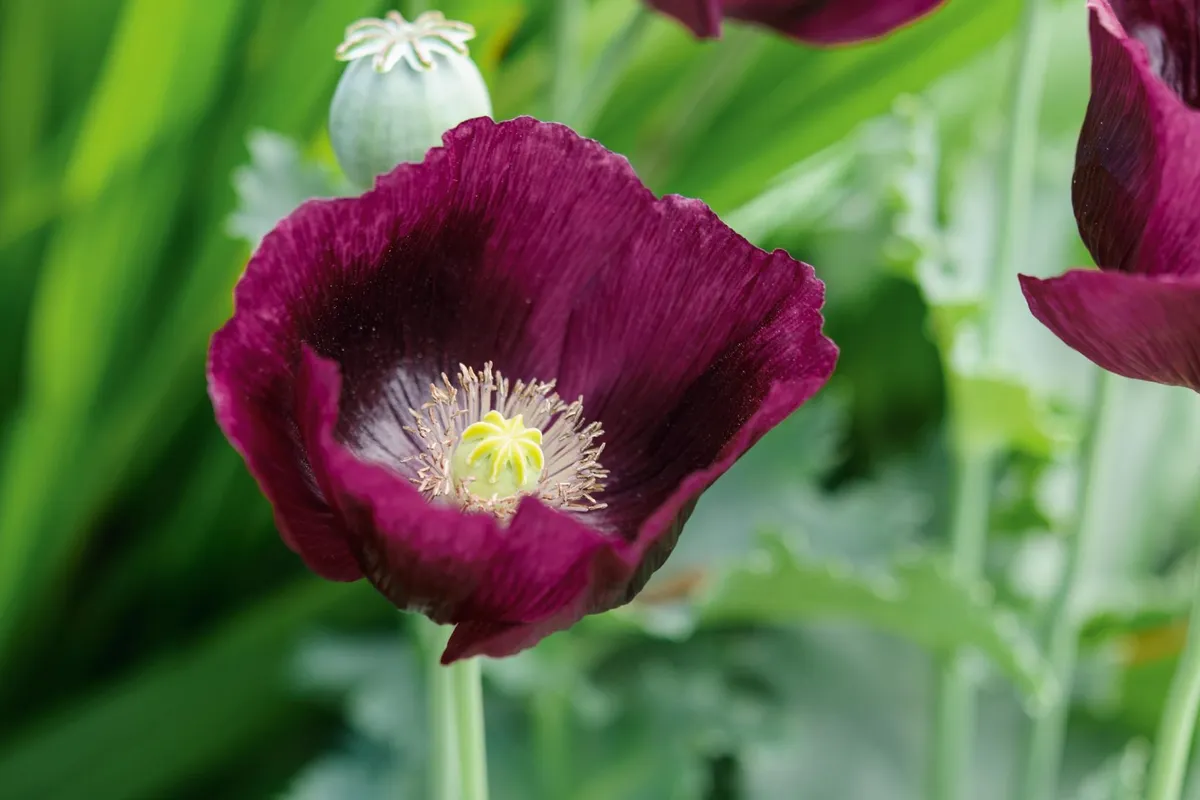
These big, sumptuous, silky bowls of deep purple are probably my favourite opium poppies. Designer Lauren Springer spent years removing all the opium poppies that weren’t deep purple from her garden. When they have only themselves to cross with they come almost entirely true. Best sown in pots or in situ to avoid disturbing the root. If you want to grow more than one colour, you’ll either have to remove all seedheads and sow fresh every year or resign yourself to the colours mixing and muddying back towards the wild, lavender opium poppy. Height 90cm-1.2m. Origin Species from Asia, bred in USA. Conditions Sun; good drainage. Hardiness USDA 7a-10b. Season June to July. DW
Clematis x durandii
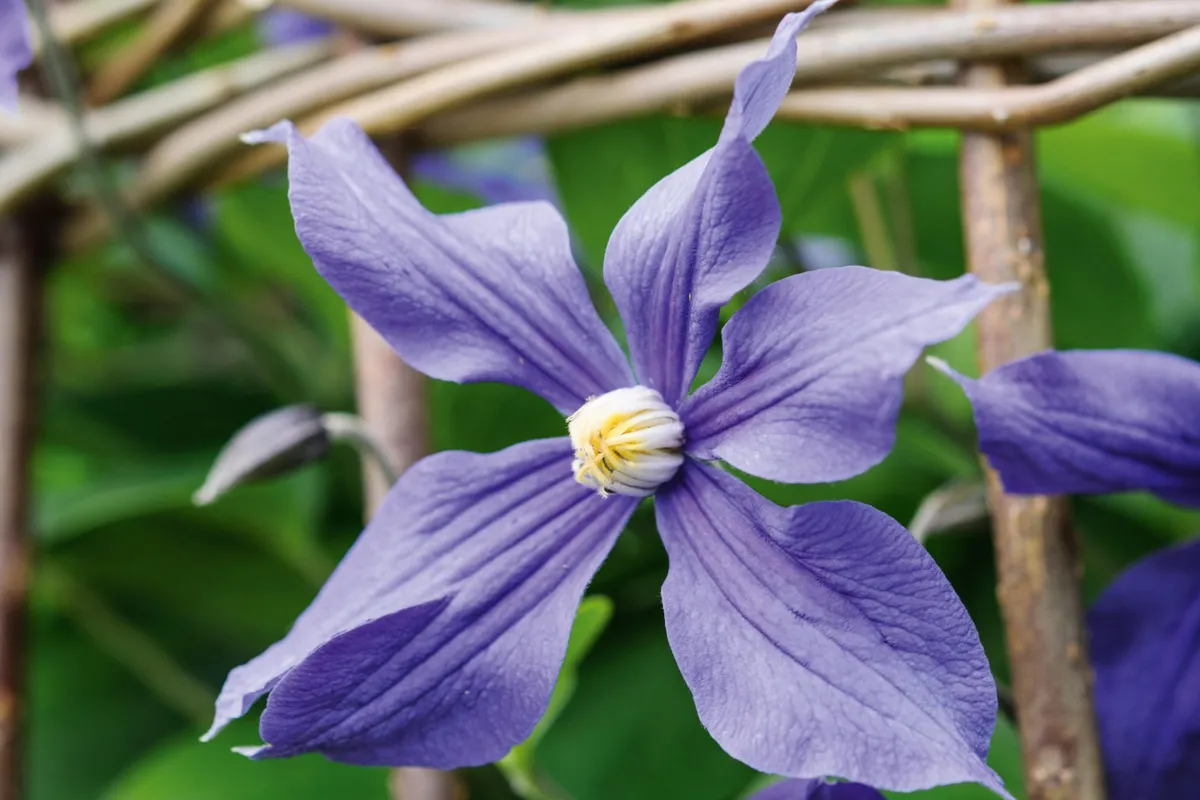
This herbaceous clematis does not climb, but if supported well will clamber. It is a bit of a handful – happy to straggle two metres in any direction –
but infinitely rewarding, producing showers of big, deep-blue-purple flowers month after month. Books will tell you to grow it through a shrub but you will never see the flowers that way. It is happiest with plenty of sun and a support of its own that you can keep tying it back into. It will grow up to two metres and then cascade back down, covered in flowers. AGM. Height 2m. Origin A 19th-century hybrid of Clematis integrifolia and Clematis lanuginosa. Conditions Good soil in sun or light shade. Hardiness RHS H6, USDA 5a-9b. Season June to September. DW
Centaurea atropurpurea
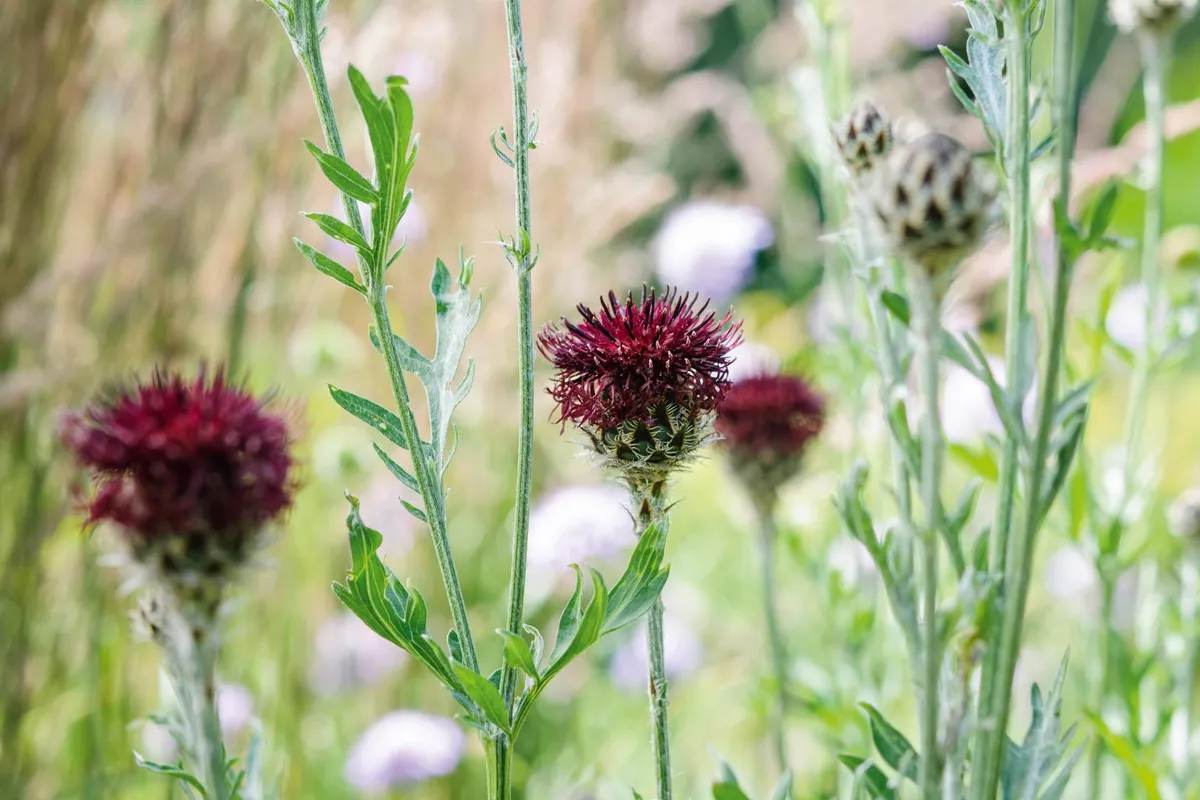
The fat buds of Centaurea atropurpurea emerge above intricately cut, grey leaves and are so beautifully patterned with shiny, dark-edged, overlapping scales that there seems almost no need for any flowers. But soon the top of the bud will be forced open by the dark, wine-red thistle flowers spreading outwards like a stain of blood. Flowering all through July and August, they add a touch of drama to the garden. The flowers are attractive to bees and other pollinators, and are good for cutting. Height 1m. Origin The Balkans. Conditions Sunny spot with good drainage. Hardiness RHS H7, USDA 5a-9b. Season July to August. DW
Eryngium x oliverianum
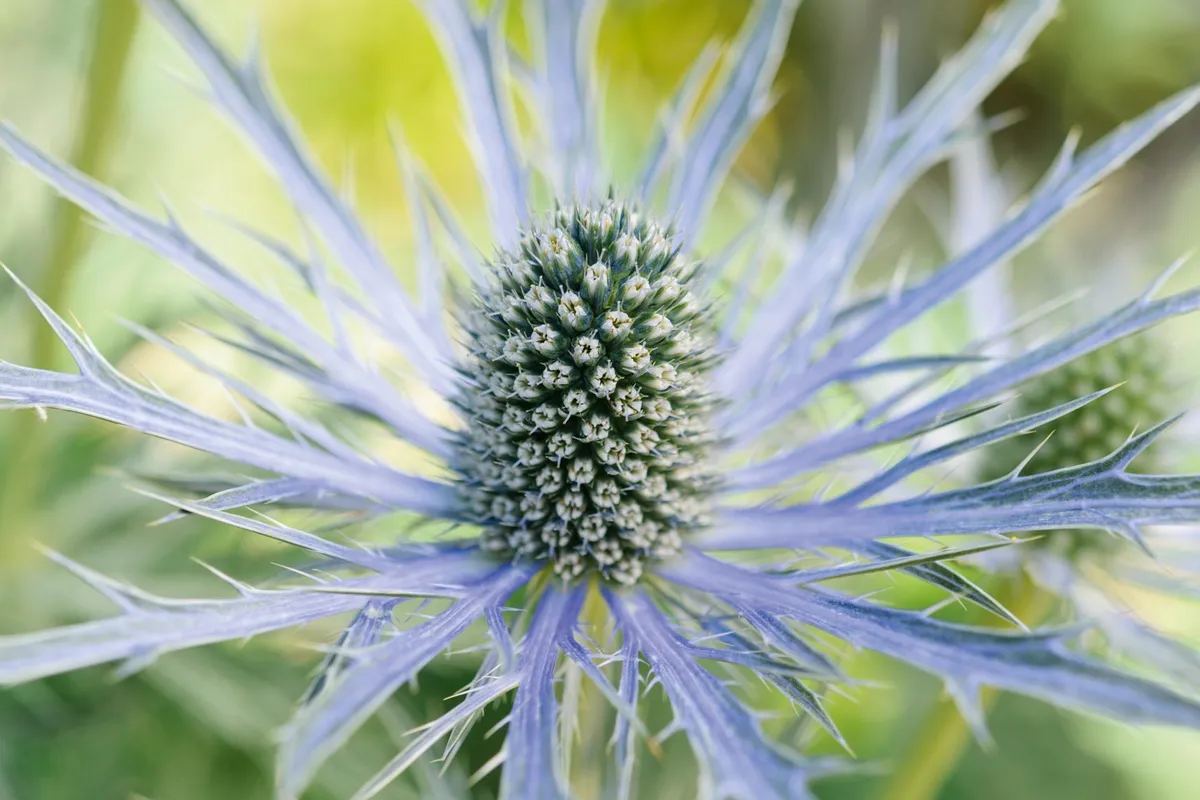
Everyone wants to grow Eryngium alpinum with its dramatic, big, soft blue ruff of lacy bracts. But Eryngium alpinum fades away, dwindling in all but the most perfect conditions, while Eryngium x oliverianum bulks up well and just gets better year on year. It has almost the same big, blue, lacy flowerheads, plus it has handsome jagged leaves on stout, purple stems. I grow both in my gravel garden, but I have to replant Eryngium alpinum every couple of years in order to keep it going. Both of them have handsome seedheads that stand well into winter. AGM. Height 90cm. Origin 19th-century hybrid. Conditions Full sun, good drainage. Hardiness RHS H6, USDA 5a-8b. Season July to August. DW
Looking for more on eryngium?
Veronicastrum virginicum ‘Album’
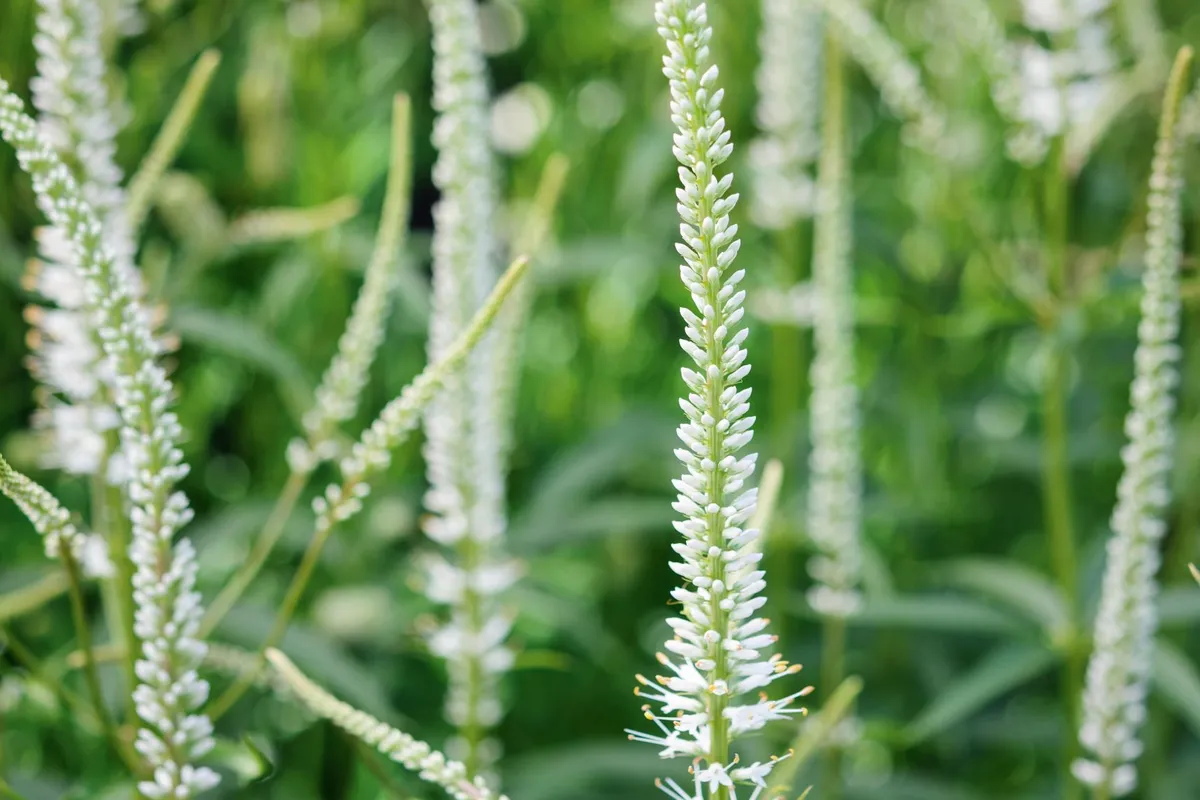
The height of restrained elegance, veronicastrums hold their dark-green leaves in layered whorls, giving a distinctive texture to the garden before the flowers appear. The white flower spikes surge upwards out of the foliage, each one densely clothed with tiny, white flowers. The myriad vertical spires look like a cluster of tall spears. It is the perfect crisp white accent to the billowing excesses of the late summer garden. Dark-brown seedheads follow, extending interest to January, and contrasting with the horizontal whorls of leaves below. AGM. Height 1.2-1.5m. Origin USA. Conditions Sun or light shade. Hardiness RHS H7, USDA 3a-8b. Season July to August. DW
Salvia ‘Amistad’
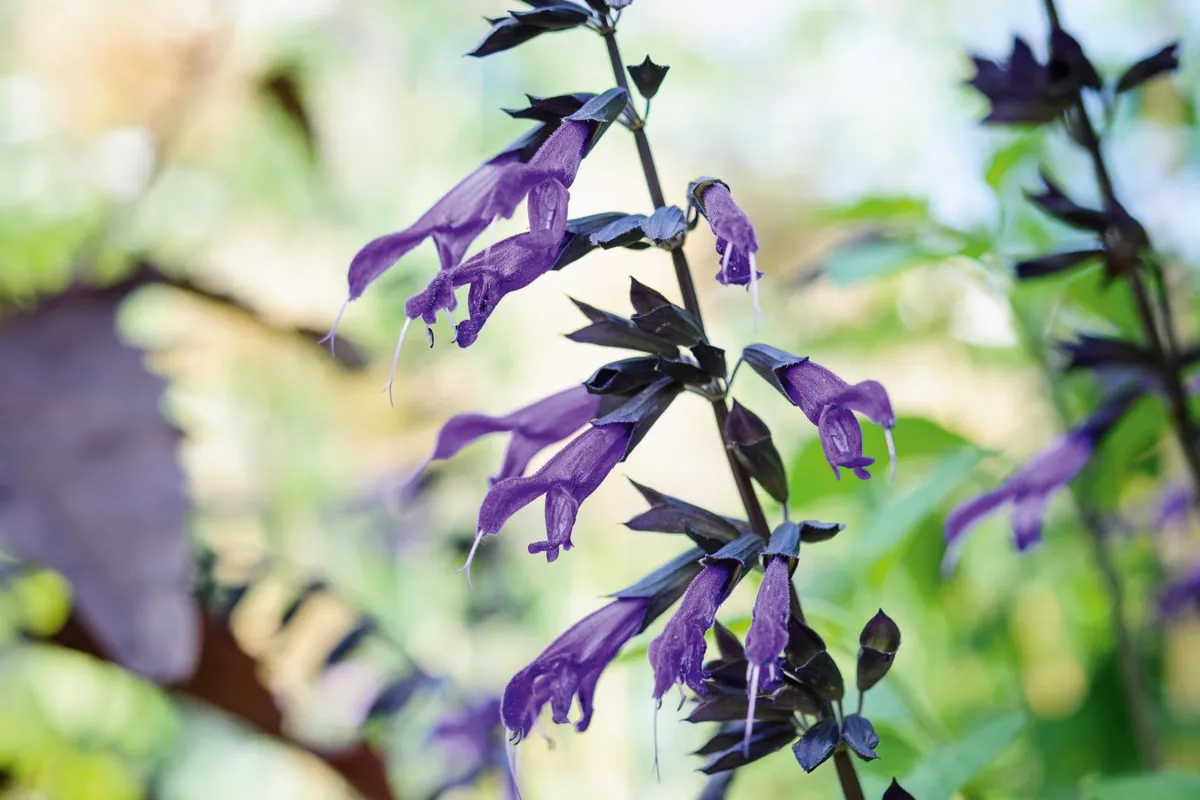
This cultivar, which was found by plant expert Rolando Uria in an Argentinian garden – amistad means friendship in Spanish – became the best salvia in
my salvia-ridden garden last summer. Deep, purple-blue flowers sprout from almost-black calyxes on long, dark stems. Both the young plants, which grew to a metre tall, and the older ones, which grew up to 1.5m tall, all flowered profusely from July right through to October. The vigorous bushy plants are self-supporting with glossy-green leaves. So far it has been hardy for me, but we have not yet had a hard winter to test it. AGM. Height 1.5m. Origin Cultivar found in Argentina. Conditions Full sun, good drainage. Hardiness RHS H3, USDA 8a-11. Season July to October. DW
Here's our salvia grow guide
Lilium leichtlinii
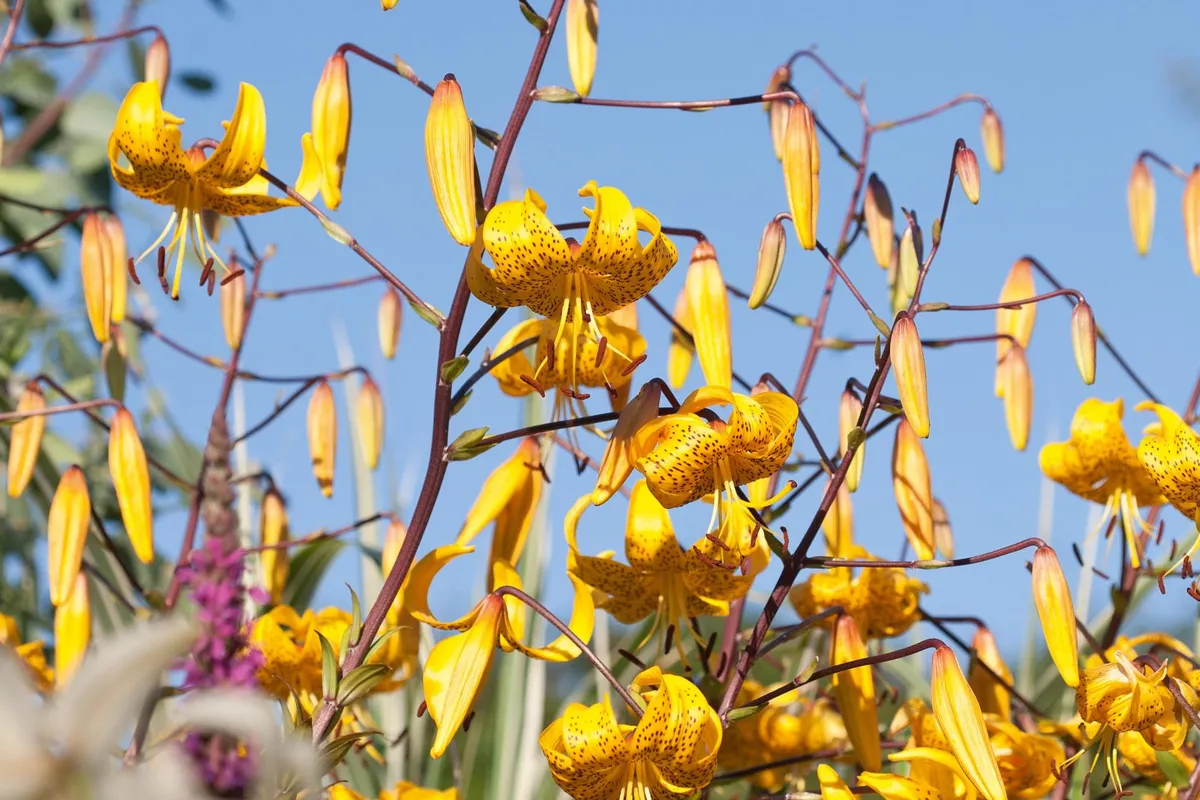
A chic Asiatic lily with charcoal brown shoots that emerge from the ground like prehistoric vegetation, before elongating into long, stiff and robust, shiny black stems that are clothed in dense whorls of thin, glossy, green leaves. Well spaced and uprightly angular, dark-coloured side branches hold oval buds, which are chocolate-purple flushed green in colour. These open into large, yellow dangling flowers. From the centre of each flower protrude elongated and elegantly reflexed filaments carrying prominent cinnamon anthers floating around a central carpel. Height 1.5m. Origin South Korea and Japan. Conditions Moist but free-draining, acid soil in sun or partial shade. Hardiness USDA 5b-11. Season July to August. FG
Tetrapanax papyrifer
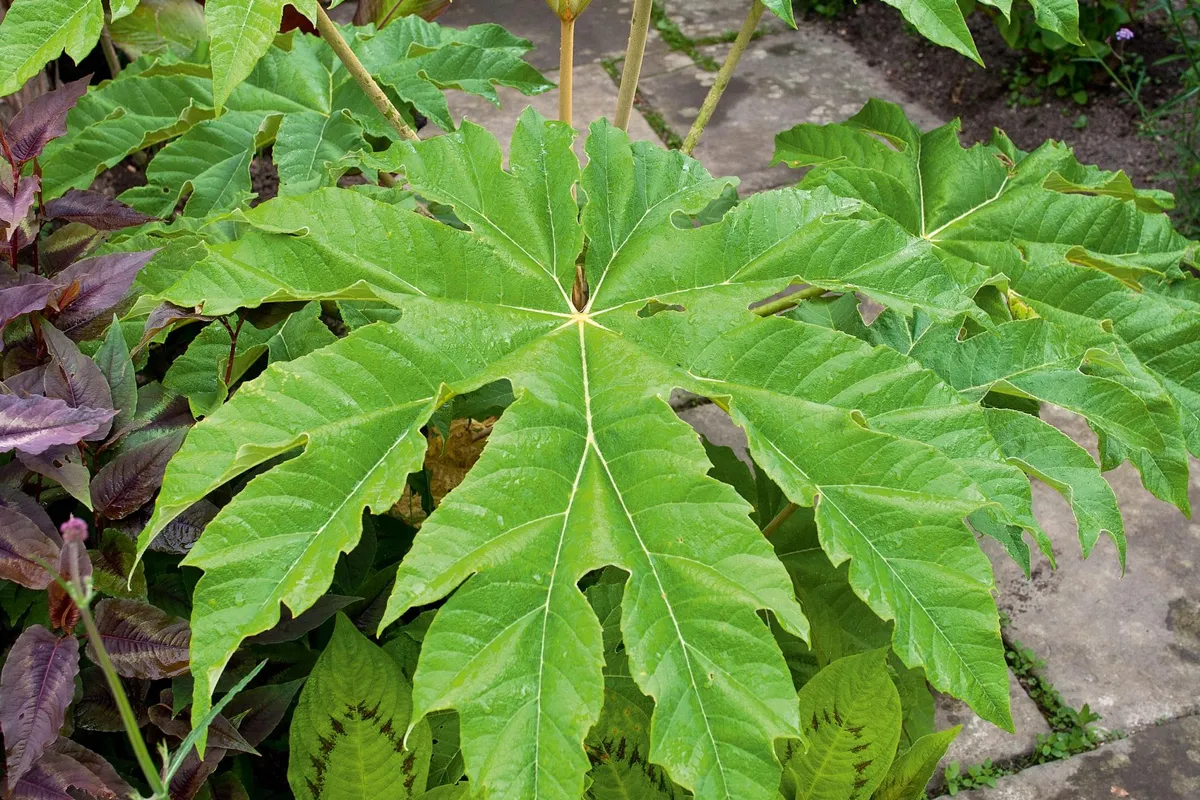
This is one of the most dramatic foliage plants. Huge, deeply lobed, green, palmate leaves up to two metres across, neatly dissected with cream veins, are held on arching stem, like vast fans. The undersides of each leaf, the leaf stalks, and all the active growing shoots are covered in a woolly indumentum. Established plants flower in late summer with ivy-like clusters of creamy flowers emerging from down-covered buds. Small, black berries containing seeds follow. Spreads extensively from underground roots and different clones exist, varying in leaf size and shape, colour, habit and hardiness. AGM. Height 3m. Origin Endemic to Taiwan. Conditions Sun or partial shade; good soil. Hardiness RHS H3, USDA 6a-10b. Season June to November. FG
Kniphofia ‘Tawny King’

The drama of kniphofia flowers is fleeting, so choose one with an impressive display. Flower spikes of ‘Tawny King’ are a brilliant graduation of pale orange to gold, fading slowly to creamy buff. Flowers are plentiful, provided the crowns are not overshadowed by neighbouring plants. Teamed with the deep-blue spikes of Nepeta grandiflora they speak of sunny days and scorching temperatures – even if the British summer is sometimes rather slow to oblige. AGM. Height 90cm. Origin Species originate mainly in the mountains and upland grasslands of South Africa, some in central Africa. Conditions Deep, fertile soil in full sun, benefiting from spring and autumn mulch. Hardiness RHS H5, USDA 6a-9b. Season June to July. CM
Here's our kniphofia grow guide
Tagetes 'Cinnabar'

Christopher Lloyd ‘worked up’ this French marigold at Great Dixter by selecting seeds from the tallest plants, resulting in a most elegant marigold. Gently fluted, branching stems carry dozens of single flowers with dark-green, finely cut pinnate leaves providing the backdrop. The flowers are 3.5cm wide and glow in rich terracotta red with each petal edged with a thin mustard-yellow line. A small yet prominent yellow boss decorates the centre. Flowering is long and plants warrant support from a cane. Save your own seed but keep mother plants away from other marigolds. Height 1.2m. Origin Species from Mexico. Conditions Full sun in most soils. Hardiness USDA 2a-11. Season June to November. FG
Aconitum ‘Stainless Steel’
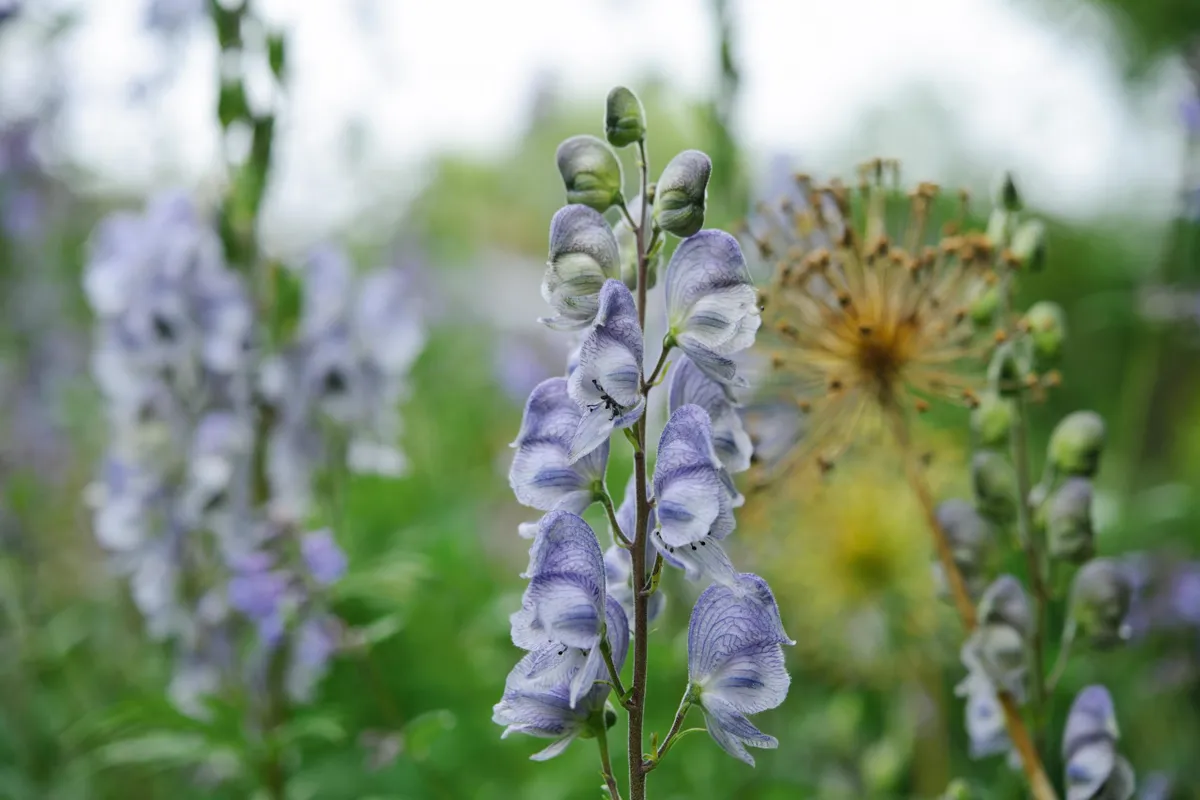
The steely grey-blue flowers of this plant have a ghostly quality in the low light of early evening. The beautiful dense spikes also make a fine cut flower. In borders at home, we plant them between clumps of Miscanthus sinensis ‘Morning Light’ where the silver variegated grass hides their untidy lower foliage – a common trait of aconitums. Aconitum contains toxins which can be absorbed through skin so prolonged exposure could be harmful. Wear gardening gloves to handle plants and flowers. AGM. Height 1m. Origin From a Dutch introduction of hybrid origin. Conditions Fertile, moisture-retentive soil in sun or light shade. Hardiness RHS H7, USDA 3a-7b. Season June to July. CM
Eryngium amethystinum
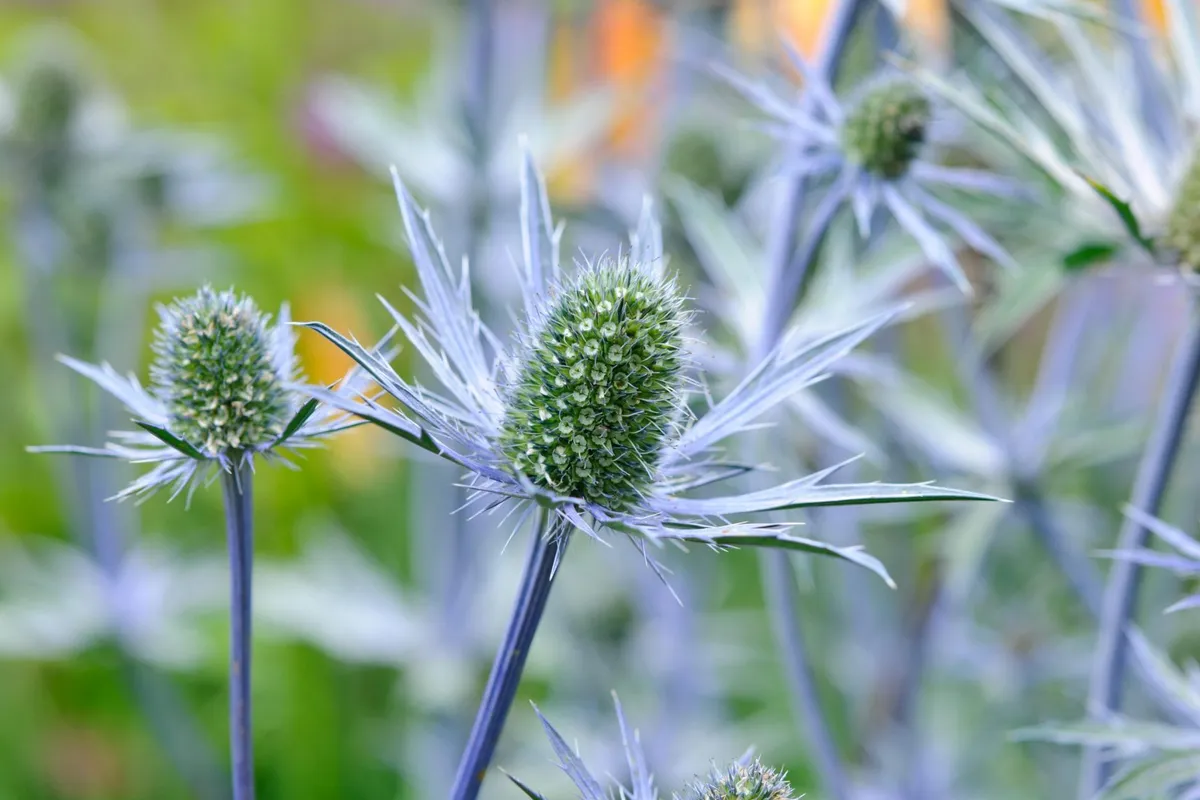
This plant steals in on the scene in early summer. Having quietly grown up through adjacent foliage almost unnoticed, it ripens in the sunlight to a magnificent blue and demands attention. Each flower resembles an intricate Elizabethan ruff, and is a veritable pollen magnet for bees and butterflies. The stiff and spiny structure is defensive, while ensuring the plant needs no artificial corsetry to stand. Best kept in lean soils to curb ultimate height and to aid their vertical stability. Height 60cm. Origin Italy, Sicily and the Balkans. Conditions Well-drained loam from mildly alkaline to acidic. Hardiness USDA 6a-10b. Season Best colour from June to August, though the structure endures longer. CM
Arisaema candidissimum

This has good, short foliage and beautifully scented flowers. They last longer because they don’t get pollinated. I never get fertile seed, which would be useful for a nurseryman. I decided this might be because my plants are one clone that is not self-fertile. Eventually I managed to track down a tuber grown from seed in New York State – which had to be a different clone. I planted it hoping it would cross-fertilise with my existing clump, giving me viable seed. I shouldn’t have bothered: the new plant finished flowering two weeks before the first of my flowers opened. AGM. Height 30cm. Origin China. Conditions Moist-ish shade. Hardiness RHS H4, USDA 6a-9b Season July and August. BB
Dierama pulcherrimum ‘Merlin’
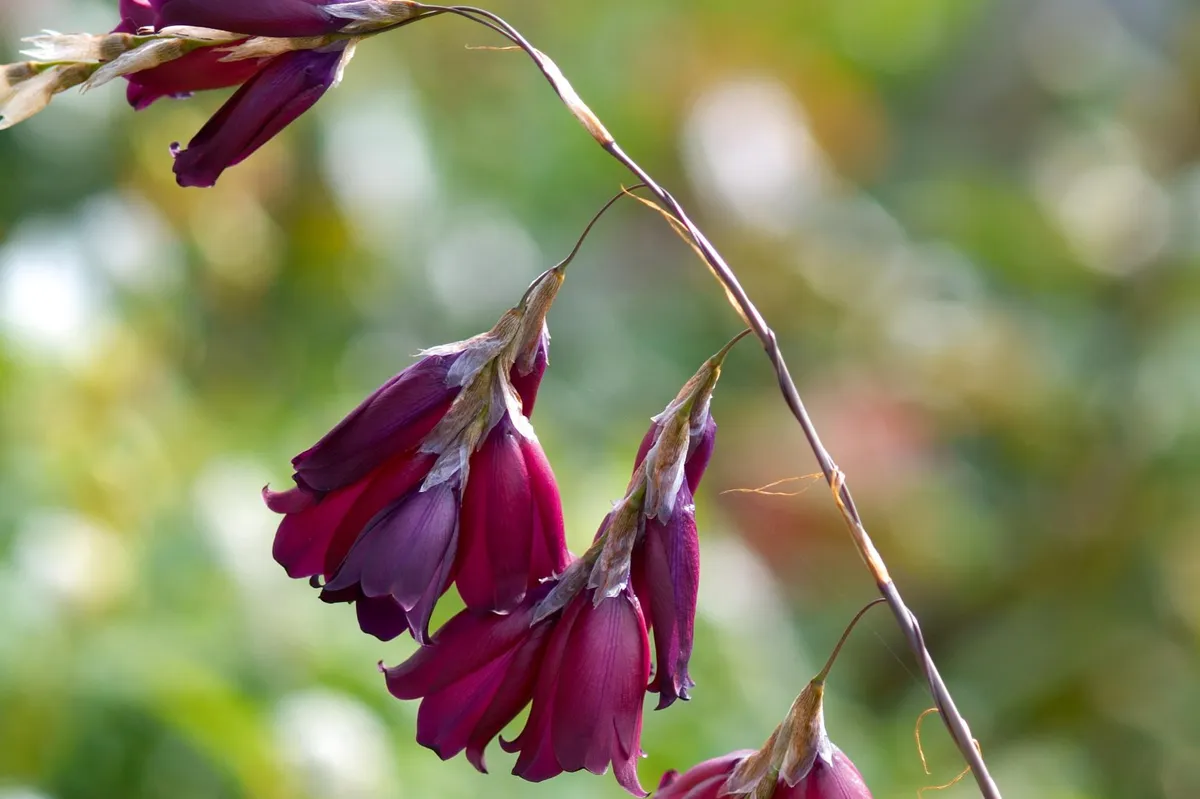
Until it became possible to reproduce tissue culture in a laboratory, it was almost impossible to find dieramas in the exact colour you wanted. Propagation by seed from richly coloured plants usually produced more washed-out colours, and reproduction by division caused plants to sulk. The colour everyone wanted was blackberry, in the cultivar ‘Blackbird’. Now anyone can have the deep black-red of ‘Merlin’. Horticulture’s Exclusive Brethren don’t like this: ‘It’s awfully egalitarian.’ Good thing too. The flowers drip from slender stems that constantly move in the breeze. Height 1m. Origin South Africa. Conditions Well-drained soil that’s not dry. Hardiness USDA 8a-10b. Season Flowers midsummer. BB
Rhodanthe chlorocephala subsp. rosea ‘Pierrot’

A delicate everlasting daisy, ideal for cutting and drying but also worthwhile in the garden, either in pots or borders. The flowers have translucent, white, crisp, papery petals in multiple rows forming ragged discs 2cm across, each offset by a charming, yellow-rimmed black eye. These are held on long, stiff, upright stems dressed in short, linear, grey leaves. Cheerful during the day, the flowers shut into neat globes by night before opening again the next morning. Sown outside in hot climates, but in the UK they’re best if sown under glass in March, pricked out into trays and planted out in May. Height 40cm. Origin A native of Australia. Conditions Full sun in well-drained soil. Season June to August. FG
Acanthus mollis ‘Rue Ledan’
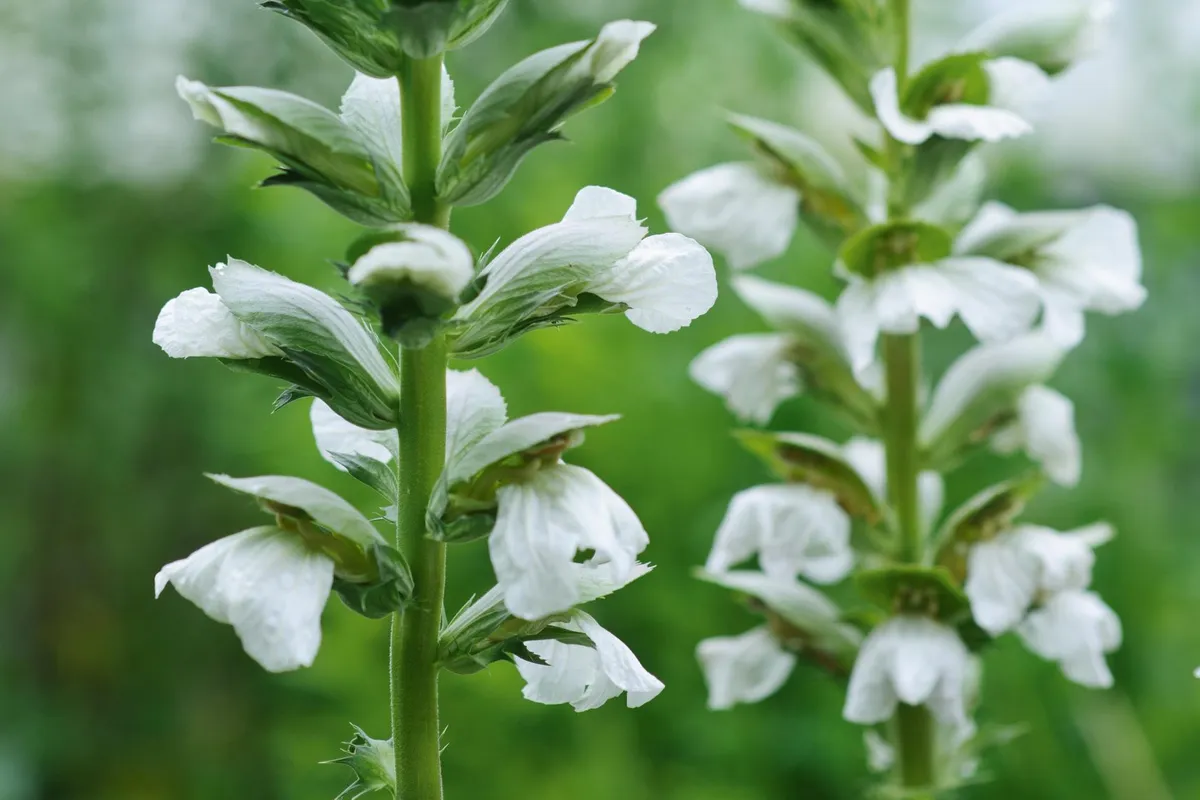
There is a classic elegance to this plant, its scrolling foliage a design feature on early Corinthian columns. This form has vigour and rigidity, sporting fine, turgid flower spikes of ghostly white. Stems stand for weeks without staking, and often endure late into autumn to provide winter structure and valuable bird food. A reliable mainstay in a prominent north-facing border. AGM. Height 1m. Origin Species native to Europe. This form originated in a garden in northern France. Conditions Most well-drained garden loam, will benefit from an early spring mulch of leaf mould. Hardiness RHS H6, USDA 6a-9b. Season July to October. CM
